You are using an outdated browser. Upgrade your browser today or install Google Chrome Frame to better experience this site.

Peru Traveler View
Travel health notices, vaccines and medicines, non-vaccine-preventable diseases, stay healthy and safe.
- Packing List
After Your Trip
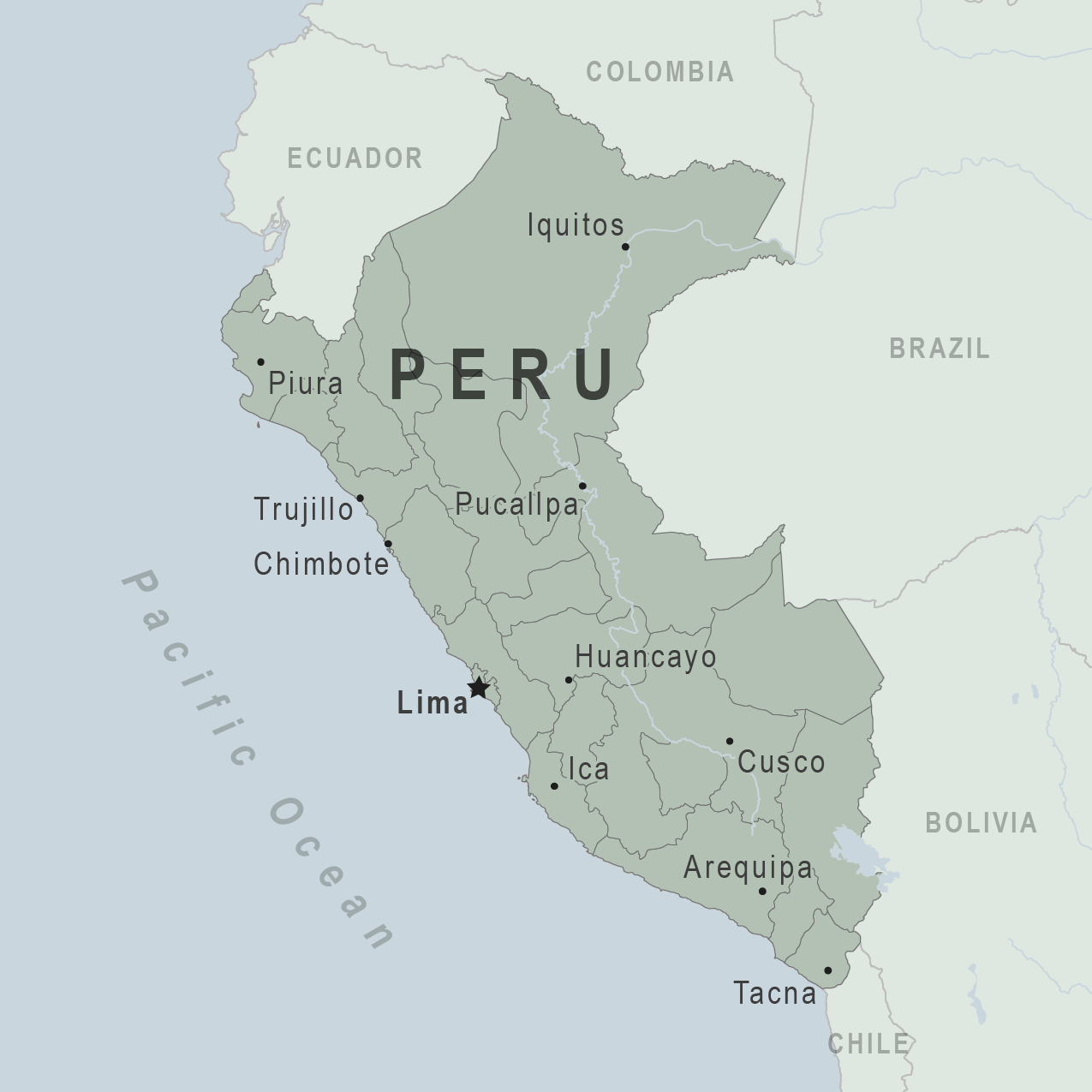
Be aware of current health issues in Peru. Learn how to protect yourself.
Level 1 Practice Usual Precautions
- Updated Oropouche Fever in the Americas June 27, 2024 There are outbreaks of Oropouche fever in parts of Brazil, Bolivia, Peru, Colombia, and Cuba. Travelers to affected areas should take steps to avoid bug bites. Destination List: Bolivia, Brazil, Colombia, Cuba, Peru
- Updated Global Dengue June 25, 2024 Dengue is a year-round risk in many parts of the world, with outbreaks commonly occurring every 2–5 years. Travelers to risk areas should prevent mosquito bites. Destination List: Afghanistan, Argentina, Brazil, Burkina Faso, Cambodia, Colombia, Costa Rica, Curaçao, Ecuador, including the Galápagos Islands, Ethiopia, Fiji, French Guiana (France), Guadeloupe, Guatemala, Guyana, Honduras, Indonesia, Laos, Mali, Martinique (France), Mauritius, Mexico, Nicaragua, Panama, Paraguay, Peru, Samoa, Singapore, Sri Lanka, Sudan, Uruguay
⇧ Top
Check the vaccines and medicines list and visit your doctor at least a month before your trip to get vaccines or medicines you may need. If you or your doctor need help finding a location that provides certain vaccines or medicines, visit the Find a Clinic page.
Routine vaccines
Recommendations.
Make sure you are up-to-date on all routine vaccines before every trip. Some of these vaccines include
- Chickenpox (Varicella)
- Diphtheria-Tetanus-Pertussis
- Flu (influenza)
- Measles-Mumps-Rubella (MMR)
Immunization schedules
All eligible travelers should be up to date with their COVID-19 vaccines. Please see Your COVID-19 Vaccination for more information.
COVID-19 vaccine
Chikungunya
There has been evidence of chikungunya virus transmission in Peru within the last 5 years. Chikungunya vaccination may be considered for the following travelers:
- People aged 65 years or older, especially those with underlying medical conditions, who may spend at least 2 weeks (cumulative time) in indoor or outdoor areas where mosquitoes are present in Peru, OR
- People planning to stay in Peru for a cumulative period of 6 months or more
Chikungunya - CDC Yellow Book
Hepatitis A
Recommended for unvaccinated travelers one year old or older going to Peru.
Infants 6 to 11 months old should also be vaccinated against Hepatitis A. The dose does not count toward the routine 2-dose series.
Travelers allergic to a vaccine component or who are younger than 6 months should receive a single dose of immune globulin, which provides effective protection for up to 2 months depending on dosage given.
Unvaccinated travelers who are over 40 years old, immunocompromised, or have chronic medical conditions planning to depart to a risk area in less than 2 weeks should get the initial dose of vaccine and at the same appointment receive immune globulin.
Hepatitis A - CDC Yellow Book
Dosing info - Hep A
Hepatitis B
Recommended for unvaccinated travelers younger than 60 years old traveling to Peru. Unvaccinated travelers 60 years and older may get vaccinated before traveling to Peru.
Hepatitis B - CDC Yellow Book
Dosing info - Hep B
CDC recommends that travelers going to certain areas of Peru take prescription medicine to prevent malaria. Depending on the medicine you take, you will need to start taking this medicine multiple days before your trip, as well as during and after your trip. Talk to your doctor about which malaria medication you should take.
Find country-specific information about malaria.
Malaria - CDC Yellow Book
Considerations when choosing a drug for malaria prophylaxis (CDC Yellow Book)
Malaria information for Peru.
Cases of measles are on the rise worldwide. Travelers are at risk of measles if they have not been fully vaccinated at least two weeks prior to departure, or have not had measles in the past, and travel internationally to areas where measles is spreading.
All international travelers should be fully vaccinated against measles with the measles-mumps-rubella (MMR) vaccine, including an early dose for infants 6–11 months, according to CDC’s measles vaccination recommendations for international travel .
Measles (Rubeola) - CDC Yellow Book
Dogs infected with rabies are sometimes found in Peru.
Rabies is also commonly found in some terrestrial wildlife species and bats.
If rabies exposures occur while in Peru, rabies vaccines may only be available in larger suburban/urban medical facilities.
Rabies pre-exposure vaccination considerations include whether travelers 1) will be performing occupational or recreational activities that increase risk for exposure to potentially rabid animals and 2) might have difficulty getting prompt access to safe post-exposure prophylaxis.
Please consult with a healthcare provider to determine whether you should receive pre-exposure vaccination before travel.
For more information, see country rabies status assessments .
Rabies - CDC Yellow Book
Recommended for most travelers, especially those staying with friends or relatives or visiting smaller cities or rural areas.
Typhoid - CDC Yellow Book
Dosing info - Typhoid
Yellow Fever
Recommended for travelers ≥9 months old going to areas <2,300 m (≈7,550 ft) elevation in the regions of Amazonas, Cusco, Huánuco, Junín, Loreto, Madre de Dios, Pasco, Puno, San Martín, and Ucayali, and designated areas of Ancash (far northeast), Apurímac (far north), Ayacucho (north and northeast), Cajamarca (north and east), Huancavelica (far north), La Libertad (east), and Piura (east). Generally not recommended for travel limited to the following areas west of the Andes: the regions of Lambayeque and Tumbes, and designated areas of Cajamarca (west-central), and Piura (west). Not recommended for travel limited to areas >2,300 m (≈7,550 ft) elevation, areas west of the Andes not listed above, the city of Lima (the capital), and the highland tourist areas (the city of Cusco, the Inca Trail, and Machu Picchu).
Yellow Fever - CDC Yellow Book
Avoid contaminated water
Leptospirosis
How most people get sick (most common modes of transmission)
- Touching urine or other body fluids from an animal infected with leptospirosis
- Swimming or wading in urine-contaminated fresh water, or contact with urine-contaminated mud
- Drinking water or eating food contaminated with animal urine
- Avoid contaminated water and soil
- Avoid floodwater
Clinical Guidance
Avoid bug bites, chagas disease (american trypanosomiasis).
- Accidentally rub feces (poop) of the triatomine bug into the bug bite, other breaks in the skin, your eyes, or mouth
- From pregnant woman to her baby, contaminated blood products (transfusions), or contaminated food or drink.
- Avoid Bug Bites
Chagas disease
- Mosquito bite
Leishmaniasis
- Sand fly bite
- An infected pregnant woman can spread it to her unborn baby
Airborne & droplet
- Breathing in air or accidentally eating food contaminated with the urine, droppings, or saliva of infected rodents
- Bite from an infected rodent
- Less commonly, being around someone sick with hantavirus (only occurs with Andes virus)
- Avoid rodents and areas where they live
- Avoid sick people
Tuberculosis (TB)
- Breathe in TB bacteria that is in the air from an infected and contagious person coughing, speaking, or singing.
Learn actions you can take to stay healthy and safe on your trip. Vaccines cannot protect you from many diseases in Peru, so your behaviors are important.
Eat and drink safely
Food and water standards around the world vary based on the destination. Standards may also differ within a country and risk may change depending on activity type (e.g., hiking versus business trip). You can learn more about safe food and drink choices when traveling by accessing the resources below.
- Choose Safe Food and Drinks When Traveling
- Water Treatment Options When Hiking, Camping or Traveling
- Global Water, Sanitation and Hygiene (WASH)
- Avoid Contaminated Water During Travel
You can also visit the Department of State Country Information Pages for additional information about food and water safety.
Prevent bug bites
Bugs (like mosquitoes, ticks, and fleas) can spread a number of diseases in Peru. Many of these diseases cannot be prevented with a vaccine or medicine. You can reduce your risk by taking steps to prevent bug bites.
What can I do to prevent bug bites?
- Cover exposed skin by wearing long-sleeved shirts, long pants, and hats.
- Use an appropriate insect repellent (see below).
- Use permethrin-treated clothing and gear (such as boots, pants, socks, and tents). Do not use permethrin directly on skin.
- Stay and sleep in air-conditioned or screened rooms.
- Use a bed net if the area where you are sleeping is exposed to the outdoors.
What type of insect repellent should I use?
- FOR PROTECTION AGAINST TICKS AND MOSQUITOES: Use a repellent that contains 20% or more DEET for protection that lasts up to several hours.
- Picaridin (also known as KBR 3023, Bayrepel, and icaridin)
- Oil of lemon eucalyptus (OLE) or para-menthane-diol (PMD)
- 2-undecanone
- Always use insect repellent as directed.
What should I do if I am bitten by bugs?
- Avoid scratching bug bites, and apply hydrocortisone cream or calamine lotion to reduce the itching.
- Check your entire body for ticks after outdoor activity. Be sure to remove ticks properly.
What can I do to avoid bed bugs?
Although bed bugs do not carry disease, they are an annoyance. See our information page about avoiding bug bites for some easy tips to avoid them. For more information on bed bugs, see Bed Bugs .
For more detailed information on avoiding bug bites, see Avoid Bug Bites .
Some diseases in Peru—such as dengue, Zika, louse-borne typhus, and Chagas disease—are spread by bugs and cannot be prevented with a vaccine. Follow the insect avoidance measures described above to prevent these and other illnesses.
Stay safe outdoors
If your travel plans in Peru include outdoor activities, take these steps to stay safe and healthy during your trip.
- Stay alert to changing weather conditions and adjust your plans if conditions become unsafe.
- Prepare for activities by wearing the right clothes and packing protective items, such as bug spray, sunscreen, and a basic first aid kit.
- Consider learning basic first aid and CPR before travel. Bring a travel health kit with items appropriate for your activities.
- If you are outside for many hours in heat, eat salty snacks and drink water to stay hydrated and replace salt lost through sweating.
- Protect yourself from UV radiation : use sunscreen with an SPF of at least 15, wear protective clothing, and seek shade during the hottest time of day (10 a.m.–4 p.m.).
- Be especially careful during summer months and at high elevation. Because sunlight reflects off snow, sand, and water, sun exposure may be increased during activities like skiing, swimming, and sailing.
- Very cold temperatures can be dangerous. Dress in layers and cover heads, hands, and feet properly if you are visiting a cold location.
Stay safe around water
- Swim only in designated swimming areas. Obey lifeguards and warning flags on beaches.
- Practice safe boating—follow all boating safety laws, do not drink alcohol if driving a boat, and always wear a life jacket.
- Do not dive into shallow water.
- Do not swim in freshwater in developing areas or where sanitation is poor.
- Avoid swallowing water when swimming. Untreated water can carry germs that make you sick.
- To prevent infections, wear shoes on beaches where there may be animal waste.
Many popular destinations in Peru, such as Machu Picchu, are at high altitudes. You may experience altitude sickness as a result. Talk to your doctor about ways to prevent and treat altitude sickness.
See Travel to High Altitudes .
Leptospirosis, a bacterial infection that can be spread in fresh water, is found in Peru. Avoid swimming in fresh, unchlorinated water, such as lakes, ponds, or rivers.
Keep away from animals
Most animals avoid people, but they may attack if they feel threatened, are protecting their young or territory, or if they are injured or ill. Animal bites and scratches can lead to serious diseases such as rabies.
Follow these tips to protect yourself:
- Do not touch or feed any animals you do not know.
- Do not allow animals to lick open wounds, and do not get animal saliva in your eyes or mouth.
- Avoid rodents and their urine and feces.
- Traveling pets should be supervised closely and not allowed to come in contact with local animals.
- If you wake in a room with a bat, seek medical care immediately. Bat bites may be hard to see.
All animals can pose a threat, but be extra careful around dogs, bats, monkeys, sea animals such as jellyfish, and snakes. If you are bitten or scratched by an animal, immediately:
- Wash the wound with soap and clean water.
- Go to a doctor right away.
- Tell your doctor about your injury when you get back to the United States.
Consider buying medical evacuation insurance. Rabies is a deadly disease that must be treated quickly, and treatment may not be available in some countries.
Reduce your exposure to germs
Follow these tips to avoid getting sick or spreading illness to others while traveling:
- Wash your hands often, especially before eating.
- If soap and water aren’t available, clean hands with hand sanitizer (containing at least 60% alcohol).
- Don’t touch your eyes, nose, or mouth. If you need to touch your face, make sure your hands are clean.
- Cover your mouth and nose with a tissue or your sleeve (not your hands) when coughing or sneezing.
- Try to avoid contact with people who are sick.
- If you are sick, stay home or in your hotel room, unless you need medical care.
Avoid sharing body fluids
Diseases can be spread through body fluids, such as saliva, blood, vomit, and semen.
Protect yourself:
- Use latex condoms correctly.
- Do not inject drugs.
- Limit alcohol consumption. People take more risks when intoxicated.
- Do not share needles or any devices that can break the skin. That includes needles for tattoos, piercings, and acupuncture.
- If you receive medical or dental care, make sure the equipment is disinfected or sanitized.
Know how to get medical care while traveling
Plan for how you will get health care during your trip, should the need arise:
- Carry a list of local doctors and hospitals at your destination.
- Review your health insurance plan to determine what medical services it would cover during your trip. Consider purchasing travel health and medical evacuation insurance.
- Carry a card that identifies, in the local language, your blood type, chronic conditions or serious allergies, and the generic names of any medications you take.
- Some prescription drugs may be illegal in other countries. Call Peru’s embassy to verify that all of your prescription(s) are legal to bring with you.
- Bring all the medicines (including over-the-counter medicines) you think you might need during your trip, including extra in case of travel delays. Ask your doctor to help you get prescriptions filled early if you need to.
Many foreign hospitals and clinics are accredited by the Joint Commission International. A list of accredited facilities is available at their website ( www.jointcommissioninternational.org ).
In some countries, medicine (prescription and over-the-counter) may be substandard or counterfeit. Bring the medicines you will need from the United States to avoid having to buy them at your destination.
Malaria is a risk in some parts of Peru. If you are going to a risk area, fill your malaria prescription before you leave, and take enough with you for the entire length of your trip. Follow your doctor’s instructions for taking the pills; some need to be started before you leave.
Select safe transportation
Motor vehicle crashes are the #1 killer of healthy US citizens in foreign countries.
In many places cars, buses, large trucks, rickshaws, bikes, people on foot, and even animals share the same lanes of traffic, increasing the risk for crashes.
Be smart when you are traveling on foot.
- Use sidewalks and marked crosswalks.
- Pay attention to the traffic around you, especially in crowded areas.
- Remember, people on foot do not always have the right of way in other countries.
Riding/Driving
Choose a safe vehicle.
- Choose official taxis or public transportation, such as trains and buses.
- Ride only in cars that have seatbelts.
- Avoid overcrowded, overloaded, top-heavy buses and minivans.
- Avoid riding on motorcycles or motorbikes, especially motorbike taxis. (Many crashes are caused by inexperienced motorbike drivers.)
- Choose newer vehicles—they may have more safety features, such as airbags, and be more reliable.
- Choose larger vehicles, which may provide more protection in crashes.
Think about the driver.
- Do not drive after drinking alcohol or ride with someone who has been drinking.
- Consider hiring a licensed, trained driver familiar with the area.
- Arrange payment before departing.
Follow basic safety tips.
- Wear a seatbelt at all times.
- Sit in the back seat of cars and taxis.
- When on motorbikes or bicycles, always wear a helmet. (Bring a helmet from home, if needed.)
- Avoid driving at night; street lighting in certain parts of Peru may be poor.
- Do not use a cell phone or text while driving (illegal in many countries).
- Travel during daylight hours only, especially in rural areas.
- If you choose to drive a vehicle in Peru, learn the local traffic laws and have the proper paperwork.
- Get any driving permits and insurance you may need. Get an International Driving Permit (IDP). Carry the IDP and a US-issued driver's license at all times.
- Check with your auto insurance policy's international coverage, and get more coverage if needed. Make sure you have liability insurance.
- Avoid using local, unscheduled aircraft.
- If possible, fly on larger planes (more than 30 seats); larger airplanes are more likely to have regular safety inspections.
- Try to schedule flights during daylight hours and in good weather.
Medical Evacuation Insurance
If you are seriously injured, emergency care may not be available or may not meet US standards. Trauma care centers are uncommon outside urban areas. Having medical evacuation insurance can be helpful for these reasons.
Helpful Resources
Road Safety Overseas (Information from the US Department of State): Includes tips on driving in other countries, International Driving Permits, auto insurance, and other resources.
The Association for International Road Travel has country-specific Road Travel Reports available for most countries for a minimal fee.
For information traffic safety and road conditions in Peru, see Travel and Transportation on US Department of State's country-specific information for Peru .
Maintain personal security
Use the same common sense traveling overseas that you would at home, and always stay alert and aware of your surroundings.
Before you leave
- Research your destination(s), including local laws, customs, and culture.
- Monitor travel advisories and alerts and read travel tips from the US Department of State.
- Enroll in the Smart Traveler Enrollment Program (STEP) .
- Leave a copy of your itinerary, contact information, credit cards, and passport with someone at home.
- Pack as light as possible, and leave at home any item you could not replace.
While at your destination(s)
- Carry contact information for the nearest US embassy or consulate .
- Carry a photocopy of your passport and entry stamp; leave the actual passport securely in your hotel.
- Follow all local laws and social customs.
- Do not wear expensive clothing or jewelry.
- Always keep hotel doors locked, and store valuables in secure areas.
- If possible, choose hotel rooms between the 2nd and 6th floors.
To call for emergency services while in Peru, dial 116 for the fire department and 105 for the police. Write these numbers down to carry with you during your trip.
Learn as much as you can about Peru before you travel there. A good place to start is the country-specific information on Peru from the US Department of State.
Healthy Travel Packing List
Use the Healthy Travel Packing List for Peru for a list of health-related items to consider packing for your trip. Talk to your doctor about which items are most important for you.
Why does CDC recommend packing these health-related items?
It’s best to be prepared to prevent and treat common illnesses and injuries. Some supplies and medicines may be difficult to find at your destination, may have different names, or may have different ingredients than what you normally use.
If you are not feeling well after your trip, you may need to see a doctor. If you need help finding a travel medicine specialist, see Find a Clinic . Be sure to tell your doctor about your travel, including where you went and what you did on your trip. Also tell your doctor if you were bitten or scratched by an animal while traveling.
If your doctor prescribed antimalarial medicine for your trip, keep taking the rest of your pills after you return home. If you stop taking your medicine too soon, you could still get sick.
Malaria is always a serious disease and may be a deadly illness. If you become ill with a fever either while traveling in a malaria-risk area or after you return home (for up to 1 year), you should seek immediate medical attention and should tell the doctor about your travel history.
For more information on what to do if you are sick after your trip, see Getting Sick after Travel .
Map Disclaimer - The boundaries and names shown and the designations used on maps do not imply the expression of any opinion whatsoever on the part of the Centers for Disease Control and Prevention concerning the legal status of any country, territory, city or area or of its authorities, or concerning the delimitation of its frontiers or boundaries. Approximate border lines for which there may not yet be full agreement are generally marked.
Other Destinations
If you need help finding travel information:
Message & data rates may apply. CDC Privacy Policy
File Formats Help:
- Adobe PDF file
- Microsoft PowerPoint file
- Microsoft Word file
- Microsoft Excel file
- Audio/Video file
- Apple Quicktime file
- RealPlayer file
- Zip Archive file
Exit Notification / Disclaimer Policy
- The Centers for Disease Control and Prevention (CDC) cannot attest to the accuracy of a non-federal website.
- Linking to a non-federal website does not constitute an endorsement by CDC or any of its employees of the sponsors or the information and products presented on the website.
- You will be subject to the destination website's privacy policy when you follow the link.
- CDC is not responsible for Section 508 compliance (accessibility) on other federal or private website.
Security Alert May 17, 2024
Worldwide caution, update may 10, 2024, information for u.s. citizens in the middle east.
- Travel Advisories |
- Contact Us |
- MyTravelGov |
Find U.S. Embassies & Consulates
Travel.state.gov, congressional liaison, special issuance agency, u.s. passports, international travel, intercountry adoption, international parental child abduction, records and authentications, popular links, travel advisories, mytravelgov, stay connected, legal resources, legal information, info for u.s. law enforcement, replace or certify documents.
Before You Go
Learn About Your Destination
While Abroad
Emergencies
Share this page:
Travel Advisory November 15, 2023
Peru - level 2: exercise increased caution.
Last Update: Reissued with updates to crime information.
Exercise increased caution due to crime, civil unrest, and the possibility of kidnapping . Some areas have increased risk. Read the entire Travel Advisory.
Do not travel to:
- The Colombian-Peruvian border area in the Loreto Region due to crime .
- The Valley of the Apurímac, Ene, and Mantaro Rivers (VRAEM), including areas within the Departments of Ayacucho, Cusco, Huancavelica, and Junin, due to crime and terrorism .
Country Summary : Crime, including petty theft, carjackings, muggings, assaults, and other violent crime, is common in Peru and can occur during daylight hours despite the presence of many witnesses. Kidnapping is rare, but does occur. The risk of crime increases at night. Organized criminal groups have been known to use roadblocks to rob victims in areas outside of the capital city of Lima.
Demonstrations occur regularly throughout the country. Public demonstrations can take place for a variety of political and economic issues. Demonstrations can cause the shutdown of local roads, trains, and major highways, often without prior notice or estimated reopening timelines. Road closures may significantly reduce access to public transportation and airports and may disrupt travel both within and between cities.
U.S. travelers participating in Ayahuasca and Kambo ceremonies should be aware that numerous persons, including U.S. citizens, have reported that while under the influence of these substances, they have witnessed or been victims of sexual assault, rape, theft, serious health problems and injuries, and even death.
Currently, U.S. government personnel cannot travel freely throughout Peru for security reasons . Read the country information page for additional information on travel to Peru.
If you decide to travel to Peru:
- Be aware of your surroundings.
- Monitor local media for breaking events and adjust your plans as needed.
- Enroll in the Smart Traveler Enrollment Program ( STEP ) to receive Alerts and make it easier to locate you in an emergency.
- Follow the Department of State on Facebook and Twitter .
- Follow the U.S. Embassy on Facebook and Twitter .
- Review the U.S. Embassy webpage .
- Review the Country Security Report for Peru.
- Prepare a contingency plan for emergency situations. Review the Traveler’s Checklist .
- Visit the CDC page for the latest Travel Health Information related to your travel.
Colombian-Peruvian border area in the Loreto Region – Level 4: Do Not Travel
Drug trafficking and other criminal activity, combined with poor infrastructure, limits the capability and effectiveness of Peruvian law enforcement in this area.
The U.S. government has limited ability to provide emergency services to U.S. citizens as U.S. government personnel are restricted from traveling within 20 kilometers of the border with Colombia in the Loreto region, except on the Amazon River itself, without permission. This includes travel on the Putumayo River, which forms most of the Peru-Colombia border.
U.S. government personnel must receive advance permission for any travel to the Peruvian-Colombian border.
Valley of the Apurímac, Ene, and Mantaro Rivers (VRAEM) includes areas within the Departments of Ayacucho, Cusco, Huancavelica, and Junin – Level 4: Do Not Travel
Remnants of the Shining Path terrorist group are active in the VRAEM. The group may attack with little or no warning, targeting Peruvian government installations and personnel.
Drug trafficking and other criminal activity, combined with poor infrastructure, limit the capability and effectiveness of Peruvian law enforcement in this area.
U.S. government personnel are restricted from traveling in the VRAEM except for certain areas during daylight hours. U.S. government personnel must receive advance permission for any travel to the VRAEM. The U.S. government has limited ability to provide emergency services to U.S. citizens due to these travel restrictions.
Visit our website for Travel to High-Risk Areas .
Embassy Messages
View Alerts and Messages Archive
Quick Facts
Must have six months validity at time of entry.
One page required for entry stamp.
Free, issued at the port of entry.
None Required.
$30,000 USD. More than $10,000 USD must be declared upon entry.
Same as entry.
Embassies and Consulates
U.S. Embassy Lima Avenida La Encalada cdra. 17 s/n Surco, Lima 33 Peru Telephone: + (51)(1) 618-2000 Emergency After-Hours Telephone: + (51)(1) 618-2000 Fax: + (51) (1) 618-2724 Email: [email protected]
U.S. Consular Agency - Cusco Av. El Sol 449, Suite #201 Cusco, Peru Telephone: + (51)(84) 231-474 Emergency After-Hours Telephone: + (51)(1) 618-2000 Fax: + (51)(84) 245-102
Email: [email protected]
Destination Description
See the Department of State’s Fact Sheet on Peru for information on U.S.-Peru relations.
Entry, Exit and Visa Requirements
COVID-19 Requirements
- There are no COVID-related entry requirements for U.S. citizens.
Requirements for Entry :
- A passport with six months validity is required to enter Peru. Migraciones (Immigration) authorities may also require evidence of return/onward travel.
- Be sure your date and place of entry is officially documented by Migraciones, whether you arrive at a port, airport, or land border.
- Your length of approved stay will be determined by border officials at the time of entry, and can range from 30 to 183 days. Extensions for tourists are usually not approved, and overstays result in fines.
- The Embassy is unable to assist if you are denied entry. Peruvian immigration requires airlines to return travelers who are denied entry to their point of origin.
Requirements for Exit :
- If you do not have an entry record, you will not be allowed to exit the country until immigration authorities confirm the time and place of your entry into the country. This can be a difficult process, costing considerable time and money to resolve.
- Make sure Migraciones (Immigration) records your entry, and then save the record for your exit. An entry record is required even at remote border crossings, where often the proper officials are not present.
- Immediately report lost/stolen passports to local police and keep the report. You must apply for a new passport at the Embassy and obtain a replacement entry record from Migraciones using your police report prior to exiting Peru.
Travel with Minors : Regardless of nationality, all children who are traveling with both birth parents are required to have a valid passport and the necessary visa or citizenship of the country where they are traveling. Peruvian immigration procedures are complex for minors traveling without one or both parents/legal guardians.
For entry/exit from Peru, U.S. citizen minors under the age of 18, traveling alone (or with only one parent), generally do not require additional documentation if entering as a tourist for less than 183 days. However, if the stay lasts more than 183 days, then a Permiso Notarial de Viaje is required (see below).
U.S. citizen minors who are dual national Peruvians, traveling alone (or with only one parent), require a Permiso Notarial de Viaje. Furthermore, step-parents or guardians accompanying a dual U.S.-Peruvian citizen minor must provide a Permiso Notarial de Viaje from the non-traveling minor’s parents (as listed on the birth certificate). Finally, if an accompanying parent has sole custody, legal documentation is required (such as a foreign court-approved custody document stating sole custody, a death certificate, a Peruvian court-approved document for travel, or a birth certificate listing only one parent).
A Permiso Notarial de Viaje is a written, notarized authorization from the non-traveling parent(s). Peruvian immigration will not accept a document notarized by the U.S. Embassy or a document notarized by a U.S. notary in lieu of a Permiso Notarial de Viaje. Please be aware that these authorizations are valid for 30 days and one trip only.
How to get a Permiso Notarial de Viaje:
- In the United States, at the nearest Peruvian Consulate. There are multiple locations .
- In Peru, at most Peruvian notaries. An apostilled U.S. birth certificate is required for issuance.
The U.S. Embassy is unable to assist travelers who are prevented from traveling for lack of a Permiso Notarial de Viaje.
HIV Restrictions : The U.S. Department of State is unaware of any HIV/AIDS entry restrictions for visitors to, or foreign residents of, Peru.
Find information on dual nationality , prevention of international child abduction , and customs regulations on our websites.
Safety and Security
Terrorism: Terrorist groups and those inspired by such organizations are intent on attacking U.S. citizens abroad. Terrorists are increasingly using less sophisticated methods of attack – including knives, firearms, and vehicles – to more effectively target crowds. Frequently, their aim is unprotected or vulnerable targets, such as:
- High-profile public events (sporting contests, political rallies, demonstrations, holiday events, celebratory gatherings, etc.)
- Hotels, clubs, and restaurants frequented by tourists
- Places of worship
- Schools
- Parks
- Shopping malls and markets
- Public transportation systems (including subways, buses, trains, and scheduled commercial flights)
U.S. Embassy Lima enforces a Restricted Travel Policy for Embassy personnel, which is based on its assessment of conditions and developments throughout the country. See the Overseas Security and Advisory Council’s Country Security Report for Peru. See the latest Travel Advisory for Peru .
The VRAEM (Valley of the Apurímac, Ene, and Mantaro Rivers) is particularly remote and a known safe haven for narcotraffickers and the last operational remnants of the Shining Path terrorist group.
For more information, see our Terrorism page.
Crime : Crime is a widespread problem in Peru.
- Sexual assaults and rapes can occur, even in tourist areas. Travel in groups, do not leave food or drinks unattended, and use caution if a stranger offers you food or drink.
- Intoxicated travelers, including U.S. citizens, also have been sexually assaulted, injured, or robbed while under the influence of drugs and alcohol.
- Pick-pocketing, robbery, and hotel room theft are the most common crimes. Armed robberies have occurred throughout the city, including popular tourist destinations. Armed assailants usually target victims for their smartphones, wallets, or purses. If confronted by someone with a weapon, it is best not to resist.
- Incapacitating drugs, such as rohypnol and scopolamine, have been used to facilitate robberies and sexual assaults. Seek medical attention if you begin to feel ill.
- On routes to and from the airport in Lima, robberies have occurred where the assailant uses a tool to break a window while the vehicle is stopped in traffic. Keep your belongings in the trunk or out of sight. Authorized taxi booths are present at the airport in Lima that will charge a flat rate according to the destination.
- Use hotel safes, if available. Avoid wearing obviously expensive jewelry or clothing, and carry only the cash or credit cards that you need.
- Stay alert in crowds and on public transportation. Be aware that thieves might create distractions to target you.
- Avoid isolated areas when on foot, especially after dark.
- Be alert for robberies in which criminals enter a taxi and force victims to withdraw money from ATMs.
- Use an app-based taxi service, order a taxi by phone, or use a service affiliated with a major hotel, as it is usually safer than hailing an unknown taxi on the street.
- Use ATMs in well-protected indoor areas such as banks or shopping malls. Avoid withdrawing large amounts of cash at one time.
- Do not let your credit card out of your sight in order to avoid credit card “skimming.” You should expect the vendor to use a credit card reader in your presence. The vendor will ask for your passport or ID number on the receipt.
- To avoid carjacking or theft from your car while you are stopped at intersections, drive with your doors locked and windows rolled up. Do not leave valuables in plain view.
There is little government presence in many remote areas of the Andes and Amazon basin. Illicit activities, such as illegal mining, logging, and coca production, are common.
Drug trafficking and other criminal activity, combined with poor infrastructure, limit the capability and effectiveness of Peruvian law enforcement in these areas.
The U.S. government has limited ability to provide emergency services to U.S. citizens along the Colombian border and in the VRAEM, as U.S. government personnel are restricted from traveling in these regions.
Demonstrations occur frequently. They may take place in response to political or economic issues, on politically significant holidays, and during international events.
- Demonstrations can be unpredictable; avoid areas around protests and demonstrations.
- Past demonstrations have turned violent.
- Check local media for updates and traffic advisories.
International Financial Scams: See the Department of State and the FBI pages for information.
Financial scams are prevalent in Peru. Scams are often initiated through Internet postings/profiles or by unsolicited emails and letters. Scammers almost always pose as U.S. citizens who have no one else to turn to for help. Common scams include:
- Money transfers
- Grandparent/Relative targeting
Victims of Crime : U.S. citizen victims of sexual assault are encouraged to contact the U.S. Embassy for assistance. Report crimes to the local police and contact the U.S. Embassy in Lima. Remember that local authorities are responsible for investigating and prosecuting crime.
- U.S. Embassy: +51-1-618-2000 (phone is answered 24 hours a day, seven days a week)
- Local police: 105 (National Police)
- Tourist Police: 0800-22221
- IPeru: 01-574-8000 (a tourist information service that has English-speaking personnel)
See our webpage on help for U.S. victims of crime overseas .
- Help you find appropriate medical care.
- Assist you with reporting a crime to the police.
- Contact relatives or friends with your written consent.
- Provide general information regarding the victim’s role during the local investigation and following its conclusion.
- Provide a list of local attorneys.
- Provide information on victims’ compensation programs in the United States .
- Provide information on assistance programs for victims of crime in Peru .
- Provide an emergency loan for repatriation to the United States and/or limited medical support in cases of destitution.
- Help you find accommodation and arrange flights home.
- Replace a stolen or lost passport.
Domestic Violence : U.S. citizen victims of domestic violence are encouraged to contact the Embassy for assistance. Telephone (answered 24 hours): +51-1-618-2000
Tourism : The tourism industry, including adventure activities (e.g. paragliding, sandboarding, etc.), is unevenly regulated, and safety inspections for equipment and facilities do not commonly occur. Hazardous areas/activities are not always identified with appropriate signage, and staff may not be trained or certified either by the host government or by recognized authorities in the field. U.S. citizens are encouraged to pay attention to waiver and liability policies of tour companies, as they may vary or not exist. In the event of an injury, appropriate medical treatment is typically available only in/near major cities. First responders are generally unable to access areas outside of major cities and to provide urgent medical treatment. U.S. citizens are encouraged to purchase medical evacuation insurance .
Local Laws & Special Circumstances
Criminal Penalties : You are subject to local laws. If you violate local laws, even unknowingly, you may be expelled, arrested, or imprisoned. Individuals establishing a business or practicing a profession that requires additional permits or licensing should seek information from the competent local authorities prior to practicing or operating a business.
Ayahuasca/Kambo/Hallucinogens: Traditional hallucinogens, often referred to as ayahuasca or kambo, are often marketed to travelers as “ceremonies” or “spiritual cleansing,” and typically contain dimethyltryptamine (DMT), a strong hallucinogen that is illegal in the United States and many other countries.
- Intoxicated travelers, including U.S. citizens, have been sexually assaulted, injured, or robbed while under the influence of these substances.
- Health risks associated with ayahuasca are not well understood, and, on occasion, U.S. citizens have suffered serious illness or death after taking these drugs.
- These incidents often occur in remote areas and far away from modern medical facilities, making the risks even greater.
- Penalties for possessing, using, or trafficking in illegal drugs in Peru are severe.
- Offenders can expect long pre-trial detention and lengthy prison sentences under harsh conditions with significant expense for themselves and/or their families.
- Never agree to carry a suitcase or package through customs for anyone.
- Peru uses strict screening procedures for detecting narcotics smuggling at its international airports.
Customs Currency Regulations :
- $30,000 USD or its equivalent in cash or negotiable items is the maximum allowed for entry or exit.
- Any amount in excess of $10,000 USD must be declared and the legal source proven.
Artifacts :
- Peruvian law forbids the export of pre-Columbian objects and other artifacts protected by cultural patrimony statutes.
- U.S. customs officials are required to seize pre-Columbian objects and certain colonial religious artwork brought into the United States.
Animal Products/Plants :
- Avoid products made of wild plants and animals, as many are of illegal origin and may involve protected or endangered species, whose sale and export are illegal.
- Peruvian authorities will seize any protected species that is sold or transported, either live or transformed into food, medicinal beverages, leather, handcrafts, garments, etc.
- Some products, including live animals, require special permits when leaving Peru.
- Knowingly importing into the United States wildlife or plants that were taken from the wild or sold in violation of the laws of Peru (or any other country) is a violation of the Lacey Act (16 USC § 3371).
Furthermore, some laws are also prosecutable in the United States, regardless of local law. For examples, see our website on crimes against minors abroad and the Department of Justice website.
Arrest Notification : If you are arrested or detained, ask police or prison officials to notify the U.S. Embassy immediately. See our webpage for further information.
Special Circumstances : Many popular destinations in Peru are remote. These areas have few facilities that are able to provide advanced or emergency medical care.
- Local rescue capabilities are severely limited. Many mountain areas are too high for helicopters to reach safely. Accidents or injuries while hiking or climbing are common; crisis responders may take hours or even days to reach you if they are traveling over great distances and/or rough terrain.
- When using tourist company services, travelers are encouraged to use qualified and licensed operators. Many do not meet international safety standards. Inquire about safety standards prior to engaging in adventure activities. The Ministerio de Comercio Exterior y Turismo (Tourism Ministry) website provides information on tourism companies.
- Always check with local authorities before traveling about local geographic, climatic, health, and security conditions that may impact your safety.
- Be aware that you may not have access to phone or internet for days at a time. Check in with family prior to going to remote areas and leave detailed written plans and timetables. Use of a personal GPS beacon is encouraged.
Seismic Activity : Earthquakes are common throughout Peru. On May 26, 2019, a magnitude 8.0 earthquake struck the Loreto region of Peru. One fatality in the Cajamarca region and 11 injuries as well as isolated power outages and some infrastructure damage were reported.
- Visit Peru’s National Emergency Operations Center (COEN) for more information.
- In the event of a natural disaster, monitor local media and government agencies, including IPeru , the Commission to Promote Peru for Exports and Tourism (PROMPERU) , and Peru’s National Meteorology and Hydrology Service (SENAMHI) for updates.
- WhatsApp: IPeru +51-944-492-314
- Twitter: @Promperu @COENPeru @SENAMHIPeru @Sismos_Peru_IGP
- Visit the U.S. Centers for Disease Control and Prevention website for information on emergency preparedness and response.
Legal Issues in Peru :
- The legal system in Peru may require victims or their families to hire lawyers to advance their cases through the legal system, even for victims of serious crimes.
- U.S. citizens have reported unethical practices by lawyers and others, resulting in costly losses and little hope of remedy through the local judicial system.
- Peruvian laws are subject to change with little notice . The Peruvian government publishes little information in English. The U.S. Embassy cannot give detailed advice about Peruvian law.
Counterfeit and Pirated Goods : Although counterfeit and pirated goods are prevalent in many countries, they may still be illegal according to local laws. You may also pay fines or have to give them up if you bring them back to the United States. See the U.S. Department of Justice website for more information.
Faith-Based Travelers : See the following webpages for details:
- Faith-Based Travel Information
- International Religious Freedom Report – see country reports
- Human Rights Report – see country reports
LGBTQI+ Travelers : There are no legal restrictions on same-sex sexual relations or the organization of LGBTI events in Peru.
See our LGBTQI+ Travel Information page and section 6 of our Human Rights report for further details.
Travelers with Disabilities: Peruvian law prohibits discrimination against persons with physical and mental disabilities, and the law is enforced. Social acceptance of persons with disabilities in public is as prevalent as in the United States. The most common types of accessibility may include ramps, special cashiers for those with disabilities, and elevators. Expect accessibility to be limited in public transportation, and common in lodging, communication/information, and general infrastructure. There is a significant difference between Lima (and other large cities) and the rest of the country.
- Rental, repair, and replacement services are available for aids/equipment/devices.
- The Ministry of Foreign Affairs has a list of translators .
Students : See our Students Abroad page and FBI travel tips .
Women Travelers : See our travel tips for Women Travelers .
COVID-19 Testing:
- PCR and/or antigen tests are available for U.S. citizens in Peru, and test results are reliably available within one calendar day.
- Peru is able to test for COVID-19 in country. Private hospitals and laboratories as well as the Peruvian Ministry of Health (MINSA) are administering tests.
- U.S. citizens are responsible for their own COVID-19 testing costs.
COVID-19 Vaccines:
The COVID-19 vaccine is available for U.S. citizens to receive in Peru. Visit the FDA's website to learn more about FDA-approved vaccines in the United States.
- Pfizer-BioNTech, Moderna, AstraZeneca, and Sinopharm vaccines are available in Peru.
- For more information about the Peruvian Ministry of Health’s (MINSA) national vaccine strategy, see (in Spanish) MINSA's website .
Medical Care :
- Specialized medical care can cost tens of thousands of dollars, and you are expected to pay in full at the time of discharge.
- Pharmacies are widely available. However, some medications might not be offered, and brand names will differ from products in the United States.
- Exercise caution if you explore herbal and folk remedies.
For emergency services in Peru, dial 113 .
Ambulance services are not present throughout the country or are unreliable in most areas except Lima and other major cities. Training and availability of emergency responders may be below U.S. standards. Injured or seriously ill travelers may prefer to take a taxi or private vehicle to the nearest major hospital rather than wait for an ambulance.
We do not pay medical bills . Be aware that U.S. Medicare/Medicaid does not apply overseas. Most hospitals and doctors overseas do not accept U.S. health insurance.
Medical Insurance : Make sure your health insurance plan provides coverage overseas. Most care providers overseas only accept cash payments. See our webpage for more information on insurance overseas. Visit the U.S. Centers for Disease Control and Prevention for more information on type of insurance you should consider before you travel overseas.
We strongly recommend supplemental insurance to cover medical evacuation.
Always carry your prescription medication in original packaging, along with your doctor’s prescription. Check with the Government of Peru to ensure the medication is legal in Peru.
Vaccinations : Be up-to-date on all vaccinations recommended by the U.S. Centers for Disease Control and Prevention.
Further health information :
- World Health Organization
- U.S. Centers for Disease Control and Prevention (CDC)
Air Quality : Visit AirNow Department of State for information on air quality at U.S. Embassies and Consulates.
The U.S. Embassy maintains a list of doctors and hospitals . We do not endorse or recommend any specific medical provider or clinic.
Health Facilities in General:
- Adequate health facilities are available in Lima and other major cities, but health care in rural areas may be below U.S. standards.
- Public medical clinics lack basic resources and supplies.
- Hospitals and doctors often require payment “up front” prior to service or admission. Credit card payment is usually available. Some hospitals and medical professionals require cash payment.
- Private and public hospitals usually require advance payment or proof of adequate insurance before admitting a patient.
- Travelers should make efforts to obtain complete information on billing, pricing, and proposed medical procedures before agreeing to any medical care.
- Medical staff may speak little or no English.
- Generally, in public hospitals only minimal staff is available overnight in non-emergency wards.
- Patients bear all costs for transfer to or between hospitals if they do not have insurance.
- Psychological and psychiatric services are limited, even in the larger cities, with hospital-based care only available through government institutions.
Medical Tourism and Elective Surgery :
- U.S. citizens have suffered serious complications or died during or after having cosmetic or other elective surgery.
- Medical tourism is a rapidly growing industry. People seeking health care overseas should understand that medical systems operate differently from those in the United States and are not subject to the same rules and regulations. Anyone interested in traveling for medical purposes should consult with their local physician before traveling and visit the U.S. Centers for Disease Control and Prevention website for information on Medical Tourism, the risks of medical tourism, and what you can do to prepare before traveling to Peru.
- We strongly recommend supplemental insurance to cover medical evacuation in the event of unforeseen medical complications.
- Your legal options in case of malpractice are very limited in Peru.
- Although Peru has many elective/cosmetic surgery facilities that are on par with those found in the United States, the quality of care varies widely. If you plan to undergo surgery in Peru, make sure that emergency medical facilities are available and professionals are accredited and qualified.
Pharmaceuticals:
- Exercise caution when purchasing medication overseas. Pharmaceuticals, both over the counter and requiring prescription in the United States, are often readily available for purchase with little controls. Counterfeit medication is common and may prove to be ineffective, the wrong strength, or contain dangerous ingredients. Medication should be purchased in consultation with a medical professional and from reputable establishments.
- U.S. Customs and Border Protection and the Food and Drug Administration are responsible for rules governing the transport of medication back to the United States. Medication purchased abroad must meet their requirements to be legally brought back into the United States. Medication should be for personal use and must be approved for usage in the United States. Please visit the U.S. Customs and Border Protection and the Food and Drug Administration websites for more information.
Please review Peru's rules on medication .
Non-Traditional Medicine:
- U.S. citizens have suffered serious complications or died while seeking medical care from non-traditional “healers” and practitioners in Peru. Ensure you have access to licensed emergency medical facilities in such cases.
Assisted Reproductive Technology and Surrogacy :
- If you are considering traveling to Peru to have a child through use of assisted reproductive technology, please see our ART and Surrogacy Abroad page .
- Surrogacy is illegal for foreigners in Peru, subject to complex local regulation.
- If you decide to pursue parenthood in Peru via assisted reproductive technology (ART) with a gestational mother, be prepared for long and unexpected delays in documenting your child’s citizenship. Be aware that individuals who attempt to circumvent local law risk criminal prosecution.
Water Quality:
- In many areas, tap water is not potable. Bottled water and beverages are generally safe, although you should be aware that many restaurants and hotels serve tap water unless bottled water is specifically requested. Be aware that ice for drinks may be made using tap water.
- Many cities in Peru, such as Puno, Cusco, Arequipa, Ayacucho, and Huaraz, are at high altitude. Be aware of the symptoms of altitude sickness, and take precautions before you travel. Visit the U.S. Centers for Disease Control and Prevention website for more information about Travel to High Altitudes .
Adventure Travel:
- Visit the U.S. Centers for Disease Control and Prevention website for more information about Adventure Travel .
General Health :
The following diseases are prevalent:
- Travelers’ Diarrhea
- Guillain-Barré Syndrome
- Hepatitis A and B
- Leishmaniasis
- Tuberculosis
- Yellow fever
Use the U.S. Centers for Disease Control and Prevention recommended mosquito repellents and sleep under insecticide-impregnated mosquito nets. Chemoprophylaxis is recommended for all travelers even for short stays.
HIV/AIDS: For more information visit MINSA’s website (in Spanish): https://www.dge.gob.pe/vih/ .
Visit the U.S. Centers for Disease Control and Prevention website for more information about Resources for Travelers regarding specific issues in Peru.
Air Quality:
- Air pollution is a significant problem in several major cities in Peru. Consider the impact seasonal smog and heavy particulate pollution may have on you and consult your doctor before traveling if necessary.
- Infants, children, and teen.
- People over 65 years of age.
- People with lung disease such as asthma and chronic obstructive pulmonary disease (COPD), which includes chronic bronchitis and emphysema.
- People with heart disease or diabetes.
- People who work or are active outdoors.
Travel and Transportation
Road Conditions and Safety : Driving conditions in Peru are very different from those found in the United States, and can be considerably more dangerous. Visitors are strongly encouraged to familiarize themselves with local law and driving customs before attempting to operate vehicles.
- Roads are often poorly maintained and may lack crash barriers, guard rails, signs, and streetlights.
- Fog is common on coastal and mountain highways, making conditions more treacherous.
- Slow-moving buses and trucks frequently stop in the middle of the road unexpectedly.
- Road travel at night is particularly hazardous. Due to safety concerns, U.S. Embassy personnel are prohibited from traveling on mountainous roads at night.
- Traveling in a group is preferable to solo travel. Spare tires, parts, and fuel are needed when traveling in remote areas, where distances between service areas are long.
Traffic Laws: Traffic laws are often ignored and rarely enforced, creating dangerous conditions for drivers and pedestrians.
- Seat belts are mandatory for driver and front-seat passengers in a private vehicle.
- It is against the law to talk on a cellular phone while driving, and violators may be fined.
- When driving in urban areas, taxis and buses often block lanes impeding traffic.
- Directional signals are often not used, and vehicles frequently turn from the middle through traffic lanes.
- While driving outside major cities and on the Pan-American Highway, you must drive with your lights on.
- Traffic officers must wear uniforms and identification cards that include their last name on their chest.
- Traffic officers are not allowed to retain your personal identification or vehicle documents.
- Under no circumstances should you offer or agree to pay money to traffic officers.
- If you are involved in an accident, you MUST contact local police and remain at the scene without moving your vehicle until the authorities arrive. This rule is strictly enforced, and moving a vehicle or leaving the scene of an accident may constitute an admission of guilt under Peruvian law.
- If your car is a rental, call the agency or representative of the insurance company provided by the rental agency.
- Always carry your driver's license, a copy of your passport, and the rental agreement when you drive a rental car.
- International driver's licenses are valid for one year, while driver's licenses from other countries are generally valid for 30 days.
Public Transportation : Many buses are overcrowded, poorly maintained, and lack safety features such as seat belts.
- Bus accidents resulting in multiple deaths and injuries are common due to routes along narrow, winding roads without a shoulder and steep drop-offs.
- Accidents are frequently attributed to excessive speed, poor bus maintenance, poor road conditions, and driver fatigue.
- Individuals should use private taxi companies or car-share applications when traveling as opposed to hailing taxis on the side of the road for safety.
See our Road Safety page for more information. Visit the website of Peru’s national tourist office and national authority responsible for road safety.
Aviation Safety Oversight : The U.S. Federal Aviation Administration (FAA) has assessed the government of Peru’s Civil Aviation Authority as being in compliance with International Civil Aviation Organization (ICAO) aviation safety standards for oversight of Peru’s air carrier operations. Further information may be found on the FAA’s safety assessment page .
Maritime Travel : Mariners planning travel to Peru should check for U.S. maritime advisories and alerts . Information may also be posted to the U.S. Coast Guard homeport website , and the NGA broadcast warnings .
For additional travel information
- Enroll in the Smart Traveler Enrollment Program (STEP) to receive security messages and make it easier to locate you in an emergency.
- Call us in Washington, D.C. at 1-888-407-4747 (toll-free in the United States and Canada) or 1-202-501-4444 (from all other countries) from 8:00 a.m. to 8:00 p.m., Eastern Standard Time, Monday through Friday (except U.S. federal holidays).
- See the State Department’s travel website for the Worldwide Caution and Travel Advisories .
- Follow us on Twitter and Facebook .
- See traveling safely abroad for useful travel tips.
Peru was cited in the State Department’s 2022 Annual Report to Congress on International Child Abduction for demonstrating a pattern of non-compliance with respect to international parental child abduction. Review information about International Parental Child Abduction in Peru . For additional IPCA-related information, please see the International Child Abduction Prevention and Return Act ( ICAPRA ) report.
Travel Advisory Levels
Assistance for u.s. citizens, learn about your destination, enroll in step.

Subscribe to get up-to-date safety and security information and help us reach you in an emergency abroad.
Recommended Web Browsers: Microsoft Edge or Google Chrome.
Make two copies of all of your travel documents in case of emergency, and leave one with a trusted friend or relative.
Afghanistan
Antigua and Barbuda
Bonaire, Sint Eustatius, and Saba
Bosnia and Herzegovina
British Virgin Islands
Burkina Faso
Burma (Myanmar)
Cayman Islands
Central African Republic
Cote d Ivoire
Curaçao
Czech Republic
Democratic Republic of the Congo
Dominican Republic
El Salvador
Equatorial Guinea
Eswatini (Swaziland)
Falkland Islands
France (includes Monaco)
French Guiana
French Polynesia
French West Indies
Guadeloupe, Martinique, Saint Martin, and Saint Barthélemy (French West Indies)
Guinea-Bissau
Isle of Man
Israel, The West Bank and Gaza
Liechtenstein
Marshall Islands
Netherlands
New Caledonia
New Zealand
North Korea (Democratic People's Republic of Korea)
Papua New Guinea
Philippines
Republic of North Macedonia
Republic of the Congo
Saint Kitts and Nevis
Saint Lucia
Saint Vincent and the Grenadines
Sao Tome and Principe
Saudi Arabia
Sierra Leone
Sint Maarten
Solomon Islands
South Africa
South Korea
South Sudan
Switzerland
The Bahamas
Timor-Leste
Trinidad and Tobago
Turkmenistan
Turks and Caicos Islands
United Arab Emirates
United Kingdom
Vatican City (Holy See)
External Link
You are about to leave travel.state.gov for an external website that is not maintained by the U.S. Department of State.
Links to external websites are provided as a convenience and should not be construed as an endorsement by the U.S. Department of State of the views or products contained therein. If you wish to remain on travel.state.gov, click the "cancel" message.
You are about to visit:

© Gianella Castro

Peru is as complex as its most intricate and exquisite weavings. Festivals mark ancient rites, the urban vanguard fuels innovation and nature bestows splendid diversity.
Best Time to Visit
Best places to visit, attractions, must-see attractions.

Laguna Parón
Cordillera Blanca
The largest lake in the Cordillera Blanca — a snowcapped range of the Andes in west central Peru — and a gorgeous natural reservoir, Laguna Paron is a…

Chavín de Huántar
Huaraz & the Cordilleras
In most people's minds, Chavín is less a town and more a set of ruins – not any old ruins, but the erstwhile ceremonial center of one of Peru's most…

North Coast
Before metal or ceramic was invented and well before the Maya and Inca cultures ruled, there was Caral, the oldest civilization in the Americas. Having…
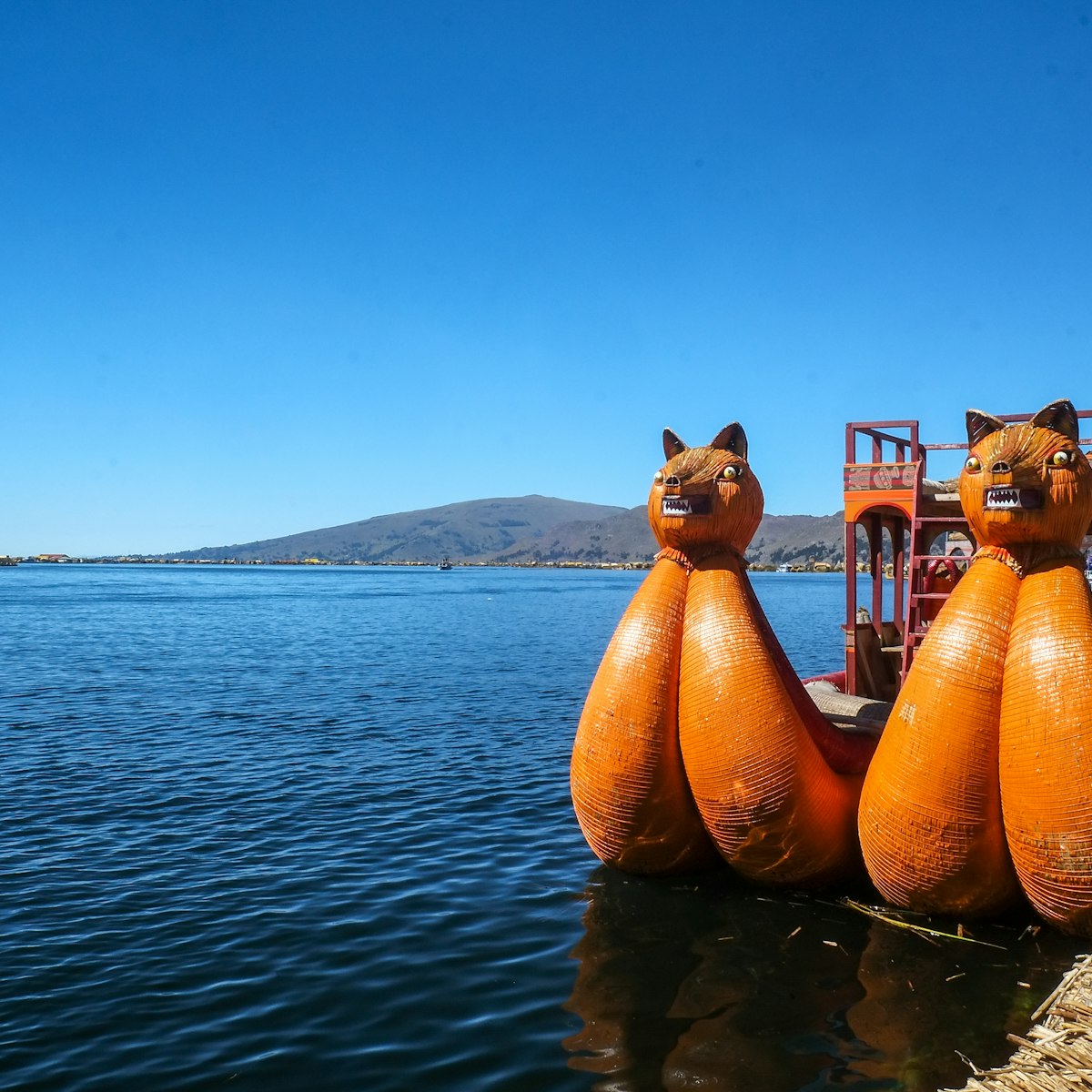
Isla Amantaní
Lake Titicaca
Of the small remote islands dotted around Lake Titicaca, Isla Amantaní is the least visited. Its population is just 4000, is a few kilometers north of the…

Belén Mercado
At the southeast end of town is the floating shantytown of Belén, consisting of scores of huts, built on rafts, which rise and fall with the river. During…
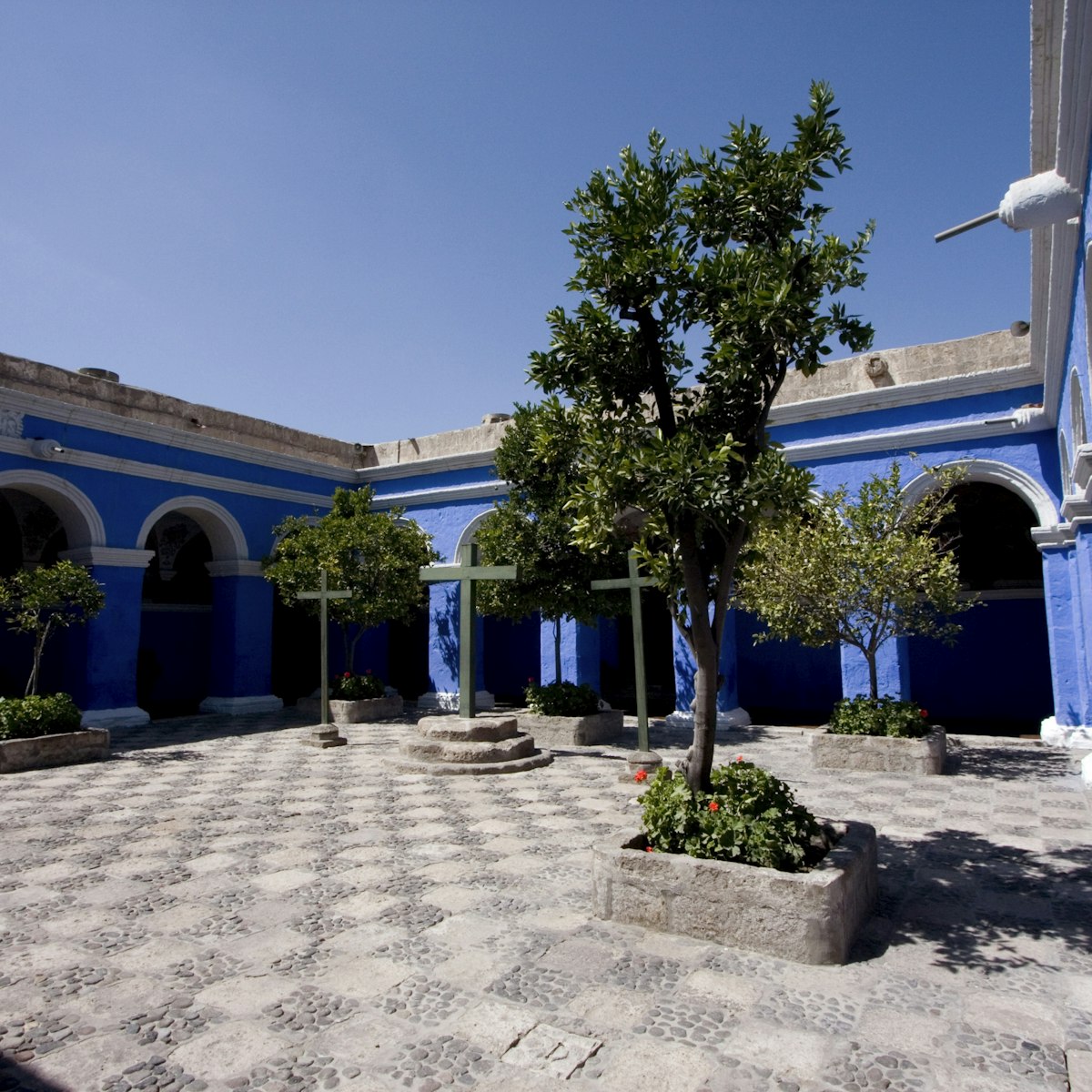
Monasterio de Santa Catalina
This convent shouldn’t be missed, even if you’ve overdosed on colonial edifices. Occupying a whole block and guarded by imposing high walls, it is one of…
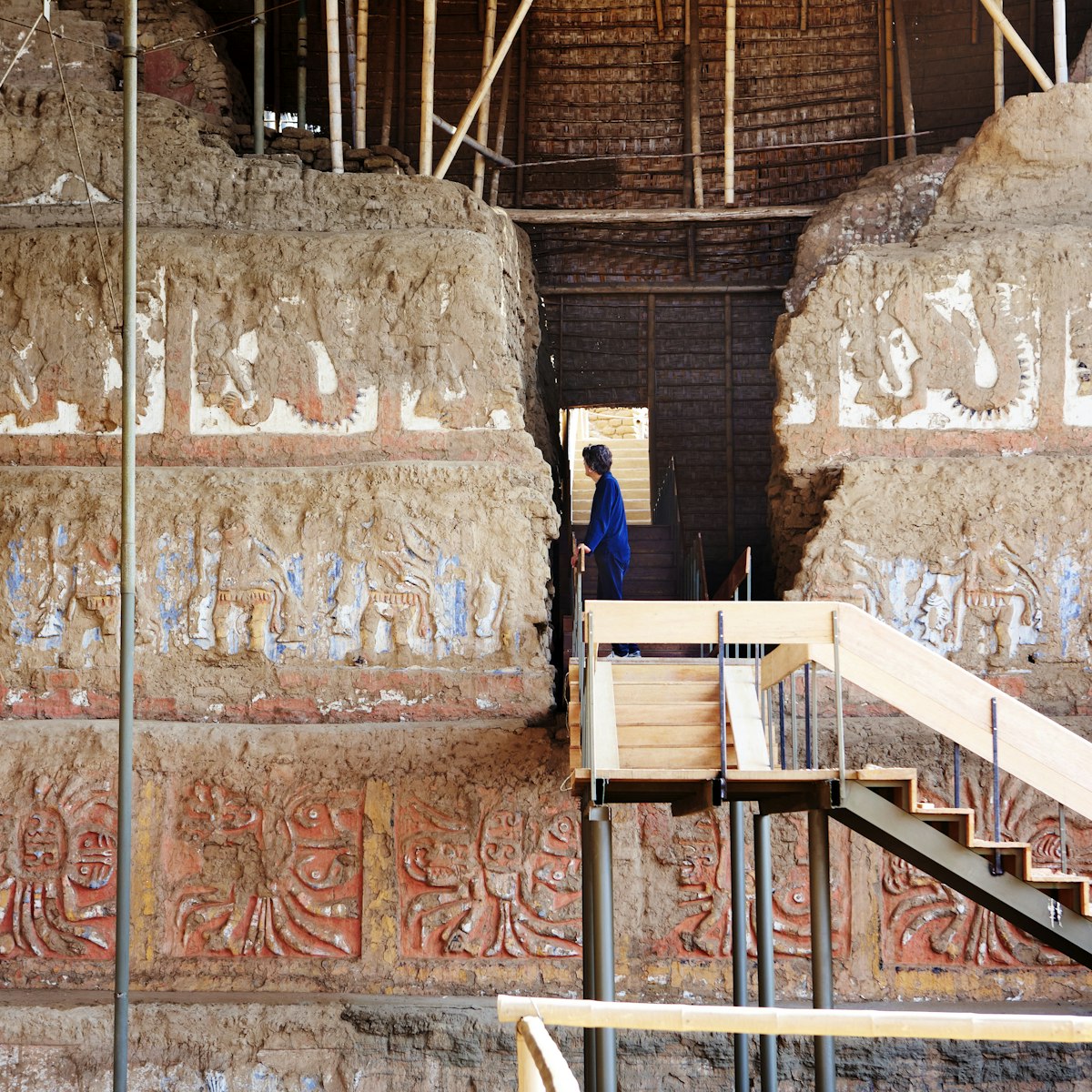
Huacas del Sol y de la Luna
If there's one must-see archaeological site in the region, this is it. The Temples of the Sun and the Moon, attributed to the Moche period, are more than…

Museo Larco
In an 18th-century viceroy’s mansion, this museum offers one of the largest, best-presented displays of ceramics in Lima. Founded by pre-Columbian…
Top picks from our travel experts
The 10 best experiences you can have in peru.

Reserva Nacional de Paracas
South Coast
This vast desert reserve occupies most of the Península de Paracas and houses remote beaches backed by dramatic arid landscapes and plenty of wonderful…

Islas Ballestas
Grandiosely nicknamed the ‘poor man’s Galápagos,’ the Islas Ballestas make for a memorable excursion. The only way to get here is on a boat tour, offered…

Parque Nacional Manu
Amazon Basin
This vast national park in the Amazon Basin covers almost 20,000 sq km and is one of the best places in South America to see a stunning variety of…
Planning Tools
Expert guidance to help you plan your trip.
Best Things to Do
With the Andes, the Amazon rainforest, and an epic coastline, Peru is a wonderland for adventurers. These are our 10 favorite experiences you can't miss.
Things to Know
Gain local insight on Peruvian culture, etiquette and safety before you travel to this South American hotspot.
Transportation
Exploring Peru is a real adventure and worth every minute of extra planning. Here’s our guide to getting around once you're here.
Visa Requirements
Curious if you need a visa for visiting Peru? Here's all you need to know.
Money and Costs
Peru has long been a destination for backpackers on a budget and now other travelers have caught on – here's how to make your money go further on the road.
Traveling with Kids
Every adventure-seeking family with a great appetite should have Peru on their "dream destinations" list. Here are the best things to do there with kids.
Best Road Trips
From lesser-known pre-Incan archaeological sites to lush jungles and tranquil beaches, these are the best road trips in Peru.
Plan with a local
Experience the real Peru
Let a local expert craft your dream trip.
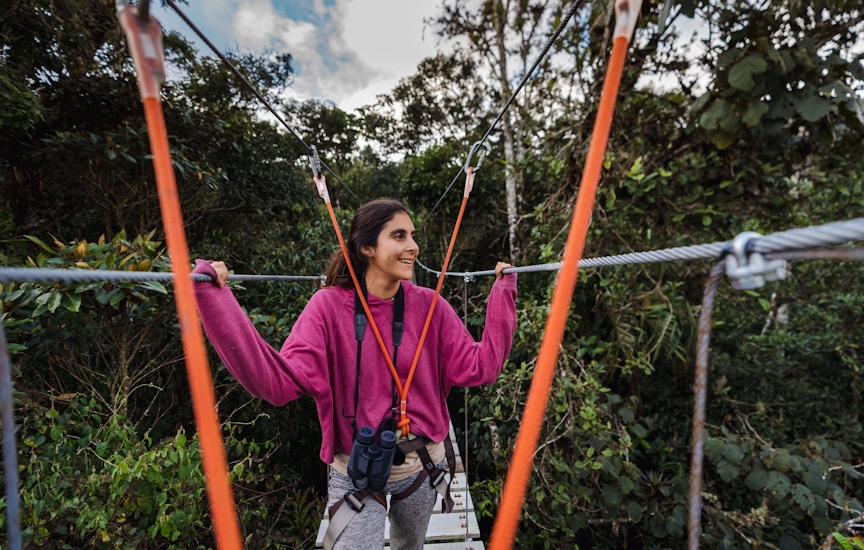
Latest stories from Peru
Filter by interest:
- All Interests
- Adventure Travel
- Art & Culture
- Beaches, Coasts & Islands
- Food & Drink

Jun 11, 2024 • 5 min read
Starting this month, Machu Picchu has introduced new circuits to preserve the archeological site. Here's how to find the right route for you.

Jan 30, 2024 • 7 min read

Jan 10, 2024 • 6 min read

Jan 2, 2024 • 11 min read

Dec 14, 2023 • 3 min read

Nov 26, 2023 • 6 min read

Nov 16, 2023 • 6 min read

Nov 14, 2023 • 7 min read

Nov 10, 2023 • 9 min read

Nov 8, 2023 • 6 min read
in partnership with getyourguide
Book popular activities in Peru
Peru and beyond.

Are you sure you want to close the session?
La cuenta ya se encuentra activa
Or enter your e-mail:
Recover your offer
We will send you a 4-digit code shortly
Enter the 4-digit code and your new password
Enter your search here
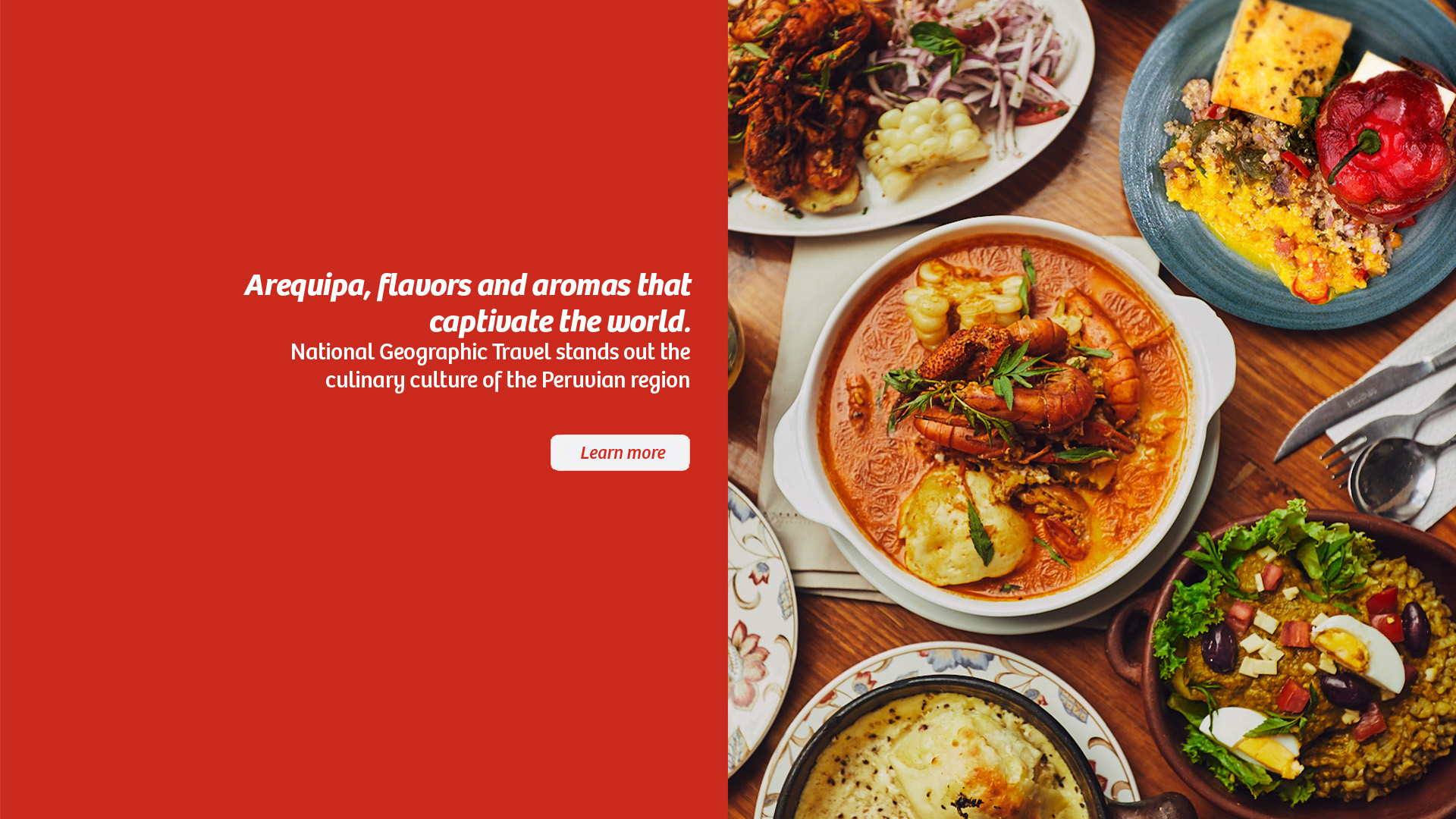
Credit: Shutterstock
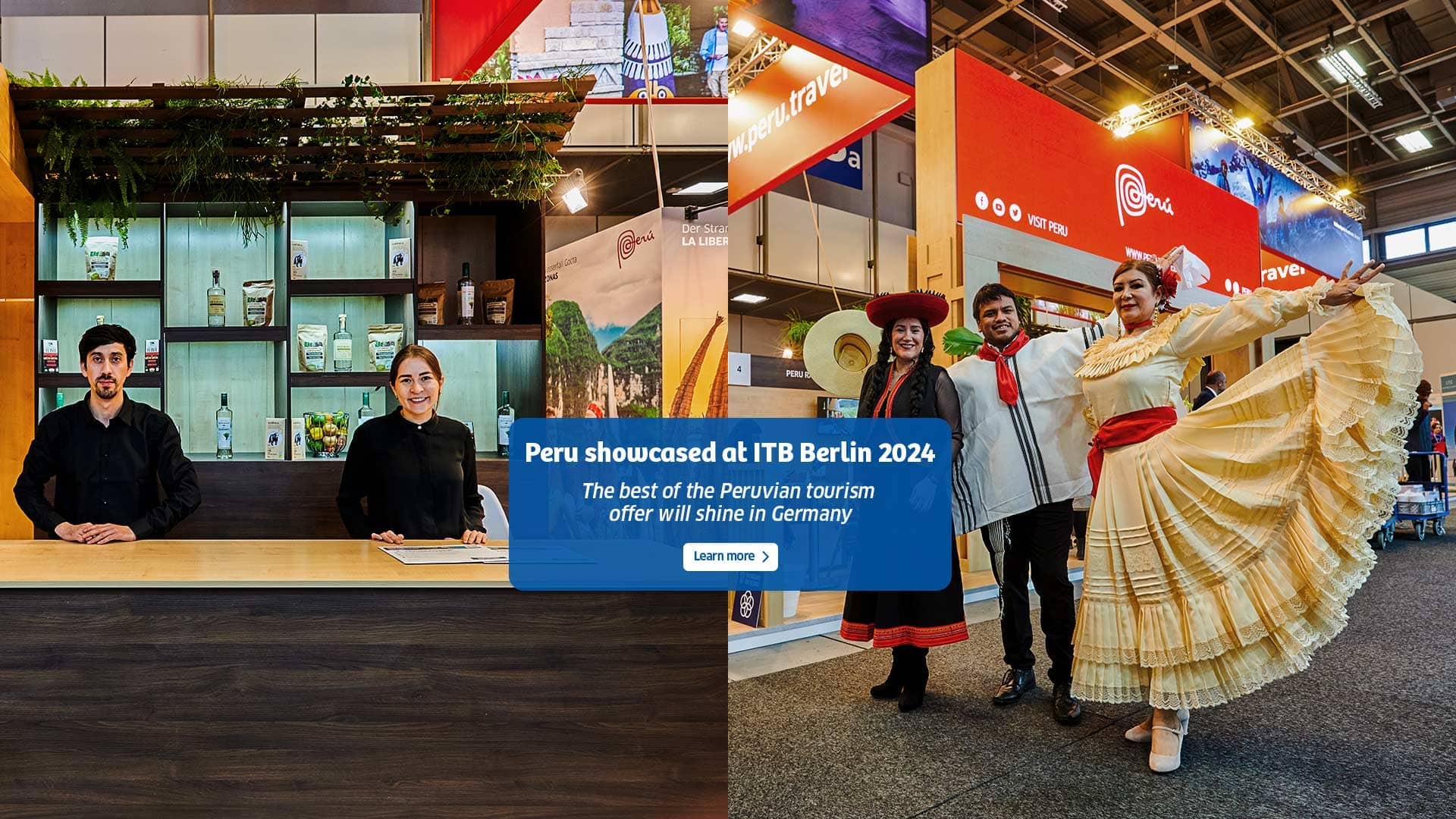
Every experience is uniquely special
Cultural history.
Experiential
Entertainment
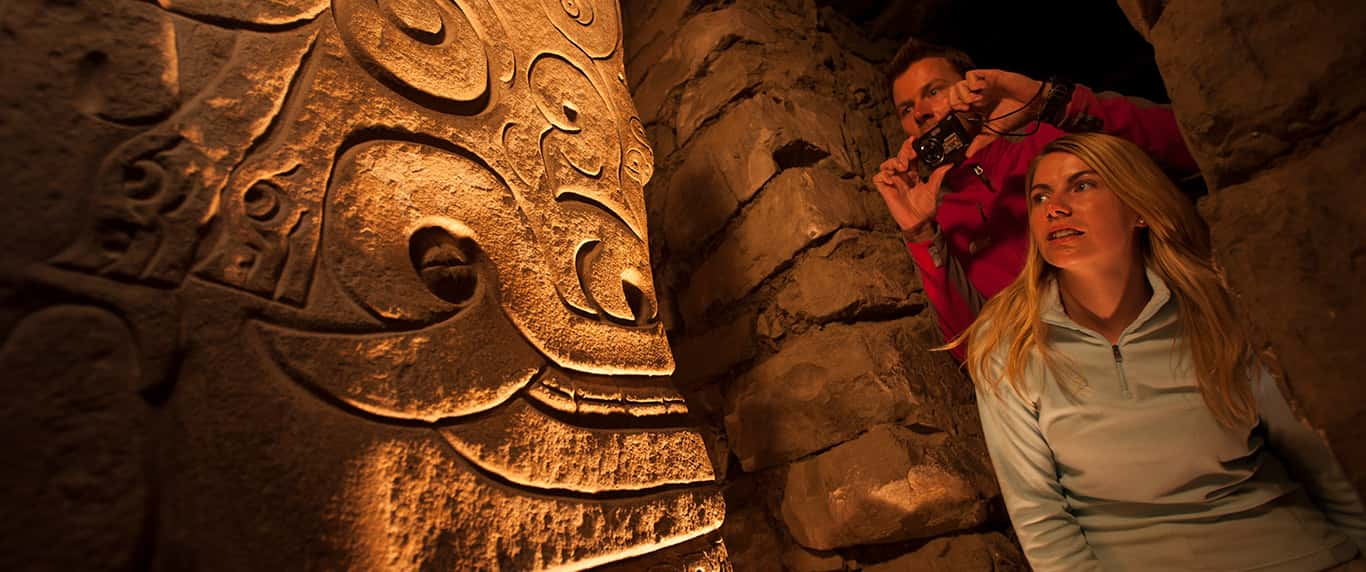
What is the most remarkable vestige of the past in Latin America?
The obvious answer would be Machu Picchu… And, of course, it certainly is. But we believe there are many more. Throughout Peru you can find marvelous vestiges of the past that astonish the world’s travelers. Machu Picchu is a must-see destination, but Peru is also home to Kuelap and Chavin de Huantar, Caral and Chan Chan , the Nasca Lines and Sipan … and we could name even more!
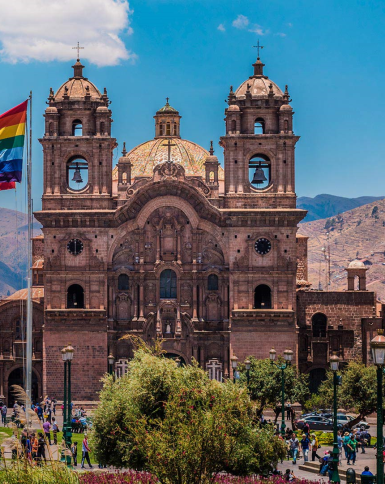
City tour in Cusco’s historic center
Visit the magical sights of the imperial city
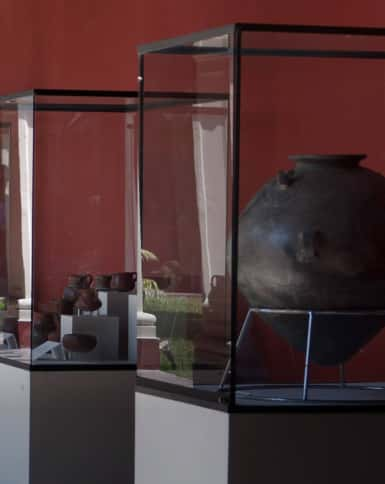
Lima city tour + museums
Lima’s museums
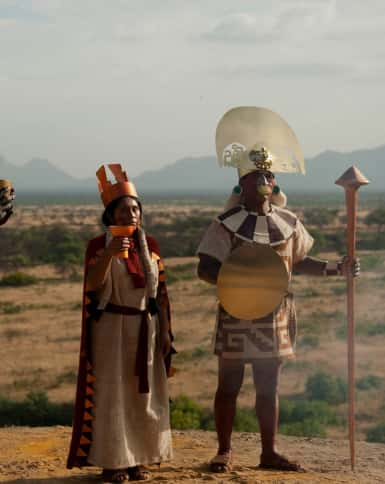
The Moche Route tour
Where ancestral knowledge seems boundless
These are the most searched destinations!

Where the Inca empire was born

Where tradition is today’s trend

A desert, all experiences

Living empire

Fascinating volcanic land
Peru around the world
Be amazed by the diversity of our natural, cultural and historic richness.

The latest updates from Peru: Everything you need to know

Learn about the new circuits of the Historic Sanctuary of Machu Picchu ...
The Peruvian Wonder will also have a new ticket sales channel, as well as a larger capacity. ...

Arequipa stands out for its gastronomic tradition at National Geographic Travel ...
The specialized website emphasized the large tradition and legacy of the culinary culture in this region. ...

Peru, the best international destination in the world ...
The second edition of the 2024 National Geographic Traveler Readers Awards recognized the Lat ... ...

Peru will present its best tourist offerings at ITB Berlin ...
The Peruvian charm once again reaches Europe. ...

This site uses cookies: Learn more
- Skip to main content
- Skip to "About this site"
Language selection
Search travel.gc.ca.
Help us to improve our website. Take our survey !
COVID-19: travel health notice for all travellers
Peru travel advice
Latest updates: Natural disasters and climate – updated information on the earthquake in the department of Arequipa
Last updated: June 28, 2024 15:17 ET
On this page
Safety and security, entry and exit requirements, laws and culture, natural disasters and climate, peru - exercise a high degree of caution.
Exercise a high degree of caution in Peru due to high levels of crime, as well as social conflicts and strikes that may occur across the country.
Regional advisory - Avoid non-essential travel
- Huallaga and Tocache provinces in the department of San Martín
- the Upper Huallaga and Ene river valleys in the departments of Huánuco and San Martín
- Padre Abad province in the department of Ucayali
- Huacaybamba, Humalíes, Leoncio Prado and Marañón provinces in the department of Huánuco
- Concepción and Satipo provinces in the department of Junín
- Tayacaja province in the department of Huancavelica
- the districts of Abancay, Andahuaylas and Chincheros in the department of Apurímac
- Huanta and La Mar provinces, in the department of Ayacucho
- Valley of Apurimac, Ene and Mantaro rivers (VRAEM)
Border area with Colombia - Avoid non-essential travel
Avoid non-essential travel to areas within 20 km of the border with Colombia due to drug trafficking and occasional incursions by armed guerrilla forces from Colombia into Peru.
Border area with Ecuador - Avoid non-essential travel
Avoid non-essential travel to areas within 20 km of the border with Ecuador, especially in the Cordillera del Cóndor region, due to the safety threat posed by landmines.
Back to top
State of emergency in regions bordering Ecuador
On January 10, 2024, the Peruvian government declared a state of emergency in the northern regions bordering Ecuador following the Government of Ecuador’s declaration of a nationwide state of “internal armed conflict” on January 9, 2024. The state of emergency is in effect in the following regions:
If you are in these regions, you should carry identification with you at all times.
Demonstrations and strikes
Demonstrations and strikes take place regularly throughout the country. Strikes can complicate travel and disrupt public transport and services, including your ability to travel to or leave isolated tourist destinations such as Machu Picchu. They could also lead to border closures with Bolivia. Protestors may also block rivers essential for transportation in some remote regions, including the Manu region of Madre de Dios and Iquitos region. This may result in the temporary detainment of tourists.
Even peaceful demonstrations can turn violent at any time. Police have used tear gas and other methods to disperse crowds in the past. Authorities often declare a state of emergency in response to demonstrations.
Peruvian law prohibits political activities by foreigners. You may face detention or deportation if you take part in a demonstration.
- Avoid areas where demonstrations and large gatherings are taking place
- Follow the instructions of local authorities
- Consult local media to be aware of strikes and demonstrations that may affect your stay or travel plans
Mass gatherings (large-scale events)
State of Emergency
The Peruvian government periodically declares a state of emergency in certain areas to allow the military to assist police forces to respond to security incidents and natural disasters. When a state of emergency is in effect, security forces have increased rights to:
- restrict freedom of movement
- monitor correspondence
- conduct search and seizures
- detain persons of interest
Border area with Colombia
Criminal activity related to narcotics trafficking and occasional incursions by armed guerrilla forces from Colombia at Cordillera del Cóndor, Peru, pose a threat to personal security.
Border area with Ecuador
Cross the Peru–Ecuador border at official crossing points only due to the presence of landmines along the border.
Basic services in the Tumbes district have become increasingly difficult to access due to an increased number of migrants entering Peru from the North land border with Ecuador. The increased population has limited the provision of these services.
Valle de los Ríos Apurímac, Ene y Mantaro (VRAEM)
Drug trafficking.
Cocaine production and trafficking occurs inVRAEM. Travel is particularly dangerous in areas where there is coca cultivation and processing.
Domestic terrorism
Incidents of domestic terrorism have occurred in VRAEM, particularly the region where the Apurímac, Ayacucho, Cuzco and Junín departments meet.
Crime rates are high throughout the country.
- Maintain a high level of vigilance and personal security awareness, especially at night
- Avoid walking in deserted or under-populated areas
- Travel in groups whenever possible
Petty crime
Petty crime, such as pickpocketing and purse snatching, occurs, particularly in Lima, in other cities and even in crowded, public areas. Theft occurs frequently in hotels, restaurants, bus stations and airports, on intercity buses and microbuses and while hailing taxis.
- Avoid wearing expensive watches and jewellery, or showing signs of affluence
- Ensure that your belongings, including your passport and other travel documents, are secure at all times
- Never leave bags unattended
Pickpockets and bag snatchers may work in pairs or groups and employ a variety of ruses to divert their victim’s attention. A common scam involves spraying a substance on victims and then robbing them while pretending to help clean the stain, or distracting the victim by asking questions while another person perpetrates the theft. In some cases, thieves on motorcycles will snatch purses, backpacks or cellular phones.
Violent crime
Violent crime occurs. Incidents have included:
- kidnappings
Armed robbery
Armed robberies are on the rise. While most victims are not physically injured, criminals will not hesitate to use force when opposed.
- If you are robbed, hand over your cash, electronic devices and valuables without resistance
- Be particularly vigilant after visiting a bank, an ATM or a change bureau, as thieves may follow and rob victims.
- Use ATMs inside banks and during regular hours of service, when guards are on duty
Assaults have occurred along the Inca Trail and in the Huaraz region of the Cordillera Blanca mountains. Hiking in these regions should be done in groups.
Express kidnappings involving tourists have occurred. Victims are usually abducted for a few hours and forced to withdraw money from ATMs for their release. Most express kidnappings take place at night, but incidents also occur during daylight hours. Incidents often involve criminals posing as taxi drivers, or taxi drivers working for organized gangs. Virtual kidnappings occur throughout the country. Criminals use stolen cellphones to contact family members claiming to have kidnapped the owner of the phone and then ask for ransom money.
- Be suspicious of strangers approaching you on the street
- Never leave your cellphone unattended
- Be cautious when using cellphones and smart devices in public as they are often targeted by thieves, especially while people are using them
- Ensure your phone is password protected
Organized crime
Organized crime is reportedly increasing in parts of Lima Province and in some districts of the Department of Piura. In some parts of the country, military and security forces have been deployed to assist police in combatting organized crime.
Incidents of domestic terrorism occur, particularly in remote jungle areas such as:
- parts of the Huancavelica and Ucayali departments
- the Upper Huallaga river valley in the Huánuco and San Martín departments.
Incidents have included:
- temporary ambushes of small villages
- bombings or threats of violence against local security forces or community figures
Overland travel in these regions is unsafe.
Counterfeit currency
Counterfeit currency in both sol and U.S. dollars is a growing and serious problem. Counterfeit bills are widely distributed, including by banks, casinos and local stores.
Avoid moneychangers on the street, as they may carry counterfeit currency or work with pickpockets.
Credit card fraud
Credit card and ATM fraud occurs. Be cautious when using debit or credit cards:
- pay careful attention when your cards are being handled by others
- use ATMs located in well-lit public areas or inside a bank or business
- avoid using card readers with an irregular or unusual feature
- cover the keypad with one hand when entering your PIN
- check for any unauthorized transactions on your account statements
Criminals posing as taxi drivers often rob tourists along the route to and from Lima’s Jorge Chávez International Airport.
- Use a secure taxi service when arriving at and leaving the airport
- Exercise caution en route to and from your hotel
Thieves also pose as police officers to gain the confidence and cooperation of their potential victims.
- If you are stopped by local authorities, ask to see official identification and record the officer’s name, badge number and district.
- For traffic violations, request that the officer issue you a fine in writing, which is payable at a later date.
- You should also note the location of the arrest.
Legitimate police officers have also extorted money in exchange for dismissing minor offences or traffic violations. They have also stolen money and valuables during searches.
- If you are searched, even at the airport, ensure you have all your belongings before leaving
- If you are planning to participate in volunteer activities in Peru, ensure that the company organizing your trip is legitimate
- Make sure your accommodations and return arrangements are secure before travelling
Useful links
- Lima Airport Partners
- Overseas fraud
- Volunteering abroad
Spiked food and drinks
Snacks, beverages, gum and cigarettes may contain drugs that could put you at risk of sexual assault and robbery.
- Be wary of accepting these items from new acquaintances
- Never leave food or drinks unattended or in the care of strangers
Women’s safety
Women travelling alone may be subject to some forms of harassment and verbal abuse. Incidents of sexual assault, including rape, occur throughout the country, particularly in tourist destinations. In some cases, tour guides have been implicated.
- Do not travel alone, especially after dark.
- Remain particularly vigilant at bus terminals and in taxis.
- Be careful when dealing with strangers or recent acquaintances, especially regarding the acceptance of rides or other invitations.
Women reporting sexual assault should contact police immediately. Medical examinations at identified clinics are part of the investigation process. Women who have delayed reporting may experience more scrutiny by local authorities.
Advice for women travellers
Adventure tourism
Each year, several hikers and climbers are victims of serious, sometimes fatal, accidents in the Andes, including at the Huayna Picchu peak near Machu Picchu and the Cordillera Blanca region in Huaraz, where Peru’s highest peaks are located.
The Inca Trail is usually closed each year in February for maintenance. Other trails, such as those found in Ollantaytambo, may be poorly marked. Hikers have become lost. Be aware that steep or slippery areas are neither fenced nor marked.
In November 2023, the Cusipata District in Quispicanchi Province closed two access routes to Vinicunca, the “Rainbow Mountain.” The closure follows violent disputes between the municipalities surrounding the access routes. Access to Vinicunca from Quispicanchi Province will be closed indefinitely, but access remains open via the Pitumarca District in Canchis Province.
Remote areas of Peru, where popular jungle excursions operate, may not have cellphone coverage or internet access.
If you intend to hike, trek or climb:
- never do so alone, and always hire an experienced guide from a reputable company
- only use licensed companies recommended by the Ministry of Tourism for adventure tours and sports
- exercise extreme caution while climbing, as local authorities have limited rescue capabilities
- buy travel insurance that includes helicopter rescue and medical evacuation
- ensure that your physical condition is good enough to meet the challenges of your activity
- make sure that you’re properly equipped and well-informed about weather and other conditions that may pose a hazard
- inform a family member or friend of your itinerary, including when you expect to be back to camp
- know the symptoms of acute altitude sickness, which can be fatal
- obtain detailed information on trekking routes or ski slopes before setting out and do not venture off marked trails or slopes
- always leave the contact information of the tour operator with your family and friends
- always hire an experienced guide from a reputable company if you travel in remote areas
- iPerú - Peruvian government’s Tourist Information and Assistance
- APOTUR - The Peruvian Association of Incoming and Domestic Tour Operators (in Spanish)
- APAVIT - Peruvian Association of Travel and Tourist Agencies (in Spanish)
- APTAE - Peruvian association of adventure, eco, and specialized tourism (in Spanish)
- Qualified Tourism Service Companies - Ministry of foreign trade and tourism (in Spanish)
Water activities
There have been several recent white-water rafting accidents and drownings involving tourists, particularly on the Urubamba River near Cuzco. Companies offering white-water rafting, their guides and their equipment may not be held to the same standards as similar companies in Canada. Rescue services may not be consistent with international standards.
Coastal waters can be dangerous. Strong currents exist in the Pacific Ocean and in rivers. Life guards are not always present or properly trained at beaches.
Swimming in jungle lakes and rivers can be dangerous due to the presence of parasites and wildlife.
Seek advice and consult residents and local authorities about conditions before swimming, surfing or participating in other aquatic activities.
Water safety abroad
Ayahuasca ceremonies
Spiritual cleansing and ayahuasca ceremonies, offered by shamans and other individuals, involve consuming substances that can cause medical complications and severely impair cognitive and physical abilities. Exposure to these substances has led to serious illness, injury, assault and even the death of several tourists.
Ceremonies often take place in remote areas with no access to medical or mental health facilities or resources and limited communication with local authorities. Most of the time, the facilities lack basic first aid or emergency plans for those suffering from physical or psychological illness from these ceremonies. Ayahuasca ceremonies are not regulated and there is no way to assess the safety of any of the services, the operators or the shamans.
Road safety
Road conditions and road safety are poor throughout the country. Drivers are extremely aggressive, and they do not respect traffic laws. Mountainous roads can be particularly dangerous, especially at night. Poor signage also poses a hazard. Accidents causing fatalities are common.
Regular police spot checks can cause traffic delays.
When renting a vehicle, always purchase insurance. Most drivers in Peru have only the minimum required car insurance, which may not adequately cover accidents.
Vehicles are a target for robbery. Criminals have thrown objects in front of oncoming traffic in the hope that cars will stop. If this occurs and you need to stop, do so only in a safe location, such as a gas station.
- While travelling by car, keep your doors locked and windows shut at all times
- Keep your personal belongings in the trunk of the vehicle, as criminals have been known to shatter windows to “smash and grab” and to attempt entry when they see travel bags or merchandise
- Avoid travelling by road outside of major cities after dark, when there is a higher risk of robbery
State of the roads in Peru in real time – Government of Peru (in Spanish)
Thefts on boats by river pirates occur along rivers in the Amazon jungle.
Mariners should take appropriate precautions.
Live piracy report - International Maritime Bureau
Public transportation
Buses and minibuses operate between most major cities. Demonstrations and strikes can lead to disruptions to traffic and public transportation.
Many of the buses and combis in Lima are old, poorly maintained and overcrowded. Drivers of these vehicles tend to dominate the roads and disregard other drivers or pedestrians.
Intercity bus travel can be dangerous due to the risk of bus accidents, which are usually caused by excessive speed, poor vehicle maintenance and driver fatigue. Armed gangs have been known to stop buses to rob travellers, especially at night. Incidents of assaults on buses have also been reported.
The Government of Peru publishes a list of the bus companies with the highest rates of involvement in fatal or serious injury traffic accidents.
- Only use reputable transportation companies
- Contact your travel agency for a list of recommended intercity bus companies
Ministry of Transportation - Government of Peru (in Spanish)
Trains operate between Arequipa-Cusco-Puno and between Cusco-Ollantaytambo-Machu Picchu . Demonstrations, strikes and derailments can disrupt travel by train, including trains to or from Machu Picchu.
- Train services – Peru rail
- Train to Machu Picchu - Inca rail
Licensed taxis are not metered. Taxi drivers sometimes do not provide change or will continue to drive until they can obtain change.
- Do not hail taxis on the street
- Reserve a taxi by calling a reputable taxi company or use taxi services associated with major hotels
- Agree to a fare prior to departure and do not pay until you have reached your destination
- Try to carry the exact fare
We do not make assessments on the compliance of foreign domestic airlines with international safety standards.
Information about foreign domestic airlines
entry_restrictions_at_land_and_river_borders_with_ecuador
Entry restrictions at land and river borders with Ecuador
On January 11, 2024, the Government of Ecuador announced new entry restrictions in response to the ongoing state of internal armed conflict.
All foreigners entering Ecuador at crossing points with the land or river borders must present a criminal record check from their country of origin or residence. The original criminal record check and the Spanish translation must be apostilled and cover the past five years. Minors travelling with their family members will generally be exempt.
If you cannot provide a criminal record check, the Ecuadorian Migration System will check to verify that you don’t have previous convictions.
- Requirements to enter and exit Ecuador – Ministry of Interior (in Spanish)
- Entry requirements to Ecuador through land borders – Ministry of tourism (in Spanish)
- Migration information – Ecuador Immigration Agency (in Spanish)
- Changes to authentication services in Canada
- Authentication of documents
Every country or territory decides who can enter or exit through its borders. The Government of Canada cannot intervene on your behalf if you do not meet your destination’s entry or exit requirements.
We have obtained the information on this page from the Peruvian authorities. It can, however, change at any time.
Verify this information with the Foreign Representatives in Canada .
Entry requirements vary depending on the type of passport you use for travel.
Before you travel, check with your transportation company about passport requirements. Its rules on passport validity may be more stringent than the country’s entry rules.
Regular Canadian passport
Your passport must be valid for at least 6 months beyond the date you expect to leave Peru.
Passport for official travel
Different entry rules may apply.
Official travel
Passport with “X” gender identifier
While the Government of Canada issues passports with an “X” gender identifier, it cannot guarantee your entry or transit through other countries. You might face entry restrictions in countries that do not recognize the “X” gender identifier. Before you leave, check with the closest foreign representative for your destination.
Other travel documents
Different entry rules may apply when travelling with a temporary passport or an emergency travel document. Before you leave, check with the closest foreign representative for your destination.
- Foreign Representatives in Canada
- Canadian passports
Tourist visa: not required for a stay of less than 90 days per 365 day period Business visa: required Student visa: required
If you entered Peru with a business visa, you must obtain a certificate from the Peruvian Ministry of the Economy to prove that all Peruvian taxes on income earned during the trip have been paid prior to leaving the country. The certification is required even if no money was paid or earned and must be presented to the central Peruvian immigration office in Lima before departure.
Entering the country
You must register your entry into Peru at the port of entry or checkpoint.
- Only cross the border at official checkpoints
- Ensure the immigration office at your port of entry is open at the time you intend to cross the border
Other entry requirements
Customs officials may ask you to show them:
- a return or onward ticket
- proof that you have a place to stay
- proof that you have sufficient funds for the duration of your stay
Length of stay
As a Canadian tourist, you may stay in Peru for up to 90 days in a 365-day period.
Overstaying is a criminal offence. There is a fine for each day of overstay. This fee must be paid upon exiting the country.
Dual citizenship
Peruvian–Canadians entering Peru using their Canadian passport are subject to visit restrictions, including length of stay and associated fines. Dual nationals must use the same nationality to enter and exit the country.
- Children and travel
Travellers under 18 exiting Peru after a stay of 183 days are automatically protected by Peru’s law on minors and will require the authorization of both parents/guardians to exit the country.
Children who have resident status in Peru must have written permission from the non-accompanying parents to leave the country.
Children born of Canadian parents in Peru require a Peruvian passport to leave the country for the first time. Contact Peruvian immigration officials for more information.
Travelling with children
Yellow fever
Learn about potential entry requirements related to yellow fever (vaccines section).
Relevant Travel Health Notices
- Global Measles Notice - 13 March, 2024
- Zika virus: Advice for travellers - 31 August, 2023
- COVID-19 and International Travel - 13 March, 2024
- Dengue: Advice for travellers - 6 May, 2024
- Oropouche fever in the Americas - 17 June, 2024
This section contains information on possible health risks and restrictions regularly found or ongoing in the destination. Follow this advice to lower your risk of becoming ill while travelling. Not all risks are listed below.
Consult a health care professional or visit a travel health clinic preferably 6 weeks before you travel to get personalized health advice and recommendations.
Routine vaccines
Be sure that your routine vaccinations , as per your province or territory , are up-to-date before travelling, regardless of your destination.
Some of these vaccinations include measles-mumps-rubella (MMR), diphtheria, tetanus, pertussis, polio, varicella (chickenpox), influenza and others.
Pre-travel vaccines and medications
You may be at risk for preventable diseases while travelling in this destination. Talk to a travel health professional about which medications or vaccines may be right for you, based on your destination and itinerary.
Yellow fever is a disease caused by a flavivirus from the bite of an infected mosquito.
Travellers get vaccinated either because it is required to enter a country or because it is recommended for their protection.
- There is a risk of yellow fever in this country.
Country Entry Requirement*
- Proof of vaccination is not required to enter this country.
Recommendation
- Vaccination is recommended depending on your itinerary.
- Contact a designated Yellow Fever Vaccination Centre well in advance of your trip to arrange for vaccination.
- Discuss travel plans, activities, and destinations with a health care professional.
- Protect yourself from mosquito bites.
About Yellow Fever Yellow Fever Vaccination Centres in Canada * It is important to note that country entry requirements may not reflect your risk of yellow fever at your destination. It is recommended that you contact the nearest diplomatic or consular office of the destination(s) you will be visiting to verify any additional entry requirements.
There is a risk of hepatitis A in this destination. It is a disease of the liver. People can get hepatitis A if they ingest contaminated food or water, eat foods prepared by an infectious person, or if they have close physical contact (such as oral-anal sex) with an infectious person, although casual contact among people does not spread the virus.
Practise safe food and water precautions and wash your hands often. Vaccination is recommended for all travellers to areas where hepatitis A is present.
Measles is a highly contagious viral disease. It can spread quickly from person to person by direct contact and through droplets in the air.
Anyone who is not protected against measles is at risk of being infected with it when travelling internationally.
Regardless of where you are going, talk to a health care professional before travelling to make sure you are fully protected against measles.
Hepatitis B is a risk in every destination. It is a viral liver disease that is easily transmitted from one person to another through exposure to blood and body fluids containing the hepatitis B virus. Travellers who may be exposed to blood or other bodily fluids (e.g., through sexual contact, medical treatment, sharing needles, tattooing, acupuncture or occupational exposure) are at higher risk of getting hepatitis B.
Hepatitis B vaccination is recommended for all travellers. Prevent hepatitis B infection by practicing safe sex, only using new and sterile drug equipment, and only getting tattoos and piercings in settings that follow public health regulations and standards.
Coronavirus disease (COVID-19) is an infectious viral disease. It can spread from person to person by direct contact and through droplets in the air.
It is recommended that all eligible travellers complete a COVID-19 vaccine series along with any additional recommended doses in Canada before travelling. Evidence shows that vaccines are very effective at preventing severe illness, hospitalization and death from COVID-19. While vaccination provides better protection against serious illness, you may still be at risk of infection from the virus that causes COVID-19. Anyone who has not completed a vaccine series is at increased risk of being infected with the virus that causes COVID-19 and is at greater risk for severe disease when travelling internationally.
Before travelling, verify your destination’s COVID-19 vaccination entry/exit requirements. Regardless of where you are going, talk to a health care professional before travelling to make sure you are adequately protected against COVID-19.
The best way to protect yourself from seasonal influenza (flu) is to get vaccinated every year. Get the flu shot at least 2 weeks before travelling.
The flu occurs worldwide.
- In the Northern Hemisphere, the flu season usually runs from November to April.
- In the Southern Hemisphere, the flu season usually runs between April and October.
- In the tropics, there is flu activity year round.
The flu vaccine available in one hemisphere may only offer partial protection against the flu in the other hemisphere.
The flu virus spreads from person to person when they cough or sneeze or by touching objects and surfaces that have been contaminated with the virus. Clean your hands often and wear a mask if you have a fever or respiratory symptoms.
Malaria is a serious and sometimes fatal disease that is caused by parasites spread through the bites of mosquitoes. There is a risk of malaria in certain areas and/or during a certain time of year in this destination.
Antimalarial medication may be recommended depending on your itinerary and the time of year you are travelling. Consult a health care professional or visit a travel health clinic before travelling to discuss your options. It is recommended to do this 6 weeks before travel, however, it is still a good idea any time before leaving. Protect yourself from mosquito bites at all times: • Cover your skin and use an approved insect repellent on uncovered skin. • Exclude mosquitoes from your living area with screening and/or closed, well-sealed doors and windows. • Use insecticide-treated bed nets if mosquitoes cannot be excluded from your living area. • Wear permethrin-treated clothing. If you develop symptoms similar to malaria when you are travelling or up to a year after you return home, see a health care professional immediately. Tell them where you have been travelling or living.
In this destination, rabies is carried by dogs and some wildlife, including bats. Rabies is a deadly disease that spreads to humans primarily through bites or scratches from an infected animal. While travelling, take precautions , including keeping your distance from animals (including free-roaming dogs), and closely supervising children.
If you are bitten or scratched by an animal while travelling, immediately wash the wound with soap and clean water and see a health care professional. Rabies treatment is often available in this destination.
Before travel, discuss rabies vaccination with a health care professional. It may be recommended for travellers who are at high risk of exposure (e.g., occupational risk such as veterinarians and wildlife workers, children, adventure travellers and spelunkers, and others in close contact with animals).
Safe food and water precautions
Many illnesses can be caused by eating food or drinking beverages contaminated by bacteria, parasites, toxins, or viruses, or by swimming or bathing in contaminated water.
- Learn more about food and water precautions to take to avoid getting sick by visiting our eat and drink safely abroad page. Remember: Boil it, cook it, peel it, or leave it!
- Avoid getting water into your eyes, mouth or nose when swimming or participating in activities in freshwater (streams, canals, lakes), particularly after flooding or heavy rain. Water may look clean but could still be polluted or contaminated.
- Avoid inhaling or swallowing water while bathing, showering, or swimming in pools or hot tubs.
Travellers' diarrhea is the most common illness affecting travellers. It is spread from eating or drinking contaminated food or water.
Risk of developing travellers' diarrhea increases when travelling in regions with poor standards of hygiene and sanitation. Practise safe food and water precautions.
The most important treatment for travellers' diarrhea is rehydration (drinking lots of fluids). Carry oral rehydration salts when travelling.
Typhoid is a bacterial infection spread by contaminated food or water. Risk is higher among children, travellers going to rural areas, travellers visiting friends and relatives or those travelling for a long period of time.
Travellers visiting regions with a risk of typhoid, especially those exposed to places with poor sanitation, should speak to a health care professional about vaccination.
Insect bite prevention
Many diseases are spread by the bites of infected insects such as mosquitoes, ticks, fleas or flies. When travelling to areas where infected insects may be present:
- Use insect repellent (bug spray) on exposed skin
- Cover up with light-coloured, loose clothes made of tightly woven materials such as nylon or polyester
- Minimize exposure to insects
- Use mosquito netting when sleeping outdoors or in buildings that are not fully enclosed
To learn more about how you can reduce your risk of infection and disease caused by bites, both at home and abroad, visit our insect bite prevention page.
Find out what types of insects are present where you’re travelling, when they’re most active, and the symptoms of the diseases they spread.
There is a risk of chikungunya in this country. The risk may vary between regions of a country. Chikungunya is a virus spread through the bite of an infected mosquito. Chikungunya can cause a viral disease that typically causes fever and pain in the joints. In some cases, the joint pain can be severe and last for months or years.
Protect yourself from mosquito bites at all times. There is no vaccine available for chikungunya.
Cutaneous and mucosal leishmaniasis causes skin sores and ulcers. It is caused by a parasite spread through the bite of a female sandfly.
Risk is generally low for most travellers. Protect yourself from sandfly bites, which typically occur after sunset in rural and forested areas and in some urban centres. There is no vaccine or medication to protect against leishmaniasis.
- In this country, dengue is a risk to travellers. It is a viral disease spread to humans by mosquito bites.
- Dengue can cause flu-like symptoms. In some cases, it can lead to severe dengue, which can be fatal.
- The level of risk of dengue changes seasonally, and varies from year to year. The level of risk also varies between regions in a country and can depend on the elevation in the region.
- Mosquitoes carrying dengue typically bite during the daytime, particularly around sunrise and sunset.
- Protect yourself from mosquito bites . There is no vaccine or medication that protects against dengue.
Zika virus is a risk in this country.
Zika virus is primarily spread through the bite of an infected mosquito. It can also be sexually transmitted. Zika virus can cause serious birth defects.
During your trip:
- Prevent mosquito bites at all times.
- Use condoms correctly or avoid sexual contact, particularly if you are pregnant.
If you are pregnant or planning a pregnancy, you should discuss the potential risks of travelling to this destination with your health care provider. You may choose to avoid or postpone travel.
For more information, see Zika virus: Pregnant or planning a pregnancy.
American trypanosomiasis (Chagas disease) is a risk in this country. It is caused by a parasite spread by infected triatomine bugs. The infection can be inactive for decades, but humans can eventually develop complications causing disability and even death.
Risk is generally low for most travellers. Protect yourself from triatomine bugs, which are active at night, by using mosquito nets if staying in poorly-constructed housing. There is no vaccine available for Chagas disease.
Animal precautions
Some infections, such as rabies and influenza, can be shared between humans and animals. Certain types of activities may increase your chance of contact with animals, such as travelling in rural or forested areas, camping, hiking, and visiting wet markets (places where live animals are slaughtered and sold) or caves.
Travellers are cautioned to avoid contact with animals, including dogs, livestock (pigs, cows), monkeys, snakes, rodents, birds, and bats, and to avoid eating undercooked wild game.
Closely supervise children, as they are more likely to come in contact with animals.
There is a risk of plague in this country. Plague is a bacterial disease that can cause serious illness, and if left untreated, death.
The occurrence of cases in areas where the plague bacteria are known to circulate can be influenced by weather and environmental conditions. In some countries, this results in seasonal outbreaks. Travellers to areas where plague routinely occurs may be at risk if they are camping, hunting, or in contact with rodents.
Plague is spread by:
- bites from fleas infected with the plague
- direct contact with body fluids or tissues from an animal or person who is sick with or has died from plague
Overall risk to travellers is low. Protect yourself by reducing contact with fleas and potentially infected rodents and other wildlife.
Person-to-person infections
Stay home if you’re sick and practise proper cough and sneeze etiquette , which includes coughing or sneezing into a tissue or the bend of your arm, not your hand. Reduce your risk of colds, the flu and other illnesses by:
- washing your hands often
- avoiding or limiting the amount of time spent in closed spaces, crowded places, or at large-scale events (concerts, sporting events, rallies)
- avoiding close physical contact with people who may be showing symptoms of illness
Sexually transmitted infections (STIs) , HIV , and mpox are spread through blood and bodily fluids; use condoms, practise safe sex, and limit your number of sexual partners. Check with your local public health authority pre-travel to determine your eligibility for mpox vaccine.
Tuberculosis is an infection caused by bacteria and usually affects the lungs.
For most travellers the risk of tuberculosis is low.
Travellers who may be at high risk while travelling in regions with risk of tuberculosis should discuss pre- and post-travel options with a health care professional.
High-risk travellers include those visiting or working in prisons, refugee camps, homeless shelters, or hospitals, or travellers visiting friends and relatives.
Medical services and facilities
Quality of care varies throughout the country.
Private hospitals and clinics in urban centres are well-staffed and -equipped to handle any emergency or medical issue. Public hospitals and rural facilities, even in some tourist destinations and major cities, may not meet Canadian standards or may be inadequate to treat serious conditions.
Cases of serious injury or illness in remote areas may require evacuation to the nearest adequate medical facility in the country. Clinic, hospital and evacuation expenses can be costly and the service provider often expects immediate cash payment or confirmation of payment from an insurance company.
Make sure you get travel insurance that includes coverage for medical evacuation and hospital stays.
Travel health and safety
Keep in Mind...
The decision to travel is the sole responsibility of the traveller. The traveller is also responsible for his or her own personal safety.
Be prepared. Do not expect medical services to be the same as in Canada. Pack a travel health kit , especially if you will be travelling away from major city centres.
You must abide by local laws.
Learn about what you should do and how we can help if you are arrested or detained abroad .
Penalties for possession, use or trafficking of illegal drugs are severe. Convicted offenders can expect lengthy jail sentences, regardless of the amount of narcotics seized at arrest.
If you are arrested in Peru, you should expect lengthy delays to resolve your case, pre-trial detention in harsh conditions and significant related expenses.
- Pack your own luggage and monitor it closely at all times
- Never transport other people’s packages, bags or suitcases
Drugs, alcohol and travel
Identification
You must carry photo identification at all times. Keep a photocopy of your passport in a safe place, in case it's lost or confiscated. Failure to show identification could result in detention.
Peruvian authorities may impose fines and other penalties for any action considered to be disrespectful at historical and archaeological sites such as Machu Picchu, Ollantaytambo and Saqsayhuaman. Visitors to Machu Picchu must adhere to strict regulations regarding entry restrictions and behaviour within the site. Check with your travel guide or agent for the latest information.
Peruvian law strictly prohibits the export of antiques and artefacts (huacos) from pre-colonial civilizations. Purchase reproductions of colonial or pre-colonial art from reputable dealers only and insist on obtaining documentation from Peru's National Institute of Culture to prove that the object is a reproduction and may be exported.
The export of coca tea bags and products is prohibited.
It is illegal to remove certain fauna and flora items from Peru. Items made from or displaying animals, insects or plants may be seized. If you are convicted of possession of such items, you could face heavy fines or jail sentences.
National Forest and Wildlife Service (SERFOR) - Ministry of Agriculture and Irrigation of Peru (in Spanish)
Photography
It is forbidden to photograph military installations.
2SLGBTQI+ travellers
Peruvian law does not prohibit sexual acts between individuals of the same sex. However, homosexuality is not widely accepted in Peruvian society.
Travel and your sexual orientation, gender identity, gender expression and sex characteristics
Dual citizenship is legally recognized in Peru.
If you are a Canadian citizen, but also a citizen of Peru, our ability to offer you consular services may be limited while you're there. You may also be subject to different entry/exit requirements .
Travellers with dual citizenship
International Child Abduction
The Hague Convention on the Civil Aspects of International Child Abduction is an international treaty. It can help parents with the return of children who have been removed to or retained in certain countries in violation of custody rights. The convention applies between Canada and Peru.
If your child was wrongfully taken to, or is being held in Peru, and if the applicable conditions are met, you may apply for the return of your child to the Peruvian court.
If you are in this situation:
- act as quickly as you can
- contact the Central Authority for your province or territory of residence for information on starting an application under The Hague Convention
- consult a lawyer in Canada and in Peru to explore all the legal options for the return of your child
- report the situation to the nearest Canadian government office abroad or to the Vulnerable Children's Consular Unit at Global Affairs Canada by calling the Emergency Watch and Response Centre
If your child was removed from a country other than Canada, consult a lawyer to determine if The Hague Convention applies.
Be aware that Canadian consular officials cannot interfere in private legal matters or in another country's judicial affairs.
- List of Canadian Central Authorities for the Hague Convention
- International Child Abductions: A guide for affected parents
- The Hague Convention – Hague Conference on Private International Law
- Canadian embassies and consulates by destination
- Request emergency assistance
You must carry an international driving permit. A foreign driver's licence can be used only in Lima and only for 30 days after arrival.
Carry identification and vehicle registration at all times.
International Driving Permit
The currency is the Peruvian sol (PEN). The U.S. dollar is widely accepted.
Credit cards are not commonly accepted outside major cities. Many establishments will request to see a passport to confirm the identity of the person using the credit card.
ATMs are not easily accessible in small towns. They often have limits to the amount and number of daily withdrawals.
Earthquake in the department of Arequipa
On June 28, 2024, a 7.2-magnitude earthquake struck t he department of Arequipa.
Landslides are possible in affected areas, and strong aftershocks may occur in the coming days.
If you're in the affected area:
- monitor local media for the latest developments
- follow the instructions of local authorities
- Earthquakes – What to Do?
- Latest earthquakes – Government of Peru (in Spanish)
El Niño
The complex weather phenomenon called El Niño happens at irregular intervals of 2 to 7 years. El Niño generally generates heavy rainfalls, occurring at the same time as the rainy season, from November to May.
- Keep informed of regional weather forecasts before and during your travels, and plan accordingly.
- Ensure you have adequate insurance to cover the consequences of such events, including the disruption of travel plans.
Seismic activity
Earthquakes.
Peru is in an active seismic zone and is prone to earthquakes.
Dangerous landslides can also occur, even after minor earthquakes.
Latest earthquakes - Government of Peru (in Spanish)
Tsunamis can occur following seismic activity. Tsunami evacuation routes are posted along the Costa Verde in Lima and several locations on the coast.
Directorate of Hydrography and Navigation (in Spanish)
There are active and potentially active volcanoes in southern Peru. Debris from erupting volcanoes may clog rivers and cause them to overflow, resulting in potential flash floods and mudslides. Transportation and services may be affected. Ash clouds may cause disruptions to domestic and international flights. If you live or are travelling near active volcanoes:
- monitor levels of volcanic activity through the local media
- pay careful attention to all warnings issued and follow the advice of local authorities
- Be prepared to modify your travel arrangements or even evacuate the area on short notice
Geophysical Institute of Peru (in Spanish)
Higher tides are experienced several times throughout the year and may cause flooding and damage along the coast.
Rainy season
The rainy season extends from November to May in the Peruvian Andes.
Seasonal flooding, mudslides and landslides can hamper overland travel and reduce the provision of essential services such as utilities, emergency and medical care, food, fuel and water supplies. Roads may become impassable and bridges damaged.
Keep informed of regional weather forecasts and plan accordingly.
- Emergency monitoring – National Institute of Civil Defence (in Spanish)
- Nationwide weather warnings – National Meteorology and Hydrology Service of Peru (in Spanish)
- Tornadoes, cyclones, hurricanes, typhoons and monsoons
Local services
- Police: 105
- Tourist police: +51 980 122 335 (Whatsapp number)
- Medical assistance: 116
- Firefighters: 116
Consular assistance
For emergency consular assistance, call the embassy of Canada to Peru, in Lima, and follow the instructions. At any time, you may also contact the Emergency Watch and Response Centre in Ottawa.
The decision to travel is your choice and you are responsible for your personal safety abroad. We take the safety and security of Canadians abroad very seriously and provide credible and timely information in our Travel Advice to enable you to make well-informed decisions regarding your travel abroad.
The content on this page is provided for information only. While we make every effort to give you correct information, it is provided on an "as is" basis without warranty of any kind, expressed or implied. The Government of Canada does not assume responsibility and will not be liable for any damages in connection to the information provided.
If you need consular assistance while abroad, we will make every effort to help you. However, there may be constraints that will limit the ability of the Government of Canada to provide services.
Learn more about consular services .
Risk Levels
take normal security precautions.
Take similar precautions to those you would take in Canada.
Exercise a high degree of caution
There are certain safety and security concerns or the situation could change quickly. Be very cautious at all times, monitor local media and follow the instructions of local authorities.
IMPORTANT: The two levels below are official Government of Canada Travel Advisories and are issued when the safety and security of Canadians travelling or living in the country or region may be at risk.
Avoid non-essential travel
Your safety and security could be at risk. You should think about your need to travel to this country, territory or region based on family or business requirements, knowledge of or familiarity with the region, and other factors. If you are already there, think about whether you really need to be there. If you do not need to be there, you should think about leaving.
Avoid all travel
You should not travel to this country, territory or region. Your personal safety and security are at great risk. If you are already there, you should think about leaving if it is safe to do so.

Ultimate PERU Travel Guide
Peru is a country located in South America. Lima is the capital and it is a country known for its high mountains, exceptional Incan ruins, culture, colors and landscapes. This Peru travel guide is laid out to help you plan the ultimate trip to this country.
Peru is easily one of the most visited countries in South America , with good reason as it is home to the wonder of the World, Machu Picchu. But there is so much more to the country than that one site.
There are deserts, there are rainforests, there are high altitude mountains and there are giant lakes. There’s an abundance of culture, history and wildlife to learn about too.
Anything less than a 2-week trip will leave you wanting more and I think you could easily max out your 6-month visa exploring Peru’s many wonders.
We’ve been to Peru three times over the years and will not hesitate when an opportunity to go again presents itself. We hope you find our advice both helpful and inspiring.
Destinations
Peru travel: quick tips.

Don’t Visit PERU Without:
UNIVERSAL TRAVEL ADAPTER

GET A GUIDEBOOK

REUSABLE WATER BOTTLE

START PLANNING YOUR TRIP TO PERU!
Where to stay in peru.
Below you will find some of the places we have stayed during our travels in Peru. These are individual properties that we enjoyed and would recommend to other travelers.
HOW TO GET AROUND IN PERU
Anyone looking to travel to Peru will likely fly into Lima and connect to the other airports across the country. From these major cities, it is possible to use public transportation to see the city or take buses further afield.
Many people choose to engage in group tours or day tours to get around and see things in Peru. It is also possible to rent a car and plan a road trip that takes you further afield and out of the city.
TOP PERU TOURS
Classic peru.
12 Days Lima to Cusco Visits: Lima, Cusco, Puno, Lake Titicaca & Machu Picchu

PERU PANORAMA
15 Days from Lima Visits: Lima, Cusco, Puno, Lake Titicaca, Inca Trail & Machu Picchu

ABSOLUTE PERU
21 Days from Lima Visits: Paracas, Nazca, Arequipa, Puno, Cusco, Inca Trail & Amazon
DECIDE WHICH MONTH YOU WANT TO VISIT!
Peru travel: booking resources, peru travel guide: related articles.
Looking for more info? Check out all the articles we’ve written on travel to Peru and start planning your dream trip.

Is Delfin the Best Luxury Amazon River Cruise in Peru?

10 Essential Things to Do in Lima, Peru

11 Awesome Things to do in Cusco, Peru (Besides the Inca Trail!)

Best time to visit Peru: A Month by Month Breakdown

From Cusco to Machu Picchu: Everything You Need to Know

8 Cool Things to Do in Peru + Planning Tips


How to Visit the Amazon in Peru

Culture Meets the Rainforest at the Posada Amazonas Lodge in the Peruvian Amazon (Complete Review)

An Unforgettable Amazon Adventure at the Tambopata Research Center in Peru (Our Exclusive Review)

You WILL See Animals in the Amazon!

Wasai Tambopata Lodge in Peru: Lodge Review


Peru Travel Guide
Last Updated: September 1, 2023
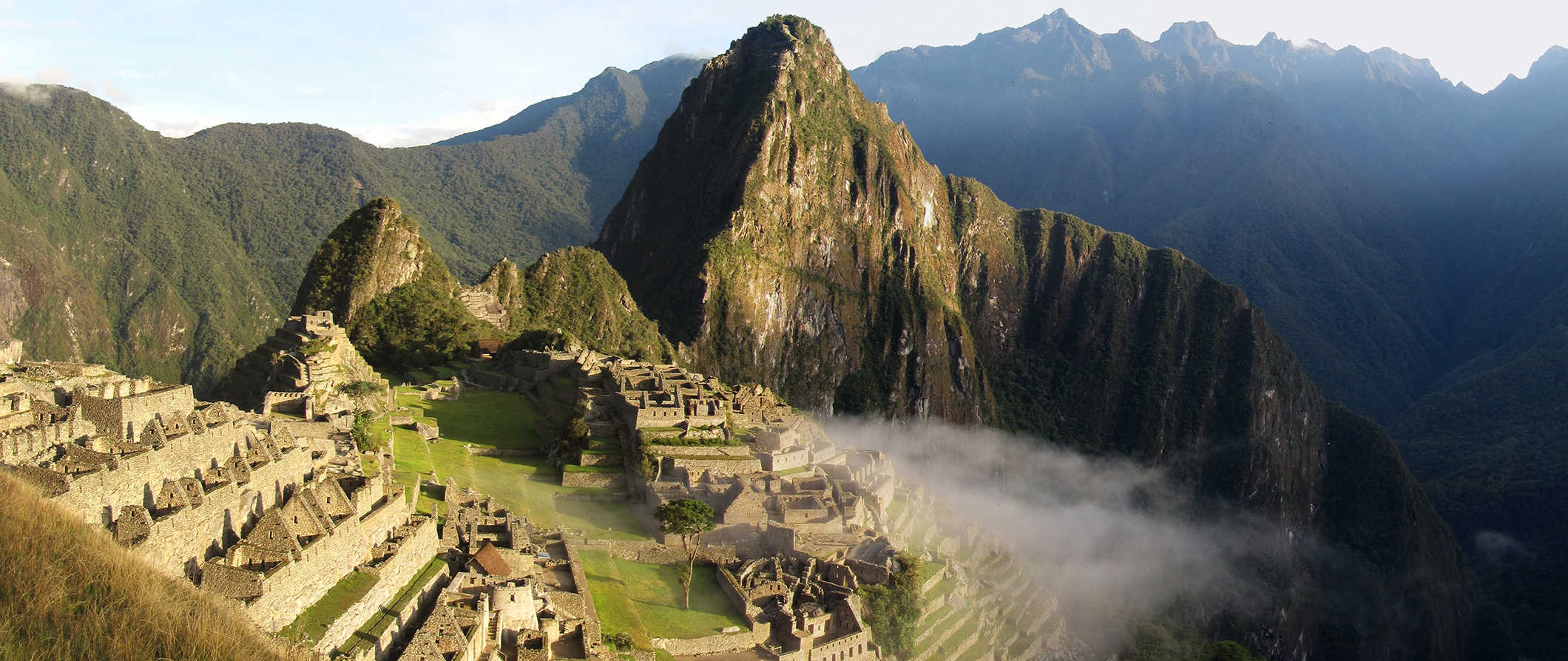
Travelers flock to Peru to hike the famous Inca Trail, explore the lush jungles, and devour their way through the incredible food scene of Lima.
But while the Inca Trail and Machu Picchu attract the majority of the attention (2,500 people visit Machu Picchu every day), there is much more to see and do in Peru if you’re willing to get out there and explore.
From the famous Lake Titicaca to the beaches in the north to the vibrant indigenous culture, Peru is bursting with things to see and do.
While many travelers just visit for a week to see the highlights, you can easily spend a month here (or more) and still not see everything.
Best of all, traveling around Peru is inexpensive. You don’t need a lot of money to visit here (even if you hike the Inca trail).
This guide to Peru can help you plan your trip, save money, and make the most out of your time in this beautiful destination!
Table of Contents
- Things to See and Do
- Typical Costs
- Suggested Budget
- Money-Saving Tips
- Where to Stay
- How to Get Around
- How to Stay Safe
- Best Places to Book Your Trip
- Related Blogs on Peru
Top 5 Things to See and Do in Peru
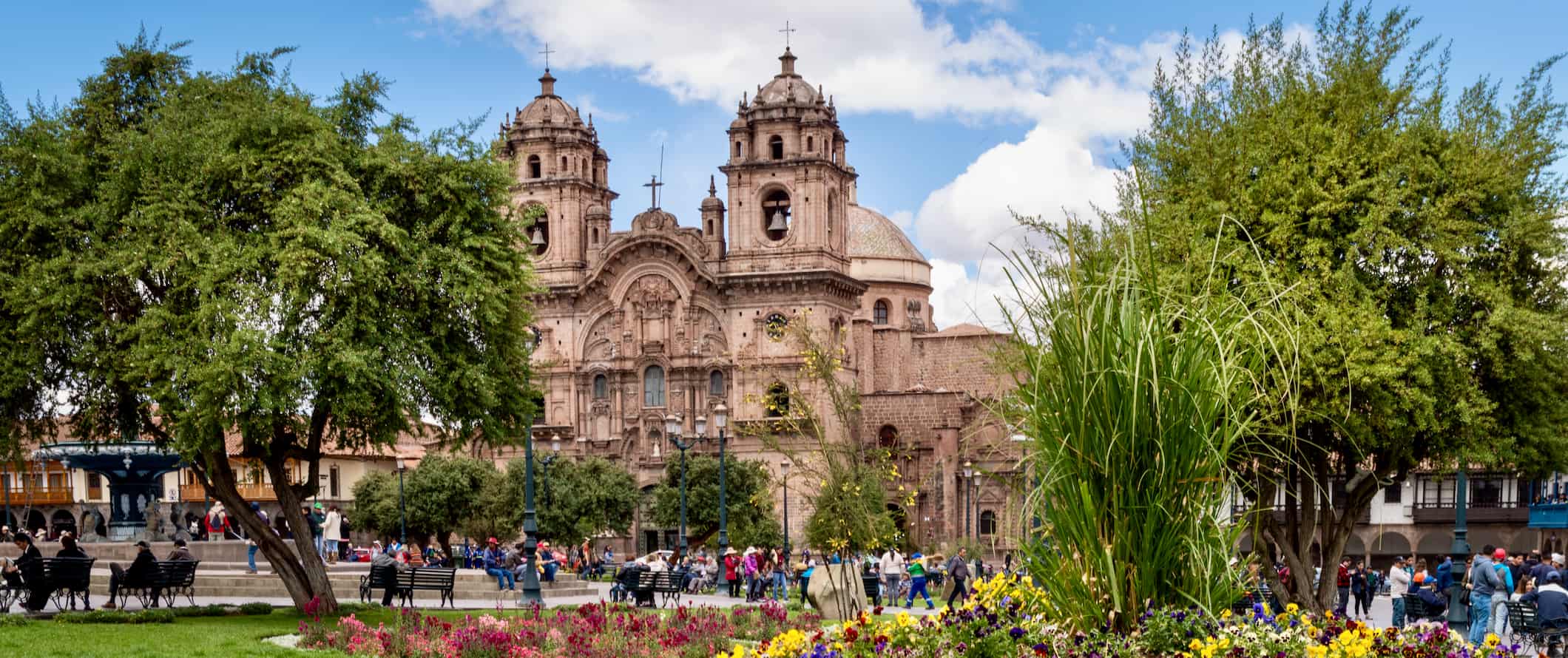
1. Explore Machu Picchu
This legendary “lost city of the Incas” is one of the most-visited tourist attractions in South America. Here you have the chance to wander around the old Inca city observing ancient aqueducts, granite and limestone temples, and other forms of Inca architecture that are all beautifully preserved. There are two ways to see Machu Picchu depending on the amount of adventure and exercise you want. There is a 4-day/3 night hike that takes you through 43 kilometers (26 miles) of steep, yet scenic uphill terrain along winding Andean mountain trails starting from Ollantaytambo. The Inca Trail gets you to the majestic Machu Picchu at dawn in time to see it before the clouds arrive mid-morning. The alternative is to wake up super early to get the train there and enter along with the tour groups competing for the beautiful morning sunset photos. (There are also longer 7-8 day hikes too if you want an even bigger challenge. Multi-day hikes start around 2,600 PEN. You can also just buy a day pass if you don’t want to hike.
2. Check out Lima
Lima is a chaotic and beautiful introduction to the country. Check out the trendy, vibrant Miraflores neighborhood that overlooks the Pacific and has plenty of restaurants and bars to try. Also, visit the Larco Museum to see its pre-Columbian artifacts, the Aliaga House for Peruvian art and artifacts, and Plaza Mayor for colonial beauty. Tour the city’s colorful markets for both food and shopping, wander around the world’s only Cat Park, or check out the Park of Love for good luck in love. At night, head to the artsy Barranco district for the nightlife and try a local drink with pisco, a local brandy. The city is a foodie hub too so don’t forget to try the ceviche!
3. Fly over the Nazca Lines
The Nazca Lines are a series of ancient geoglyphs that dominate the San José desert and Nazca Valley. There are over 10,000 lines and 300 different plant and animal figures that make up this UNESCO World Heritage Site. No one really knows how they got there (maybe aliens?) but the park itself is free to visit. If you want to splash out and get a better view, take a scenic helicopter or plane tour (they cost around 400 PEN).
4. Relax at Lake Titicaca
This stunning lake covers over 7,790 square kilometers (3,000 square miles) and sits at 3,810 meters (12,500 feet) above sea level, making it the world’s largest high-altitude lake. With deep blue water and spectacular sunsets across the lake lined with snowy mountains, this lake attracts people from all over the world to the nearby towns, which offer a mix of colonial architecture and bustling markets. There are three islands on the lake that are home to pre-Inca ruins: Isla del Sol, Taquile, and Amantani. Every year, the Peruvian side of Lake Titicaca at Puno celebrates the Fiesta de la Virgen de Candelaria in February. However, the best and driest time to visit is June, July, and August.
5. Hike the Colca Canyon
Other things to see and do in peru, 1. hike the inca trail.
Getting to Machu Picchu is best via the famed Inca Trail . This multi-day hike allows you to see the mountains, jungles, and follow the route the Incas used to take. It is a truly spectacular hike, but it is challenging and you may experience altitude sickness. There are two ways to do this hike: you can sign up to be part of an organized tour, or you can hire your own private guide. You cannot hike the trail independently. Tours start around 2,600 PEN for a 4-day, 3-night tour with a reliable, reputable company. The final leg of the hike can actually get a bit crowded, so if you can do a longer 7-day hike you’ll be able to beat the crowds and enjoy the incredible landscape before you arrive. The driest time is May-October but also unfortunately the most crowded. If you go from November-April, prepare for mud and perhaps rain but fewer crowds.
2. Visit the Islas Flotantes de los Uros
The Floating Islands of the Uros may sound like an Indiana Jones title, but it is actually the name of the group of man-made islands in Lake Titicaca. The islands are home to the indigenous Uros people who have built their own houses, islands, and boats from the tortora reeds which grow along the banks of the lake. This is an extremely touristy site and is a bit exploited as such, so it’s not for everyone. The boat tours start at 165 PEN.
3. Surf at Máncora Beach
Great fresh seafood, watersports, horseback riding, whale watching, fishing with locals, visiting the mangroves, and plenty of relaxation are the order of the day at this popular beach resort. Máncora is one of the finest beaches in South America and its year-round sunshine, two ocean currents, and beginner-friendly waves also make it Peru’s surfing Mecca. Accommodation prices can be expensive from December to March, so it’s best to book in advance. Whale watching costs 135 PEN, surfing classes start at 95 PEN, and SUP tours with sea turtles cost 175 PEN.
4. Step back through time at Batán Grande
Batán Grande, also known as the Sicán Archaeological Complex, is an archaeological site comprising 50 pyramids and tombs, which are thought to date to 750-1300 CE. Located near Chiclayo, this site was once the ancient Sicán capital and has yielded many impressive pre-Columbian artifacts. For example, a gold Tumi ceremonial knife weighing almost seven pounds was recovered from one of the royal tombs! Bring plenty of water, sunscreen, and snacks for the day.
5. Discover Cusco
This colonial city is a major tourist destination and sits on Inca-built stone foundations not far from Machu Picchu. The area is popular with trail walkers, history lovers, and party goers who come to enjoy the city’s nightlife and festivals. Cusco is the undisputed archaeological capital of the Americas and an essential part of your trip to Peru. The Cusco Tourist Ticket grants admission to most of the popular archaeological sites and attractions in the Cusco area (with some notable exceptions, including Machu Picchu). Note that transportation and guide services are separate. You can purchase either a 10-day pass that includes admission to over 16 sites (130 PEN) or one of several different “circuit” tickets that include admission to a smaller number of sites and are valid for one day only (70 PEN). Be sure to visit Coricancha (15 PEN) and Sacsayhuaman (included in the Cusco Tourist Ticket) during your visit. Right outside Cusco, take a day trip to the incredible Rainbow Mountains. For great food, head to Green Point. Plan to spend around 3-5 days in Cusco as there is plenty to see and it’s a good place to acclimate before doing any hiking as the city sits at 3,200 meters (10,500 feet) above sea level.
6. Get your Amazon fix in Iquitos
Accessible only by boat or plane, jungle-locked Iquitos is the largest city within the Peruvian rainforest. The city sits at the mouth of the Amazon and is the perfect destination for eco-tourism. The nearby Pacaya Samiria National Reserve is Peru’s largest reserve at two million hectares. It’s home to a huge range of nearly 1,000 birds, mammals, fish, reptiles, and more. A 3-day, 2-night tour through the reserve starts from around 1,400-1,500 PEN per person including food.
7. Sandboard in Huacachina
This little town is a desert oasis and a welcome relief after hiking through Machu Picchu. It’s very affordable and hostels here offer great deals for sandboarding and sand buggy tours around the nearby dunes. Two-hour tours cost about 100-125 PEN, which includes a sand buggy driver and sandboard rental. Most tours leave around 4pm so you can catch the sunset on the dunes. There is also a lagoon surrounded by palm trees in Huacachina, and you can rent a rowboat to paddle around it. A half-hour rental costs around 5 PEN per person. Huacachina is easily reached by bus from Lima, Cusco, Nazca, Arequipa, and Paracas.
8. See penguins in Paracas
Paracas is in the south of Peru and is sometimes called the “Poor Man’s Galapagos” for its impressive wildlife, consisting of over 400 different species. Thousands of birds, as well as large sea lion and penguin populations, call the area home. You can visit the Paracas National Reserve via an organized boat tour. Be sure to go early. A full-day tour of Paracas includes a boat trip to the Islas Ballestas and a bus trip around the national reserve in the afternoon. It costs about 150 PEN.
9. Walk through the White City
Arequipa is a beautiful city with a historical center that was constructed primarily from volcanic rock. Start getting to know the city by wandering around the Plaza de Armas and take in the city’s architecture over a glass of wine overlooking the main square with views of the stunning Basilica Catedral de Arequipa. Then, visit the gorgeous, vibrantly colorful Santa Catalina Monastery, see a frozen Inca mummy, and enjoy the local cuisine with favorites like shrimp soup or spicy stuffed peppers. It’s easy to see why Arequipa is undoubtedly one of the most beloved destinations in the country; everyone who visits here loves it.
10. Go to El Parque de la Reserva
This park in downtown Lima is home to the largest water fountain complex in the world, called El Circuito Mágico del Agua . There are 13 distinct fountains in total, including the Tunnel Fountain of Surprises, the Children’s Fountain, and the Fantasia Fountain, whose water jets are synchronized to music during the evening laser light shows. The park is open daily from 3pm-10pm, with beautiful, colorful light shows taking place at 6:50pm, 7:50pm, 8:30pm, and 9:30pm. The entrance fee is 4 PEN. The park also hosts a lot of events and is a popular place with dog owners too.
11. Visit Chachapoyas
This region in the Andean mountains was home to the Chachapoya civilization that lived there between 500-1432 (they were eventually conquered by the Aztecs). Today, you can visit Kuelap, the fortified city at known as “The Machu Picchu of the North.” The ruins are accessible via a guided tour, 4-hour hike, or cable car from the nearby town of Nuevo Tingo for 21 PEN roundtrip. Be sure to also visit Gocta, a beautiful waterfall that, at 770 meters (2,526 feet), is one of the tallest in the world. You can get there by taking a tour from Chachapoyas.
12. Tour Trujillo
Trujillo is the second-oldest Spanish city in Peru, located on the coast with eternal spring-like weather and widely considered the capital culture of Peru. While here, visit the archaeological site of Chan Chan, the world’s largest adobe city ever built and the largest pre-Columbian city. It was built by the Chimu, a civilization that inhabited the area until 1470 when they were defeated by the Incas. Admission is 11 PEN. Be sure to also visit Huanchaco, a small fishing town directly on the beach.
13. See Vinicunca, Rainbow Mountain
Chances are you’ve seen these colorful mountains on social media. Over the past few years, Rainbow Mountain has become a huge tourist attraction. Just keep in mind that the colors are not as vivid in real life and the place is super crowded (it’s a very popular site). Day trips and multi-day hikes are available from Cusco, usually starting around 110-135 PEN per person. There is also an “Alternative” Rainbow Mountain called Palcccoyo where you can enjoy an incredibly colorful scenic panoramic at 5,200 meters (17,060 feet). If you want to escape the hordes of people (though it’s also pretty busy these days).
14. Hike the Salkantay
If you want an alternative to the busy Inca Trail, try hiking the Salkantay. It sees a fraction of the tourists and is half the price of the Inca Trail — but just as stunning! There aren’t as many ruins, but there are epic mountain views and summits of up to 5,200 meters (17.060 feet)! Hikes can vary in length, but the 7-day hike offers the best views. You’ll need to be in decent shape though. 5-day hikes start around 1,700 PEN.
Peru Travel Costs
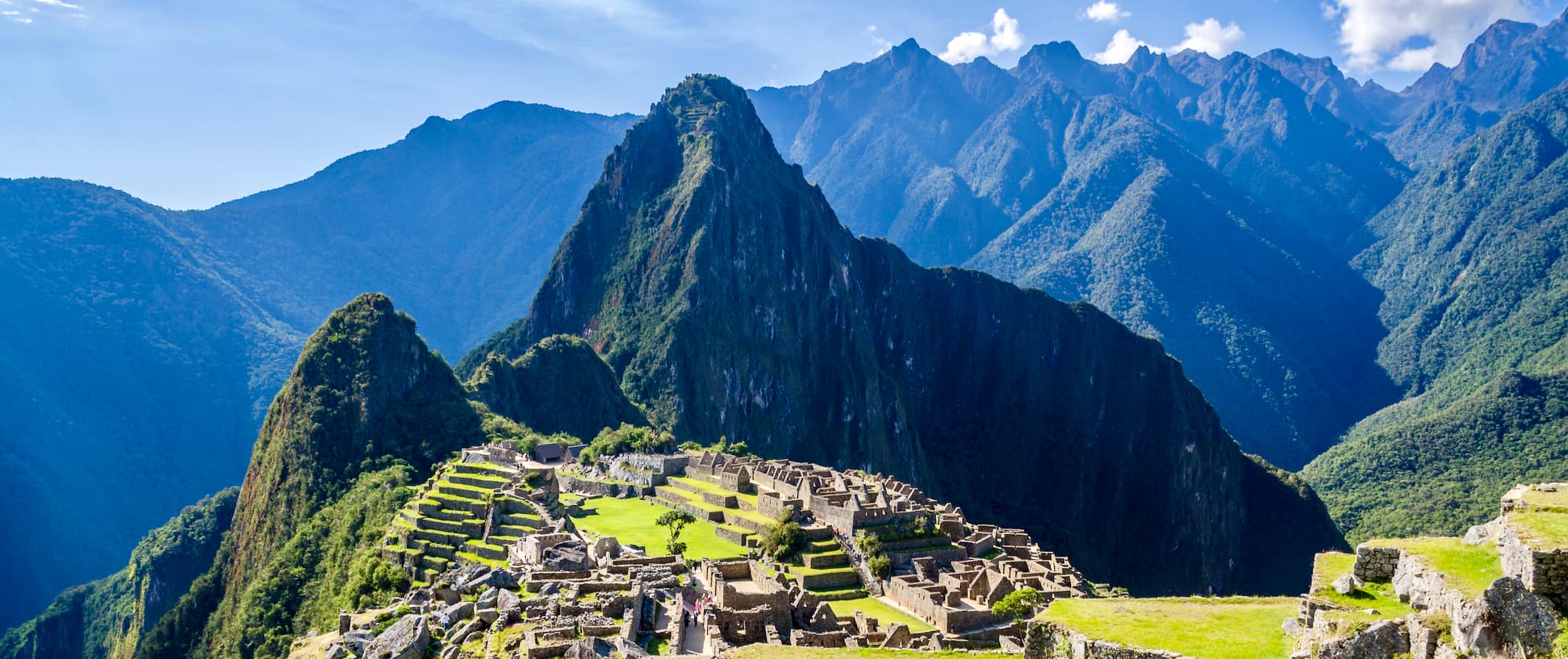
Accommodation – A bed in a 4-6-bed dorm costs 35-65 PEN while a bed in a dorm with 10 or more beds generally costs 32-38 PEN. A private room costs 115-170 PEN per night. Free Wi-Fi is standard and most hostels also have a kitchen or include free breakfast.
Budget hotel rooms with basic amenities like Wi-Fi, TV, and occasionally free breakfast cost around 85-105 PEN per night.
On Airbnb, which has limited availability in Peru, private rooms average around 100 PEN while entire homes start at 200 PEN per night. Book early though or prices will double.
For those traveling with a tent, wild camping is permitted as long as you’re not on somebody’s land.
Food – Cuisine in Peru varies from region to region, though you can expect to find staples like potatoes (most potatoes in the world originated here), quinoa, seafood, and indigenous animals like guinea pig and alpaca. Be sure to try ceviche, which is the national dish (it’s a seafood dish with fresh raw fish). Other popular dishes include stir-fried beef, roasted cuy (guinea pig), arroz con pato (rice with duck), and roasted chicken.
Overall, dining out in Peru is very inexpensive. Street food is incredibly cheap, costing 5-7 PEN for a meal from a parrilla (grill) set up on the side of the road. A plate of food at a casual takeaway restaurant serving Peruvian cuisine costs around 10 PEN.
A meal of traditional cuisine at a casual restaurant with table service costs around 15-25 PEN. If you want to splash out, a three-course meal at a mid-range restaurant costs 45 PEN.
Fast food (think McDonald’s) is 20 PEN for a combo meal. A large pizza is around 28-30 PEN.
Beer is around 8 PEN while a glass of wine or a latte is around 9 PEN. Bottled water is 2 PEN. A cocktail is 15-20 PEN and up, though many restaurants have extended happy hour specials (sometimes even all day).
If you plan on cooking, expect to pay 60-80 PEN per week for groceries such as pasta, rice, seasonal produce, and some meat. The best places to shop are the local markets, though Plaza Vea is the big grocery store chain with affordable prices as well. However, given how cheap food is here, it’s best to just eat out all the time. Buy snacks and fruit at the markets but eat out all other meals.
Backpacking Peru Suggested Budgets
On a backpacker’s budget of 135 PEN per day, you can stay in a hostel dorm, eat out for a few meals at cheap local street stalls and cook some meals, limit your drinking, take the bus to get around, and do mostly free or cheap activities like relaxing on the beach and going hiking.
On a mid-range budget of 400 PEN per day, you can afford a private Airbnb room, eat out for all your meals, drink more, take the occasional taxi to get around, and do more paid activities like going surfing or day-tripping to Machu Picchu.
On a “luxury” budget of 700 PEN or more per day, you can stay in a hotel, eat out anywhere you want, drink as much as you’d like, take some domestic flights, and do a longer multi-day trek to Machu Picchu. This is just the ground floor for luxury though. The sky is the limit!
You can use the chart below to get some idea of how much you need to budget daily, depending on your travel style. Keep in mind these are daily averages — some days you’ll spend more, some days you’ll spend less (you might spend less every day). We just want to give you a general idea of how to make your budget. Prices are in PEN.
Peru Travel Guide: Money-Saving Tips
Peru is generally pretty cheap, but it is easy to splash out here on food and tours. Here are a few hacks to cut down your costs in Peru:
- Stay at hospedajes – These are family-run hotels and are the cheapest accommodation you can find outside of hostel dorms. Try to stay in these as often as possible.
- Take public transportation – Embrace public transportation to get around — it’s super affordable so skip the taxis. You’ll save a fortune.
- Eat the meal of the day – These are set meals, often including multiple plates, that restaurants offer. Look around for set menu meals to eat out on the cheap.
- Travel off-season – For a low-cost trip, the best times to visit Peru are the fringe months of April and May or September and October. Prices are usually cheaper during these months.
- Take the colectivos – These are cheap buses that cost around 2-10 PEN for a ride. They are a bit confusing as they don’t necessarily have a schedule, but there is always a door person whom you can ask if the bus is going to your location. There are not always marked bus stops, so look for gathering crowds.
- Book tours last minute – If you are looking to do the Inca Trail and have a bit of extra time to wait for a deal, showing up in Cusco and booking a last-minute tour can save you lots of money. Booking months in advance means paying the premium price but if you can wait your patience may be rewarded. I wouldn’t recommend trying to get on last-minute if you have your heart set on doing it though since it might not work out.
- Go on a free walking tour – This is a great way to learn the history behind the places you are seeing and avoid missing any must-see stops. Free Walking Tour Peru has tours that can guide you around both Lima and Cusco. Just remember to tip your guide at the end!
- Bring a water bottle – The tap water here isn’t safe to drink so bring a reusable water bottle with a filter to save money and reduce your plastic use. LifeStraw is my go-to brand as their bottles have built-in filters to ensure your water is always clean and safe.
Where to Stay in Peru
Peru has a ton of hostels. Here are some of my favorite places to stay throughout the country:
- Pariwana Hostel (Lima)
- 1900 Backpackers Hostel (Lima)
- Loki Hostel (Cusco)
- Kokopelli (Cusco)
- Wild Rover Hostel (Cusco)
- Hospedaje Turistico Recoleta (Cusco)
- Arequipay Backpackers Downtown (Arequipa)
- Loki del Mar (Mancora)
- The Point Mancora Beach (Mancora)
How to Get Around Peru
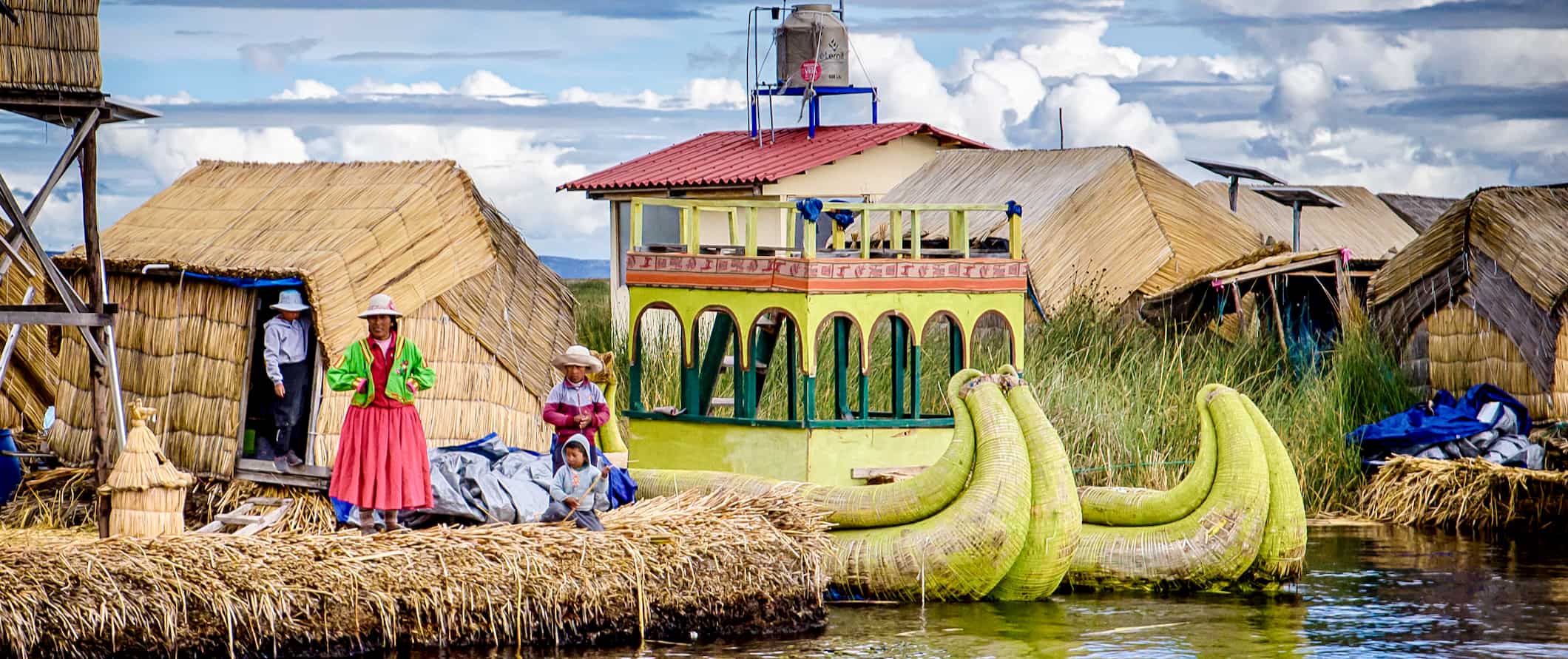
Public transportation – City buses cost around 1.50-3 PEN per trip. Microbuses ( colectivos ) are available and prices vary depending on the distance. Trips generally cost 2-10 PEN, though they are a bit hectic and take some getting used to.
Bus – Buses can take you all over Peru and are the most common way to get around for budget travelers. The usual price for a 10-hour bus journey is around 40 PEN depending on how nice the bus company is. You can use Cruz del Sur to look up bus schedules and prices. Keep in mind that any journey through the mountains will be a slow ride! Lima to Cusco takes over 21 hours and costs 185 PEN, though you can get a ticket for as low as 39 PEN if you book in advance.
Peru Hop is another reliable and comfortable bus company designed for backpackers. This bus is a hop-on/hop-off service you can take around the country. Three-day journeys from Lima to Cusco start from 683 PEN, while 7 days in Southern Peru costs 836 PEN.
Flying – Peru has five international airports (Lima, Arequipa, Cusco, Iquitos, and Piura), as well over a dozen airports with domestic service. LATAM, Avianca, and Star Peru are the main domestic airlines.
Flying between destinations isn’t always the cheapest option, but it’s a whole lot quicker. A flight from Lima to Cusco takes just over an hour (as opposed to the 21 hours by bus) and prices start around 250 PEN. Lima to Arequipa starts around 200 PEN.
Train – Like the rest of South America, the rail system in Peru is basically non-existent. There are nice tourist options though, like PeruRail and Inca Rail, which both run trains between Ollantaytambo and Machu Picchu Pueblo (the gateway to Machu Picchu). On PeruRail, tickets start from 179 PEN. Inca Rail also runs between Cusco and Machu Picchu Pueblo with tickets starting around 220 PEN.
From Lima, there’s just one train: the Ferrocarril Central Andino, the world’s highest passenger train, which travels across the Andes to Cerro de Pasco and Huancayo. One-way fare starts from 230 PEN. However, service is limited — sometimes the train only runs once a month. Journeys are currently suspended due to Covid so be sure to check their website for updates.
Car rental – I don’t suggest renting a car here as the drivers are aggressive, the roads are poorly maintained, and accidents are common. If you do decide to rent a car, use Discover Cars to find the best prices.
When to Go to Peru
Peru has just two seasons: wet and dry. May through October is the dry season, while November through April is the rainy season. The wettest months are from January to the end of April. This isn’t a great time to visit Peru — at least not in the mountain areas, where roads and hiking trails may become blocked or closed.
Most people come to Peru from the beginning of May to the end of November, with July and August being the busiest months. May and September are great months to visit, as tourism slows down slightly but temperatures are still pleasant.
If you want to spend more time in the mountains, June to September has clear, sunny days (but chilly nights). This is a good time to trek the Inca Trail. It’s also the best time to visit the Amazon Basin, when mosquitos are fewer.
Temperatures on the desert coast can get as high as 25-35°C (77-95°F) from December to April, while temperatures cool off from May-October. In the highlands from May-October, you can expect temperatures to reach 20-25°C (68-77°F).
How to Stay Safe in Peru
Peru is a pretty safe place to backpack and travel around, even for solo travelers, and even for solo female travelers. Your biggest worry is petty theft, which is rampant in the bigger cities and on overnight buses. Don’t flaunt expensive jewelry or belongings. Avoid taking your phone out in public if you can. Lock your bags on overnight buses and keep your valuables secure and out of sight. It’s easy to get robbed if you aren’t careful here (especially at night).
If you’re in Lima, don’t walk around alone at night, unless you’re in the safer neighborhoods (Miraflores and Barranco). Smaller cities and towns are perfectly safe to walk around alone day and night.
Solo female travelers should generally feel safe here, however, the standard precautions apply (never leave your drink unattended at the bar, never walk home alone intoxicated, etc.).
Scams aren’t super common but if you’re worried about getting ripped off, here’s a list of common travel scams to avoid .
If you’re doing any hiking, check the weather in advance and bring plenty of water. If you’re hiking to Machu Picchu, arrive early to adjust to the altitude. 3-5 days early can make all the difference!
If you experience an emergency, dial 011 for assistance. If you’re in one of the bigger cities, you can also seek out the tourism police.
For more in-depth coverage of how to stay safe in Peru, check out this post that answers some frequently asked questions and concerns.
The most important piece of advice I can offer is to purchase good travel insurance. Travel insurance will protect you against illness, injury, theft, and cancellations. It’s comprehensive protection in case anything goes wrong. I never go on a trip without it as I’ve had to use it many times in the past. You can use the widget below to find the policy right for you:
Peru Travel Guide: The Best Booking Resources
These are my favorite companies to use when I travel. They consistently have the best deals, offer world-class customer service and great value, and overall, are better than their competitors. They are the companies I use the most and are always the starting point in my search for travel deals.
- Skyscanner – Skyscanner is my favorite flight search engine. They search small websites and budget airlines that larger search sites tend to miss. They are hands down the number one place to start.
- Hostelworld – This is the best hostel accommodation site out there with the largest inventory, best search interface, and widest availability.
- Booking.com – The best all around booking site that constantly provides the cheapest and lowest rates. They have the widest selection of budget accommodation. In all my tests, they’ve always had the cheapest rates out of all the booking websites.
- Get Your Guide – Get Your Guide is a huge online marketplace for tours and excursions. They have tons of tour options available in cities all around the world, including everything from cooking classes, walking tours, street art lessons, and more!
- SafetyWing – Safety Wing offers convenient and affordable plans tailored to digital nomads and long-term travelers. They have cheap monthly plans, great customer service, and an easy-to-use claims process that makes it perfect for those on the road.
- LifeStraw – My go-to company for reusable water bottles with built-in filters so you can ensure your drinking water is always clean and safe.
- Unbound Merino – They make lightweight, durable, easy-to-clean travel clothing.
- Top Travel Credit Cards – Points are the best way to cut down travel expenses. Here’s my favorite point earning credit cards so you can get free travel!
Peru Travel Guide: Related Articles
Want more info? Check out all the articles I’ve written on Peru travel and continue planning your trip:
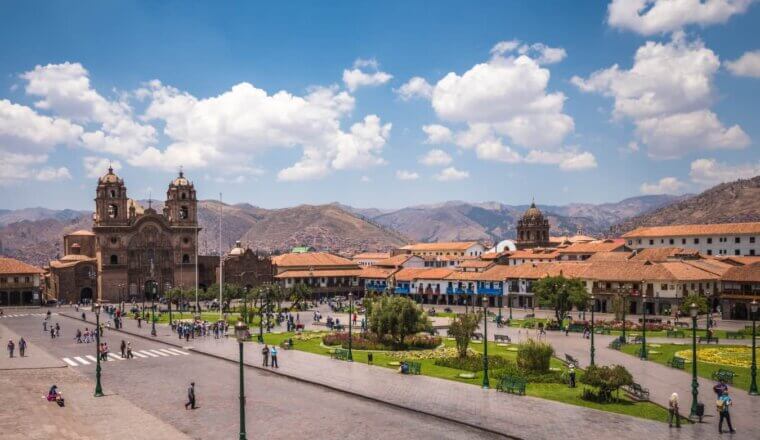
The 6 Best Hostels in Cusco
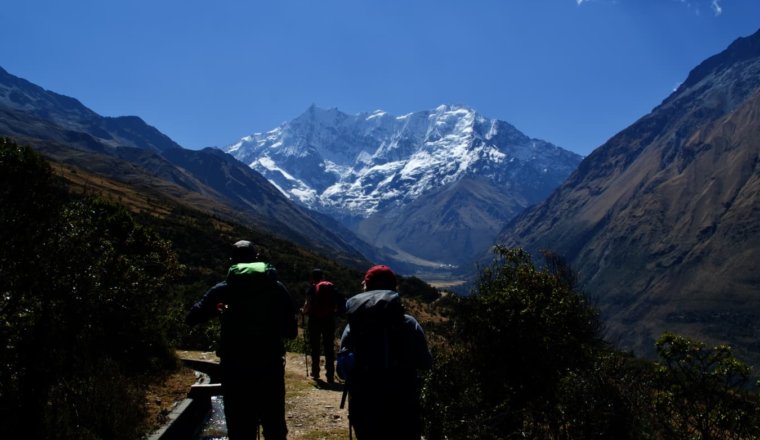
The 4 Best Tour Companies in Peru
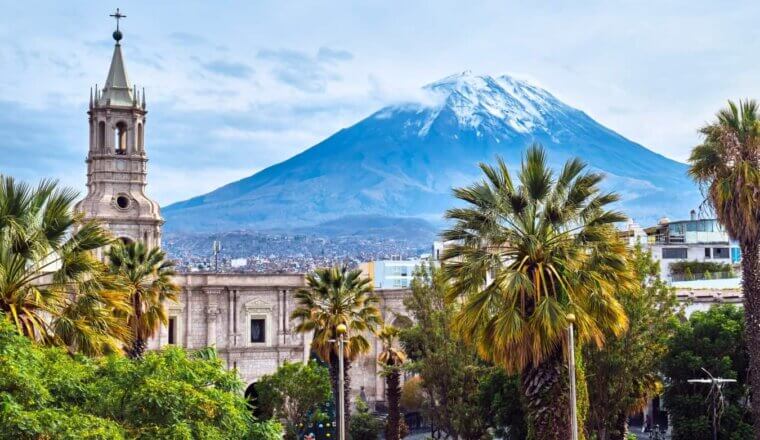
Is Peru Safe to Visit?
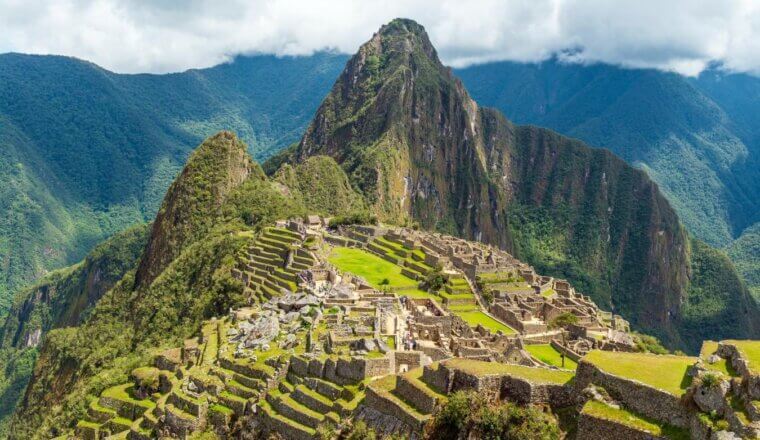
How to Hike the Inca Trail
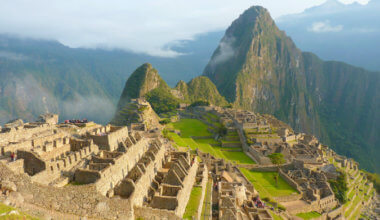
How to Turn Right at Machu Picchu and Find Atlantis
Get your free travel starter kit.
Enter your email and get planning cheatsheets including a step by step checklist, packing list, tips cheat sheet, and more so you can plan like a pro!

- Where To Stay
- Transportation
- Booking Resources
- Related Blogs

- Destinations
Peru Travel Guide
While Machu Picchu and all-things-Inca deservedly make South America’s third largest country a bucket-list staple, there are a world of Peruvian experiences beyond the ancient that are worth discovering. Surf the sun-splashed Pacific beaches; tour historic Spanish colonial towns; soar via zipline through the canopy of the world’s largest rain forest, the Amazon, covering nearly half of the country; and trek into the highlands of the cloud-topped Andes, the second highest mountain range in the world. —Maryellen Kennedy Duckett
- Terms of Use
- Privacy Policy
- Your US State Privacy Rights
- Children's Online Privacy Policy
- Interest-Based Ads
- About Nielsen Measurement
- Do Not Sell or Share My Personal Information
- Nat Geo Home
- Attend a Live Event
- Book a Trip
- Inspire Your Kids
- Shop Nat Geo
- Visit the D.C. Museum
- Learn About Our Impact
- Support Our Mission
- Advertise With Us
- Customer Service
- Renew Subscription
- Manage Your Subscription
- Work at Nat Geo
- Sign Up for Our Newsletters
- Contribute to Protect the Planet
Copyright © 1996-2015 National Geographic Society Copyright © 2015-2024 National Geographic Partners, LLC. All rights reserved
Cookies on GOV.UK
We use some essential cookies to make this website work.
We’d like to set additional cookies to understand how you use GOV.UK, remember your settings and improve government services.
We also use cookies set by other sites to help us deliver content from their services.
You have accepted additional cookies. You can change your cookie settings at any time.
You have rejected additional cookies. You can change your cookie settings at any time.
Bring photo ID to vote Check what photo ID you'll need to vote in person in the General Election on 4 July.
- Passports, travel and living abroad
- Travel abroad
- Foreign travel advice
Safety and security
This guide also has safety advice for regions of Peru .
There is a high threat of terrorist attack globally affecting UK interests and British nationals, including from groups and individuals who view the UK and British nationals as targets. Stay aware of your surroundings at all times.
UK Counter Terrorism Policing has information and advice on staying safe abroad and what to do in the event of a terrorist attack. Find out how to reduce your risk from terrorism while abroad .
Terrorism in Peru
Terrorist attacks in Peru cannot be ruled out.
Attacks could be indiscriminate, including in places visited by foreigners. Stay aware of your surroundings, keep up to date with local media reports and follow the advice of local authorities.
Political situation
Political protests in Peru are unpredictable and can escalate quickly. Demonstrations can become violent and lead to roadblocks, travel disruption, including trains, and suspension of immigration services at land borders. This is often without notice or notification of estimated re-opening timelines.
Local groups can announce strike action, with little or no notice, particularly in areas connected to mining. These may quickly spill over from one region to another.
It’s illegal for foreigners in Peru to participate in political activities, including demonstrations against the government. You may face detention or deportation if you take part in a demonstration. To reduce any risk:
- avoid large gatherings and protests
- stay in a safe place
- follow the instructions of army or police officers
- take the advice of local authorities or tour operators
- monitor local media, including social media channels
- be wary of unverified, unofficial information
- make sure you travel with enough food, water, local currency and personal medication
- allow extra time to reach your destination
Protests in Lima often happen in the historic centre, where access can be restricted, but they can also spread to other areas. Other regions that have seen recent protests include Arequipa, Ayacucho, Cusco, La Libertad, Madre de Dios and Puno.
Some train services in the south, including those to and from Machu Picchu, are occasionally suspended or disrupted because of protests. Contact your travel provider for further advice on disruptions, and check if changes need to be made to your journey.
Contact an iPeru office or iPeru online for help with issues travelling to different regions of Peru.
The British Embassy’s ability to provide help will be very limited where protests or criminal activity results in travel disruption or damage to the infrastructure.
Help from local authorities, including police and emergency services, will also be very limited, especially if airports, roads and railroads are affected.
Organised crime
There is a higher risk to your safety in areas where there is organised crime and terrorism linked to drug production. This includes the border areas with Ecuador, Colombia and Brazil and the Valley of Apurímac, Ene and Mantaro rivers ( VRAEM ). Remnants of the Shining Path terrorist movement are still active in some of the main coca growing areas in central Peru (Alto Huallaga, Aguaytia and VRAEM river basins).
Street crime
Street crime, including muggings and thefts, is a significant problem in Lima, Cusco, Arequipa and other major cities. Be alert in public places and when withdrawing cash from ATMs.
It is safer to use ATMs inside banks, supermarkets or large commercial buildings during business hours. Do not walk on your own in quiet areas or at night.
There have been a number of robberies at gunpoint of British tourists and residents. Attacks can take place in tourist areas of Lima such as Miraflores and Barranco. To reduce your personal risk:
- avoid wearing or displaying expensive items
- avoid using your phone at the roadside, as motorbike riders may snatch it
- report crimes to local police as soon as possible
- ask lodge or hotel staff for help if an incident happens on site
Criminals target cars stopped at traffic lights. Keep your doors locked and windows shut while driving.
Protecting your belongings
Petty crime, such as pickpocketing and bag-snatching, is common, so:
- keep your belongings secure
- do not leave bags unattended
- on bus journeys, keep your passport with you
Bogus taxi drivers
There is a risk of robbery by bogus taxi drivers, especially at Jorge Chavez International Airport and bus terminals. Bogus taxi drivers and thieves pretending to be tour operators sometimes approach arriving passengers. To reduce the risk:
- use licensed telephone or app-based taxi services and do not hail taxis on the street
- ask your hotel to book taxis for you
- use one of the official taxi companies at the airport , located at desks directly outside the baggage hall
- use one of the taxis registered at bus terminals
Kidnappings and hold-ups
Tourists, especially those travelling alone, are at risk of ‘express kidnapping’. Victims are taken hostage and forced to withdraw money from ATMs for their release, usually at night. Incidents often involve armed criminals posing as taxi drivers, or taxi drivers working for organised gangs. Provincial and inter-city buses are sometimes held up by armed robbers.
If a kidnapping or hold-up happens to you:
- do not attempt to resist attackers
- agree to any demands for cash or goods
- report the incident to the police as soon as possible
Criminals can also fake kidnappings by contacting the numbers from a stolen mobile phone and claiming to have kidnapped the owner. They then demand a ransom. Report it to the police if you suspect this has taken place.
Sexual assault
There have been some cases of rape or sexual assault of tourists, mostly in the Cusco and Arequipa areas. Unscrupulous tour agents have targeted young females, travelling alone in the Cusco area. You should:
- buy your own drinks and keep sight of them at all times
- try to seek help from people you know
- report incidents to the police as soon as possible
For information on reputable tourist services around Peru, contact iPeru .
Money scams
Counterfeit US and Peruvian banknotes are in circulation. There have been reports of intis (former Peruvian currency now out of circulation) being used fraudulently by street money changers in Cusco tourist areas.
Laws and cultural differences
Personal id.
Carry an identification document with you at all times as the Peruvian police may ask to see it.
Illegal drugs and prison sentences
Illegal drug use and drug trafficking in Peru carry lengthy jail sentences. Prison conditions in Peru are extremely poor and the British Embassy cannot intervene in police or judicial matters, or secure more favourable conditions.
You should:
- pack your luggage yourself and keep it with you at all times
- not carry anything through customs for anyone
- not take coca leaves or coca tea out of the country – it is illegal to import these items into the UK
Some British nationals have been targeted by drug couriers through email scams. The fraudsters ask you to travel to Peru where you’ll be given some items to take. These items contain drugs. You’ll face detention for drug trafficking if convicted.
Military photography
Do not take photographs of anything of a military nature.
LGBT+ travellers
Same-sex sexual activity is legal in Peru, but social attitudes are generally conservative. Crimes against the LGBT+ community are not included in hate crime legislation and same-sex partnerships are not formally recognised.
Same-sex couples showing affection in public may receive unwanted and negative attention.
Read more advice for LGBT+ travellers .
Outdoor activities and adventure tourism
Make sure your insurance covers you for all planned activities.
Unregulated tour services
Make sure that agencies providing adventure activities like zipline, canopy tours, bungee jumping, paragliding, kayaking, rock climbing, sand buggies and surfing have a licence. You should also check their health and safety precautions. For updated information on tour and sport services, contact iPeru .
Hiking and mountaineering
Peru’s highest peaks are in the Cordillera Blanca Mountains. Several hikers have died and others had to be rescued after serious accidents. Much of the region is inaccessible by helicopter so rescues are usually carried out on foot. Contact the iPeru tourist office in Huaraz – phone: 0051 (43) 428 812 – before you set off.
Sand buggies
There have been deaths and accidents involving recreational sand buggies, particularly in the sand dunes around Ica and Lake Huacachina. These buggies are unregulated and the drivers and agencies take no responsibility for the welfare of passengers.
There are unauthorised surfboard rentals at the beaches of Miraflores. There may not be lifeguards on beaches.
River rafting and Amazon riverboat cruises
For more information or to check the credentials of rafting and cruise operators, contact iPeru .
See ‘Regional risks’ for more information about the risks of travelling in the Amazon region .
Spiritual cleansing
Shamans and other individuals offer ‘spiritual cleansing’ (Ayahuasca or San Pedro) to tourists in the Amazon area, northern Peru and Cusco. This service typically involves drinking a brew containing dimethyltryptamine (DMT), a hallucinogenic drug that is a Class A substance in the UK. This brew is not regulated and its interaction with existing medical conditions is not well understood. People have suffered serious illnesses and in some cases death after taking part in these ceremonies. Spiritual cleansing retreats are usually some distance from populated areas making it difficult to access medical attention for those who need it.
There have also been reports of sexual assault during these ceremonies. There is guidance to support you if you have been sexually assaulted or raped in Peru .
Transport risks
Road travel.
If you are planning to drive in Peru, see information on driving abroad .
You can use a UK photocard driving licence to drive in Peru (if your immigration stay permit is valid) for up to 6 months. If you still have a paper driving licence, you may need to update it to a photocard licence or get the correct version of the international driving permit ( IDP ) as well.
Carry your passport or a valid ID (‘carne de extranjería’ if you are a resident) with you at all times when driving.
Take particular care if you are driving close to places where protests are taking place. Do not attempt to pass blockades.
Driving standards in Peru are poor. Drivers often ignore stop signs and traffic lights, and fatal crashes are frequent.
Drivers do not always show concern for pedestrians. You should be extra cautious when walking alongside traffic.
Bus crashes are common, especially at night. Only use reputable transport companies, and where possible, avoid overnight travel, especially in mountainous and remote regions.
Extreme weather and natural disasters
Rainy season.
The rainy season in Peru runs from November to May bringing heavy rain and snow in northern Peru, the Andes, including Cusco, and other parts of the country.
It can lead to the disruption of some travel services, the restriction of some inter-provincial travel by road, flight delays and the temporary closure of some tourist sites.
Rockslides, mudslides and snow can cause disruption to walking routes, road and rail travel in mountain and jungle areas:
- across the Cusco Region
- routes to Machu Picchu (including the alternative Santa Maria-Santa Teresa-hydroelectric plant route, and the Salkantay route)
- the route to Manu (in Cusco and Madre de Dios)
- across northern regions of Peru
- check the latest conditions with your tour operator
- travel with enough food, water, cash in local currency, medication and warm clothes
- monitor local media for updates on travel information before starting your journey
- contact iPeru before you set off
Earthquakes
Peru is in an active earthquake zone and there are frequent tremors.
Follow any advice given by the local authorities. The US Federal Emergency Management Agency has advice about what to do before, during and after an earthquake .
Volcanic eruptions
If you are planning to visit areas of known volcanic activity, listen to all warnings and follow the advice of the local authorities.
Peru’s most active volcano, Ubinas, has been emitting gas and ash recently, leading to some local villages being evacuated, affecting 30,000 people.
The US Federal Emergency Management Agency has advice about what to do before, during and after a volcanic eruption .
Tsunamis and high tides
Although tsunamis are rare in Peru, higher tides often happen either after an earthquake or for other reasons throughout the year. See the Peruvian Directorate of Hydrography and Navigation for information.
Related content
Is this page useful.
- Yes this page is useful
- No this page is not useful
Help us improve GOV.UK
Don’t include personal or financial information like your National Insurance number or credit card details.
To help us improve GOV.UK, we’d like to know more about your visit today. Please fill in this survey (opens in a new tab) .

Peru Travel Guide
Your ultimate peru travel guide, with tips, and things to see and things to do in peru. great for first-time and returning travelers..
It is unsurprising that a visit to Peru makes it at the top of many traveler’s bucket lists.
A country rich in culture, history, and landscape; their cuisine is an epicure’s dream come true, and they house one of the Seven Wonders of the World; Machu Picchu. It’s not expensive, and the country takes the international cake for geographic diversity.
Not only is it home to ancient ruins, it houses the Amazon River, excellent beaches, a vast desert and unique wildlife. When you visit Peru once, you’ll want to go back again and again.
This Peru travel guide will help you plan your next vacation.
Popular City Guides
- Machu Picchu
- Amazon River Cruise
- Paracas Peru
- Rainbow Mountain
Our Highlight
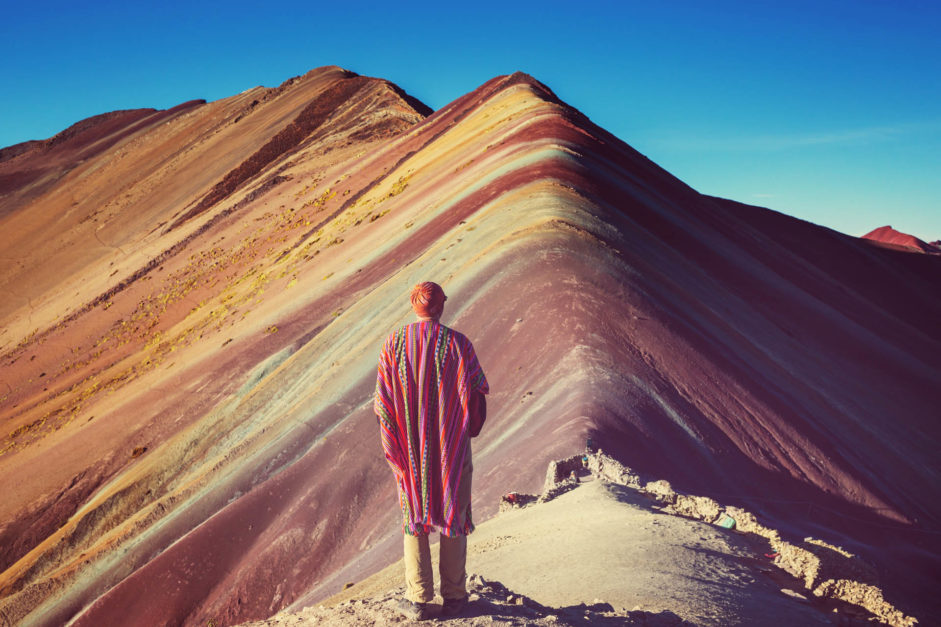
Table of contents
Table of Contents
Fast Facts about Peru
- Peruvian power voltage is 200 V 60 Hz; Power sockets A, B & C
- The Peruvian currency is the Peruvian Nuevo Sol (PEN) and is around 1 PEN for 0.33 USD
- Two-thirds of Peru is covered in prime Amazon Rain Forest.
- Bathroom breaks can be quite an adventure in Peru. First off, never ever flush toilet paper down the toilet, it can (and will) clog it, instead always remember to throw everything away in the adjacent trash bins. Also make sure to bring along some extra t.p., wet naps and spare change as many public toilet facilities are pay-to-use.
- The pisco sour is Peru’s national drink and is made using Pisco brandy, lemons, sugar water, egg whites, ice and finished with bitters. It’s really good, try it!
- Fun Fact: Peru is home to the highest sand dune in the world. Cerro Blanco located in the Sechura Desert near the Nazca Lines measures 3,860 feet (1,176 meters) from the base to the summit.
Things to See and Do in Peru
- Visit Machu Picchu – visit the land of the Incas and walk upon the mythical ruins of Machu Picchu for an unforgettable travel experience.
- Hit the waves, dude… – Peru’s waves rarely grace the pages of popular surf magazines, but with 1,400 hundred miles of desert coastline, you can bet that Peru has some amazing swells. The best surf spots can be found in Northern Peru. In fact Chicama (in Peru) has the longest left point break in the world.
- Eat cuy – if you are feeling extra adventurous then why not try c uy or Guinea Pig, a traditional dish eaten in Peru during important festivals, served crispy complete with head, legs and eyes.
- Visit the Amazon – cruise the Amazon river, chat with locals, experience breath-taking sunsets, spot pink dolphins and so much more!
- Visit Lake Titicaca – located along Peru’s border with Bolivia, Lake Titicaca is the largest lake in South America and is also the highest navigable lake in the world with a surface elevation of 3,812 meters.
- Hike Rainbow Mountain – Take an Adventure and hike the colourful layers of Rainbow Mountain.
- Take A Photography Safari – join some of the best photographers in the industry as you embark on a journey through the Tambopata National Reserve looking for that perfect shot.
- Admire the Sand Dunes at sunset – Huacachina is the ideal place to walk up to the top of a dune and watch the sunset over the desert.
- Set sail to Isla Ballestas – known as the poor man’s Galapagos, these islands are part of an amazing conservation area of more than 700,000 acres filled with different types of wildlife.
Peru Travel Guides
- Best Things to do in Peru
- Things to do in Iquitos, Peru – A Gateway to the Amazon
- Hiking Rainbow Mountain
- How to Plan a Trip to Machu Picchu
- Top Three Little Known Hiking Day Trips in Cusco, Peru
Accommodation
Budget – You can stay at budget hotels in Peru for around $20 US. These may include shared rooms, free Wi-Fi, and be close to public transportation.
Mid Range – Mid-range hotels can start around $50 and include private rooms, a restaurant and room service.
High End – Luxury hotels begin at $80 per night and may include a fitness center, spa, and upscale lounge.
Check out our favorite booking platforms Booking.com , Tripadvisor and VRBO for the best deals on accommodation.
- Papas a la huancaína – A Peruvian staple is golden potatoes covered in a cheese sauce with spices.
- Pisco sour – The national drink is something you must try, which is pisco, egg white, lemon juice, and simple syrup.
- Ceviche – You can find this popular dish in almost any restaurant which is cold fish mixed with lime juice, chiles, onion, and salt.
- Rocoto relleno – These spicy peppers are stuffed with meat, spices, garlic, raisins, and onions.
- Read: 5 Authentic Cusco Restaurants Where you Can Eat Like a Local
The Best Ways to Get Around Peru
Getting to peru:.
Flights: You can fly from European cities such as Madrid, Paris, and Barcelona directly. There are also several direct North American flights including Toronto and Miami.
You can check for the best flights to Peru on Skyscanner .
Transportation:
uses : Buses are available in larger cities, but they won’t always arrive on time or have an obvious bus stop so you may need to ask around. Economic buses are often your only choice within the city and start at 5 PEN, but you can pay more for a luxurious bus when going from city to city.
Taxis / Uber : Taxis are available starting at 5 PEN, but not all of them are regulated. You can look at the roof to find a company number to find a trustworthy one. Uber is available sparsely in bigger cities.
Car Rental: Car rentals start at 80 PEN per day. You can also compare prices here .
When to go To Peru
Peru has a very diverse landscape with deserts, tropical coasts, Amazon Rainforests, and high Andes mountains. Travel and temperatures vary. Peru can be visited any time of the year but here is a breakdown to help you decide what is best for you.
May – October is Peru’s dry season and the best time for hiking the Inca Trail, visiting Machu Picchu, Cusco, and Sacred Valley. July and August are the busiest months and trails are packed. May and October are good shoulder season with good weather and a bit fewer crowds.
May-Oct is also prime season for Amazon Travel: We visited the Amazon late November and while we had a few spots of rain, it was only in late afternoon or evening. It was very hot at this time of year.
You can visit the Amazon any time of the year, just expect more rain and mosquitoes in the rainy season. November – April is the rainy season and mountain passes can be impassable at this time of year. Note: The Inca Trail is closed for the month of February. Feb-April are the wettest months.
Dec – April – This is a good time of year to visit the desert region as it is hot and dry. Any time of Year – The West Coast and Lima are good to visit any time of the year.
Where to Stay in Peru
Novotel Cusco – This Cusco hotel is close to the airport and offers breakfast served in your room for a fee. There’s also a play area for kids, making it great for families that are traveling.
Dazzler Lima – This Lima hotel has a shuttle service available and free parking if you’re driving. They also offer a fitness center and in-room massage services.
Hotel Stefanos – This hotel is close to the airport in Lima as well as the shopping district. They have a free breakfast buffet and a business center as well.
What to Pack for Peru
Peru’s terrain ranges from desert to jungle and mountain to coast. February and March are generally fair everywhere. The mountains tend to be rainy from November to March and the Highlands between October and April. Lima is most humid from June through September and the Amazon is always hot and humid.
- Personal Safety products – Certain areas in Peru are known as pickpocket hotspots. Before leaving for your trip, make sure to pack some personal safety products , like money belts and locks, so that you can keep your valuables safe on your trip.
- Get Medical Insurance – adventure travel is common in Peru, but if you plan on trekking in the amazon; paragliding and/or hiking, make sure to be covered just in case .
- Pack accordingly depending on the season – Peru is split into two periods: the wet (November – March) and dry (April – October) season. During the wet season make sure to pack a rain slicker, jacket or poncho, water-resistant shoes with rubber soles and an umbrella.
- During the dry season, due to the geographic diversity of Peru, travellers might experience a range of different climates depending on region and time of day, so make sure to bring a couple of sweaters or a jacket with a scarf, hat and a pair of gloves.
- Bring a water bottle – water is not potable in Peru, so make sure to pack a water bottle that is easily refillable, especially if you plan on doing any adventure sports!
- Plan for altitude – when hiking to Machu Picchu, you will fly into the town of Cuzco. Cuzco is over 3000 metres (9000 feet) so you will be immediately at altitude. We recommend visiting your doctor or a travel clinic before traveling to Peru to have them prescribe Diamox to help with altitude sickness.
- Pack a hat – The sun can be very hot especially in the desert and the Amazon. A sun hat like a breathable Tilly hat is an important item in your travel gear.
Read our Travel Packing List for our complete packing list.
Peru Travel Guide: Best Booking Resources
Whenever we travel to we make sure to start with these companies. We have tried a lot of different ones over the years and all of these have consistently proven to be the best when it comes to offering great prices.
We have used every one of these personally and continue to do so.
- Booking.com : This is our go site to when comparing prices for accommodation. It usually has the cheapest prices, especially in Europe and we love their interface. Not to mention you get free cancellation and you are guaranteed the best price.
- Trip Advisor : What we like about Trip Advisor is that we can look at all the reviews and then book our accommodation. TripAdvisor is where we go when we want to compare prices with multiple accommodation providers.
- VRBO : is the main search engine we use when we are looking for a home or apartment rental. It can sometimes be cheaper than hotels and it is the best way to stay in areas that offer a more local feel.
- Hostelworld : With one of the largest databases of hostels in the world, Hostelworld is the go-to site when you are looking for budget accommodation.
- Skyscanner : This is the first place we check for flights. It consistently comes back with the cheapest and best options. It allows us to compare a lot of airlines to get the best price.
- Rome 2 Rio : If you want to see how to get somewhere by plane, train, bus, ferry or car Rome2Rio lays it all out for you as well as related costs.I love how they show it all to you on a Google Map and it works offline.
- Get Your Guide: For all your day trip and city guide needs, we use Get Your Guide. It has the world’s largest collection of things to do with more than 30,000 activities in 7500 destinations.
- World Nomads Insurance: When traveling to Italy you should always have travel insurance. We have found the best bang for your buck is by far World Nomads.
Peru Travel Guide: Related Articles
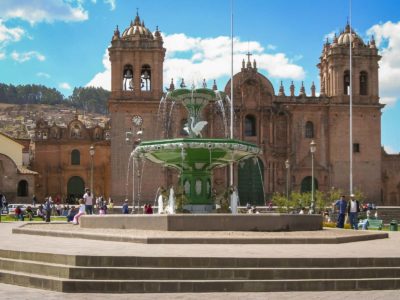
10 Amazing Things to Do in Cusco, Peru
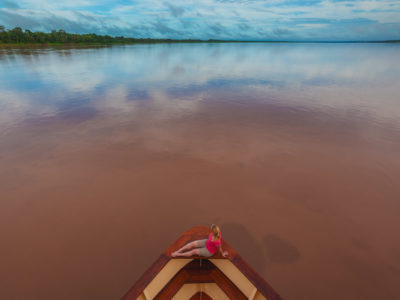
18 Interesting And Fun Facts About Peru
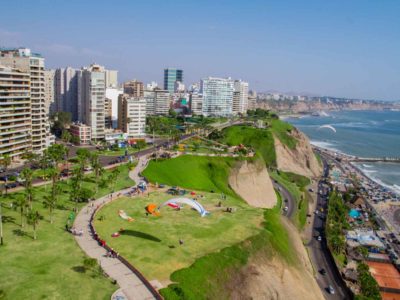
25 Best Things to Do in Lima, Peru in 2024

Cusco is an enchanting introduction to the Andean culture and the jumping-off point for both Machu Picchu and the Sacred Valley.

Machu Picchu
Machu Picchu is the Lost City of the Incas and inspires awe at first sight, especially if you journey there on the Inca Trail.

Sacred Valley
The gentle presence of the Andes mountains, a sprinkling of ancient fortresses, and villages steeped in age-old traditions.

Arequipa is famous for its delicious cuisine, distinct colonial charm, and beautiful buildings made of white volcanic stone.

Lima offers travelers a chance to experience a vibrant, dynamic city that is full of history, culture, museums, boutiques, and amazing Pacific sunsets.
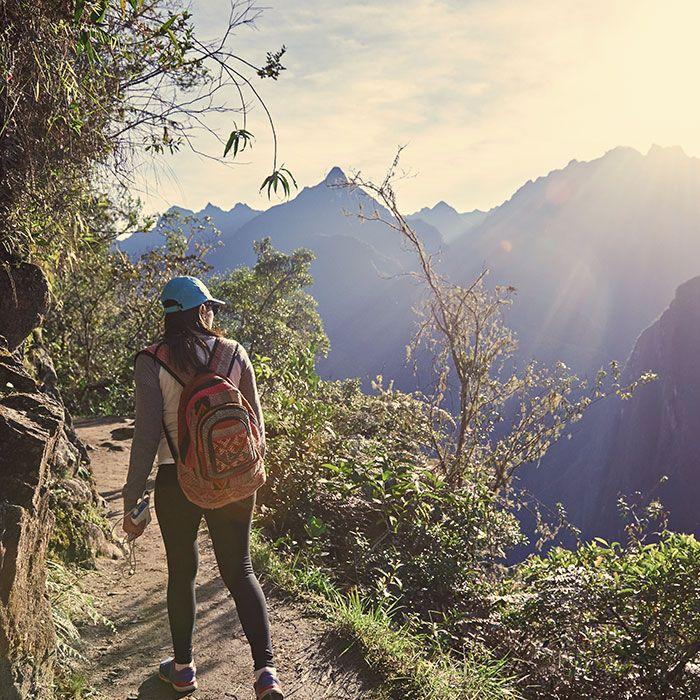
This adventurous trail follows ancient stone paths through Andean valleys, past enigmatic ruins, and into the cloud forests that surround Machu Picchu.

Lake Titicaca
Astonishment awaits on a trip to Lake Titicaca. Its mystical waters are home to diverse Andean communities and a hot-spot for some of Peru’s largest festivals.

Amazon Rainforest
The Amazon Rainforest is the largest rainforest in the world and beholds exciting adventures for nature lovers.

Galapagos Islands
Embark on a journey through the pristine national park of the Galapagos Islands and meet some of the most unique wildlife on the planet.

Browse our complete Nazca destination guide for interesting historical insights, top attractions, and travel tips.

Visit Paracas for sunny weather, desert dunes overlooking the sea, pisco and wine tours, and a rollicking community of marine fauna on the Ballestas Islands.

Book With Confidence
We're flexible! Postpone your tour with zero cost up to 10 days prior to departure.
Email: [email protected]
Sign up to receive our newsletter for great articles, stunning photos, and special deals.
1-817-230-4971
Sales & travel support
Travel Guide Peru
Book your individual trip , stress-free with local travel experts
Select Month
- roughguides.com
- South America
- Travel guide
- Itineraries
- Local Experts
- Travel Advice
- Accommodation
Plan your tailor-made trip with a local expert
Book securely with money-back guarantee
Travel stress-free with local assistance and 24/7 support
Trekking through the awe-inspiring Andes to the world-famous Inca citadel of Machu Picchu is the main draw for most who travel to Peru. But this takes in only a fraction of the country’s treasures. Peru is home to a staggering array of landscapes – puzzling geoglyphs in the arid plains of Nazca, two of the world’s deepest canyons outside the colonial town of Arequipa, the lush Amazon jungle in the east and excellent surf in the northwest.
Peru Travel Facts
Where to go in peru, best time to go to peru.
- How to get to Peru
How to get around Peru
10 best places to visit in peru, itineraries for peru, accommodation in peru, food and drink in peru, ecotourism in peru, active adventures in peru, travel visa requirements for peru, best of the fiestas, peruvian cuisine.
Andean culture is thriving in Peru. Tucked-away highland towns explode into colour on market day, and vibrant local fiestas are celebrated with unbridled enthusiasm. In recent years, the country is widely hailed as one of the world’s culinary hotspots. There’s a particular buzz of excitement over Lima’s laidback, vibrant dining scene, ranging from backstreet cevicherías to gourmet restaurants. And in the big cities, you can expect lively nightlife too.
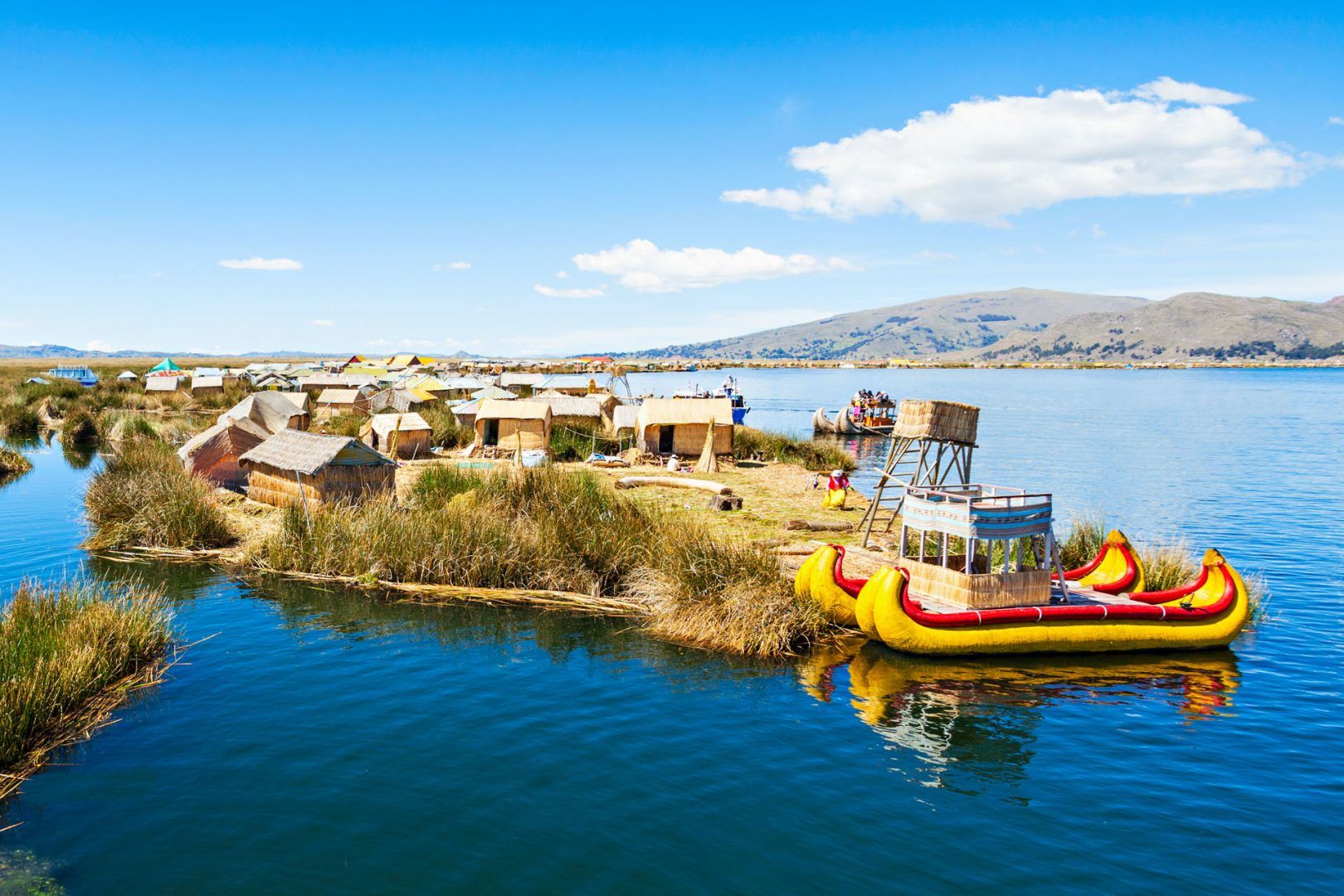
Lake Titicaca is a scenic destination to visit in Peru / shutterstock
For those looking for adrenaline-fuelled fun, a host of outdoor activities are on offer, from trekking ancient trails and whitewater rafting to paragliding and hurtling through the desert on dune-buggy rides. The potential for adventure and discovery in Peru is boundless. Packed with practical information and inspiring ideas, our Peru travel guide has everything you need to make the most of your trip. If you'd like to be more hands-on with a travel guide book, check out the Rough Guide to Peru .
- Spoken language in Peru: Spanish and the indigenous languages of Quechua and Aymara.
- Currency: Peruvian Sol (S/).
- Population of Peru: Estimated 32 million; almost a third live in the capital city.
- Capital of Peru: Lima.
- Peruvian Amazon: Over 60% of the country is covered in Amazon Rainforest – the largest area after Brazil.
- Deepest canyon : The Cotahuasi Canyon is the world’s deepest, with a depth of over 3500m (more than twice that of the Grand Canyon).
- Highest sand dune: The Cerro Blanco is the highest in the world at 2070m above sea level and 1176m from base to summit.
- National dish: roasted guinea pig ( cuy ); around 65 million eaten each year.
- Native produc e: Potatoes are native to Peru. There are over 3000 varieties grown in the country.
There is so much to discover when travelling in Peru, from exotic jungle to coastal desert via the breathtaking peaks of the Andes. Browse traditional crafts in Pisac market, hurtle yourself down a sand dune in Huacachina or kick back on a beach with a pisco sour. It’s not possible to see everything in one trip but our travel guide to Peru highlights some of the country’s finest attractions.
Lima, Cusco, Machu Picchu and around
Lima , the capital of Peru, with its mix of lifestyles and cultures and colonial elegance, has excellent museums and galleries, as well as lively bars and outstanding restaurants.
Cusco holds a wealth of wonderfully preserved Incan architecture, and an abundance of colonial treasures and flourishing Andean culture. Add to this a buzzing nightlife for an unmissable highlight of any Peru trip.
It is also the gateway to Machu Picchu , the country’s greatest archaeological attraction and a must-visit for all of those travelling Peru. The intriguing Inca citadel with its sprawl of temples and palaces is perched high up in the forested mountains of the Andes. If you have the time – and the legs for it, trekking the Inca trail is the most rewarding way to reach Machu Picchu.
Southern Peru: Nazca, Arequipa, Titicaca and around
The mysterious Nazca Lines (Líneas de Nazca), are a series of giant animal figures and geometric shapes, etched into the bleak landscape of the Pampa de San José. If the budget for your Peru trip can stretch to it, view this astonishing sight from the air.
Further south is Arequipa . Peru's second city and UNESCO World Heritage site has wonderful colonial mansions and churches fashioned from white and pale pink volcanic rock – hence the city's moniker, La Ciudad Blanca, or, The White City. This colonial gem is positioned against an extraordinary backdrop of volcanic peaks.
Colca Canyon (Cañon del Colca) is within easy reach of Arequipa and is one of the most visited attractions for those travelling in Peru. Twice the depth of Arizona’s Grand Canyon, it’s a trekker’s delight. Trails pass cascading falls, hot springs, herds of llamas and traditionally dressed farmers – while majestic condors glide silently above.
Further inland is Lake Titica c a (Lago Titicaca), the world’s largest high-altitude body of water. It’s an undeniably calming and magical sight, the deep blue water reflecting the vast sky. The islands of Islas Taquile and Amantani on the lake offer a fascinating glimpse of what life must have been like five hundred years ago.
Lesser known Peru: Trujillo and the north, the Central Sierra, the Amazon
Northern Peru is chock-full of riches, both man-made and natural – but only sees a fraction of the visitors that more obvious attractions receive.
Lively and cosmopolitan Trujillo , dubbed the City of the Eternal Spring because of its ideal climate, is Peru’s northern capital city. It’s home to several important Inca sites, including the huge sun and moon pyramids Huaca del Sol (the largest adobe structure in the Americas), and Huaca de la Luna.
Beaches in the north
Northern Peru can bask in the glory of having some of the country's best beaches. Máncora , Peru’s trendiest resort has sunshine, warm water and near-perfect surf conditions at times – plus a hot nightlife. Or head for the isolation of Lobitos for surfing, or simple peace and quiet.
The Amazon Basin
Covering over half of the country, the Amazon is teeming with wildlife – from exotic birds, anteaters, caimans, monkeys, as well as prowling jaguars and pumas (if you’re lucky). Explore parts of this huge, dense, sultry rainforest via boat trips along the river. Stay in a jungle lodge or in an indigenous village and visit the fun and vivacious city Iquitos – hot by day, with a sizzling nightlife after sundown.
The Central Sierra
Many visitors skirt this region when they visit Peru. Yet it’s a treasure trove of archeological sites, handsome colonial architecture and tradition – such as in Tarma and Ayacucho . There’s also wonderful mountain scenery for exploring on foot.
Discover more places in Peru

- Nasca and the south coast Travel Guide
- The Central Sierra Travel Guide
- The jungle Travel Guide
- Trujillo and the north Travel Guide
Figuring out the best time to travel to Peru depends on what you plan to do and where you plan to go. Temperatures and rainfall vary across the country.
If you’re making a beeline for the desert coast and stopping off in Lima , you’re best off going between December and March, when the sun is shining and it’s hot. Between April and November it’s cooler and misty. There are occasional showers over Lima, although the north generally is mostly dry.
The Andes, on the other hand, is under heavy rains from December to March, yet warm and pretty dry from June to September. The jungle is simply hot and humid throughout the year, with heavier rainfall from December to March. Find out more about when to go to Peru .
Most people fly in and arrive at Jorge Chávez airport in Lima. There are no direct flights from the UK to Peru and flights usually involve a stop in Europe or the US. Take a look at Skyscanner for flight options into Cusco , Lima , and Trujillo airports with a selection of different stopovers.
When arriving in Lima, we strongly advise that you take an official Taxi Green service, or use the bus transfer to Miraflores. Local taxis have a reputation for robbing passengers.
It is possible to travel overland to Peru via South America; you can get a bus from Brazil, Ecuador, Colombia, Bolivia or Chile. Our Peru travel guide has more detailed information on getting to Peru : flights into Peru, buses and boats from neighbouring countries.
The quickest way to travel long distances in Peru is to take a domestic flight . It can really save you time, and many cities are within a two-hour flight of Lima. You’ll get the best fares by booking in advance.
To travel overland by bus , there are a plethora of companies to choose from. For intercity rides, it’s best to buy tickets in advance direct from the bus company offices.
Taxis can be found in almost every town, and any car can become a taxi. In smaller towns, you’ll also find mototaxis which are like motorcycle rickshaws. Colectivos (shared taxis) are also an option. Beware though that in the cities colectivos do not have a good safety record.
Peru has some awe-inspiring train journeys with spectacular viewing opportunities. Remember to book train tickets at least a week or two before travel.
Many of Peru’s major attractions, such as Machu Picchu , can only be reached on foot, so a good pair of walking boots are essential too. Find out more about how to travel around Peru .
Here are 10 of the best places to visit in Peru – covering gorgeous beaches and dense jungle, deep canyons and ancient archaeological sites, as well as lively and beautiful cities.
- Colca Canyon (Cañyon del Colca) This enormous valley is second only to Machu Picchu as a tourist draw and one of Peru’s most popular trekking and canoeing destinations. Mirador Cruz del Condor, a breathtaking viewpoint on the rim of the canyon, offers daily sightings of wild condors swooping above and below.
- Cotahuasi Canyon One of the world’s deepest canyons, Cotahuasi is exactly what adventurous types who travel to Peru are looking for. Quieter than Colca Canyon and relatively unvisited, it offers spectacular scenery – with pre-Inca towns tucked up next to the river and high up on the cliff.
- The Inca Trail and Machu Picchu The Inca Trail and Machu Picchu are standout attractions on a visit to Peru. The majestic Inca citadel, with its remains of temples and palaces, sits within hundreds of steep terraces high up in the Andes. Alongside the classic Inca Trail, the Salcantay and Lares treks are equally breathtaking.
- Lima Explore the museums and colonial architecture in the capital of Peru and enjoy the upmarket neighbourhood of Miraflores. Give in to tempting gourmet treats and exotic culinary experiences. Take a stroll through Parque del Amor with views of the Pacific Ocean, or Parque Kennedy for its evening craft market.
- Amazon Wildlife Spot a sloth in the treetops of the Amazon , go hummingbird spotting on a birdwatching tour and, if you’re very lucky, catch sight of a jaguar prowling through the jungle. Take time to seek out Peru’s wildlife, which is as diverse as you would expect.
- Lake Titicaca Lake Titicaca is famed for its tranquil, mirror-like water, which the Incas believed to be the birthplace of the sun. Don’t miss the floating reed islands.
- Isla Ballestas Take a boat tour around the islet of Isla Ballestas, just a few hours south of Lima. It’s full of life, including sea lions, killer whales, penguins and green leatherback turtles.
- Valley of the Pyramids (Valle De Las Piramides) North of Lima lies the Valley of the Pyramids. Comprising over 20 impressive adobe pyramids, these were built by a pre-Inca civilisation, surrounding a sacred mountain at Túcume.
- Mancora This coastal town is one of Peru’s most popular surfer hangouts with gorgeous beaches and buzzing nightlife.
- Cordillera Blanca This is a mecca for climbers and great for those who travel to Peru looking for adventure. Activities on offer include mountain climbing, trekking, horseriding and whitewater rafting.
For additional inspiration, check out some of the best experiences when travelling in Peru .
The carefully-curated itineraries in our Peru guide will inspire you to make the most of your trip, whether you’re travelling to Peru for the first time or you’re a seasoned visitor.
Travel ideas for Peru, created by local experts

Peru: into the Incan Empire
Who were the Incas? What did they do? What happened to them? Discover the answers, and much more, with this unique trip into the heart of the former Inca Empire.

Female Empowerment Tour
From meditations in Miraflores over visits to craftswomen in Chincheros to gratitude rituals in the Sacred Valley. This itinerary will allow you to reconnect with your feminine energy and learn more about women's lives in Peru.

Culture, Nature and Adventure in Peru
Get to know Peru through its locals and breathtaking trails- full of history. Hop aboard a motorboat to get to know the local way of life of the Uros people, before you start the great Inca trail, where beautiful landscapes, archaeological sites and fresh air are waiting for you.
_listing_1614463296559.jpeg)
The Inca Empire and the Nazca Culture
Peru has a rich history and culture, this itinerary will give you a taste of just how special it is. Take a flight over the mysterious Nasca lines, head to Cusco for some brilliant archaeological sites and discover the Inca cities. This trip will leave you wanting more!

Peru - the modern, the iconic, the wild
Spend 12 days in magnificent Peru - famous Machu Picchu, legendary Titicaca Lake and the wild Amazon await. This tour is great for foodies with amazing Peruvian delights, for history and culture lovers in the Sacred Valleys as well as wildlife enthusiasts in the Amazon. Something for everyone!

Best of Peru & Galapagos Islands
Split your South America trip into two fascinating countries: Peru with Machu Picchu and the Sacred Valley, as well as ocean-facing capital Lima. Afterwards, proceed to the Galapagos Islands. You will stay on 3 different islands and explore many more.
We cover Peru’s principle historical and archaeological sites, as well as lesser known attractions off the beaten track, stunning beaches, desert terrain, jungle landscapes – and more.
The Grand Tour covers the main highlights and attractions in the south of Peru, including beaches and islands, a desert oasis, major cities – and the Incan citadel, Machu Picchu . It’s ideal for those who want a taster of everything with two to four weeks travel time.
The Northern Circuit takes in the surfing towns and beaches in the north and the ancient mountain citadel of Kuelap. You can also travel by river to get a taste of the Peruvian rainforest.
Or finally, choose the Top Ancient Sites tour in which you’ll seek out a collection of incredible historical sites. See all Peru itineraries .
There is a huge range of accommodation in Peru, from basic rooms and shared dorms to luxury international hotels. There are 5-star hotels available in Lima , Arequipa , Cusco , Trujillo and Iquitos , as well as many mid-range options. Budget accommodation and hostels are available all over Peru from around S/24–34 (US $7–$10; £5–8 per night).
In the jungle , you can find Tambo lodges which can be quite luxurious, or open-sided palm-thatched huts.
Camping is possible almost everywhere in Peru. There are few organised campsites in the country, but you can choose to pitch a tent almost anywhere, and you can easily camp along the coast. Find out more in the Peru guide to accommodation .
Peru is one of the world’s culinary hotspots and offers an array of food to suit all palates. It has a vibrant dining scene that has plenty of gourmet restaurants and backstreet cevicherias and different regions offer up their own specialities.
Common dishes of Peru
- Guinea Pig ( cuy ): traditional dish available all over Peru, particularly mountain regions
- Anticuchos: shish kebab made from marinated lamb or beef hearts
- e mpanadas : a filled pie
- ceviche: classic Peruvian seafood dish eaten by locals for over 2000 years – raw fish and seafood is marinated and cured in citrus juice.
Mountain food can be fairly basic, and it’s usually a staple of meat, potatoes and rice. If you head into the jungle , you’ll find dishes are often made with banana, plantain, yuca, plenty of fish and rice. Try these 6 Peruvian recipes .
Peru is also well-known for its infamous Pisco sour, a white-grape brandy with a unique, powerful and very palatable flavour. Find out more about Food and Drink in Peru .
Ecotourism is well developed in the Amazon rainforest region of Peru, particularly around Manu, Iquitos in the northern jungle and the Tambopata region. Choose from river tours and jungle lodges from which you can explore the forest on foot. You will discover wildlife and all kinds of flora, and can visit riverside communities and indigenous villages.
Ecotourism is very much alive in the Peruvian Andes too. Many operators offer tours on foot or horseback into the high Andes and cloudforest regions.
If you’re looking for adrenaline-fuelled fun when you visit Peru, you’ll be excited to learn there are numerous outdoor activities on offer, from trekking ancient trails and whitewater rafting to hurtling through the desert on a dune-buggy.
With the highest tropical mountain range in the world, extensive areas of wilderness and a long Pacific coastline, Peru’s varied terrain makes it ideal for all kinds of active adventures.
Trekking and climbing
The Colca Canyon and Cordillera Blanca area are the most popular areas for trekking and climbing. The desert coast has unique eco-niches that are easily explored from Lima, Trujillo , Chiclayo, Nasca, Pisco, Ica and Arequipa .
Peru is hard to beat for canoeing and whitewater rafting and Cusco is one of the top rafting and canoeing centres in South America. You can gain access to a whole range of river grades from 2 to 5 on the Rio Urubamba. Note however, you should only attempt river running with reputable companies and knowledgeable local guides.
Several companies offer guided cycling tours, which can be an excellent way to see the best of Peru. Huaraz and Cusco are both popular destinations for bikers.
People have surfed the waves off the coast of Peru for thousands of years. The best beaches – Chicama, Cabo Blanco and Punta Rocas rival those of Hawaii and Brazil.
There are numerous reputable tour operators offering guided trips and adventure expeditions. For more comprehensive listings we recommend purchasing the Rough Guide to Peru .
Peru’s National Parks
Peru’s National Parks are host to incredible wildlife and plants. Almost 10% of Peru is incorporated into some form of protected area, including national parks and reserves, sanctuaries and forests.
The largest of these protected areas is the Reserva Nacional Pacaya-Samiria , an incredible tropical forest region in northern Peru. Closely following in size is the Manu Biosphere Reserve, another vast and stunning jungle area.
Reserva Nacional Tambopata and Parque Nacional Bahuaja-Sonene are areas of the Amazon with possibly the richest flora and fauna of any region on the planet, including many exotic and colourful birds. Smaller, but just as fascinating, is the Parque Nacional Huascarán in the high snowcapped mountains of the Andes, near Huaraz – a popular trekking and climbing region. The lesser-visited Reserva Nacional Pampas Galeras , close to Nasca is also worth exploring.
There’s usually a small charge to visit the national parks or nature reserves.
Travel advice for Peru
From travel safety to visa requirements, discover the best tips for traveling to Peru
- Eating and drinking in Peru
- Getting around Peru: Transportation Tips
- Travel Tips Peru for planning and on the go
- Best time to visit Peru
Check out the travel essentials section for all the Peru travel advice you need to make sure your trip runs smoothly. It covers tips on travelling in Peru, including staying healthy and safe, costs and insurance. It also includes tips on travelling with children, customs, etiquette, and more.
Citizens from the UK don’t need a travel visa if the purpose of the visit is tourism. Currently, EU, US, Canadian, Australian, New Zealand and South African citizens can stay in Peru as tourists for up to 183 days. If you travel to Peru for any other reason, it’s best to check entry requirements with the Peruvian Consulate in London or your local embassy. On arrival, you are usually given permission to stay for up to 90 days.
If you travel into Peru overland from a neighbouring country, be sure to get your passport stamped with a Peruvian entry stamp at the local immigration office. Find out more about the travel requirements for Peru for the UK or check with your local embassy for more information.
Peruvians love any excuse for a celebration. In Andean towns and villages, especially, communities host a huge number of festivals . Most of these have some link to the religious calendar, and the major Christian holidays of Christmas and Easter – infused with indigenous elements – still provide the basis for the biggest festivities.
Cusco in particular is a great place for holidays that involve some sort of Inca ritual, Puno is renowned as the capital of Andean music and folkloric tradition, and in the hills around Huaraz , it’s common to stumble across a village fiesta, with its explosion of human energy and noise, bright colours and a mixture of pagan and Catholic symbolism. Costumed processions, eating and drinking are the core activities of village celebrations, and gatherings are an excuse for locals to show off their musical talents and dance moves.
Peru’s astonishing ecological diversity has helped to produce an exciting cuisine . The national dish – ceviche – is made from fresh seafood marinated in lime juice and chillies, then served with sweet potato, a cob of corn and salad. Washed down at Sunday lunchtime with a cool Cusqueña beer, it’s an experience not to be missed.
Cuy (roast guinea pig), an exotic local speciality, is also worth a try, even if the thought may be off-putting. Street snacks are tasty and good value – grilled meats and empanadas are available almost anywhere, alongside delicious tropical produce. Finally, don’t leave without sampling the national tipple, pisco sour : a mix of Peruvian pisco, lime, syrup, egg white and bitters – delicious and surprisingly potent.
Top image © Stefano73/Shutterstock
The Rough Guides to Peru and related travel guides
In-depth, easy-to-use travel guides filled with expert advice.

Find even more inspiration here

Planning your own trip? Prepare for your trip
Use Rough Guides' trusted partners for great rates
written by Rough Guides Editors
updated 22.07.2021
Ready to travel and discover Peru?
Get support from our local experts for stress-free planning & worry-free travels.
- Where to stay
- Travel advice

Peru Travel Guide
Looking for an in-depth Peru travel guide ?
Then you’re in the right place!
If you’re looking for a once-in-a-lifetime adventure, Peru is the place to go. Chock full of incredible historic sites, gorgeous natural wonders, and rich cultural experiences, Peru has plenty to entice any type of traveler.
It’s no wonder that the country is one of the most popular travel destinations in South America.
Whether you’re looking to dig into Peru’s delicious cuisine or explore the country’s top archeological sites, we’ve got you covered in this comprehensive Peru guide.
Most visitors to Peru make it a priority to visit the country’s historic sites, eager to learn more about the Indigenous Inca people and their culture.
A trip to Machu Picchu , one of the most famous pre-colonial sites in the world, is a must, whether you’re taking the four-day hike up the Inca Trail or riding up to the famous city with a tour bus company.
Built into the Andes Mountains, the ruins of this famous city will take your breath away and you’ll marvel at the well-preserved walls and buildings that remain more than 600 years after the city was built. This “Lost City of the Incas” will surely dazzle you and you’ll leave wanting to learn more about the powerful Inca society.
For a more recent look into Peruvian history, head to any of the country’s major cities, many of which feature incredible examples of colonial architecture.
One great city to visit is Arequipa, where you’ll find gorgeous colonial cathedrals and buildings among snow-peaked volcanoes.
If we can offer one piece of Peru travel advice, we’d highly recommend spending some time among Peru’s natural wonders. Beyond the majestic Andes Mountains, there’s plenty to see in this environmentally diverse country.
The Amazon rainforest covers part of Peru, offering visitors the chance to see one of the most famous rainforests in the world.
Head to the Pacaya-Samira National Reserve to get a sense of the area’s incredible biodiversity and see incredible sights like the Amazon River’s pink dolphins.
For a totally different experience, venture into the country’s coastal desert. Speed down the dunes on a sandboard, hike the hills for some amazing views, or spend some time in Huacachina, a desert oasis featuring a gorgeous lake, vineyards, and much more to explore.
Keep reading to dive into resources that will help you with planning a trip to Peru in South America.
Note: This ultimate guide to Peru travel contains affiliate links to trusted partners!

Use this Peru travel map to begin planning your trip to this incredible country!
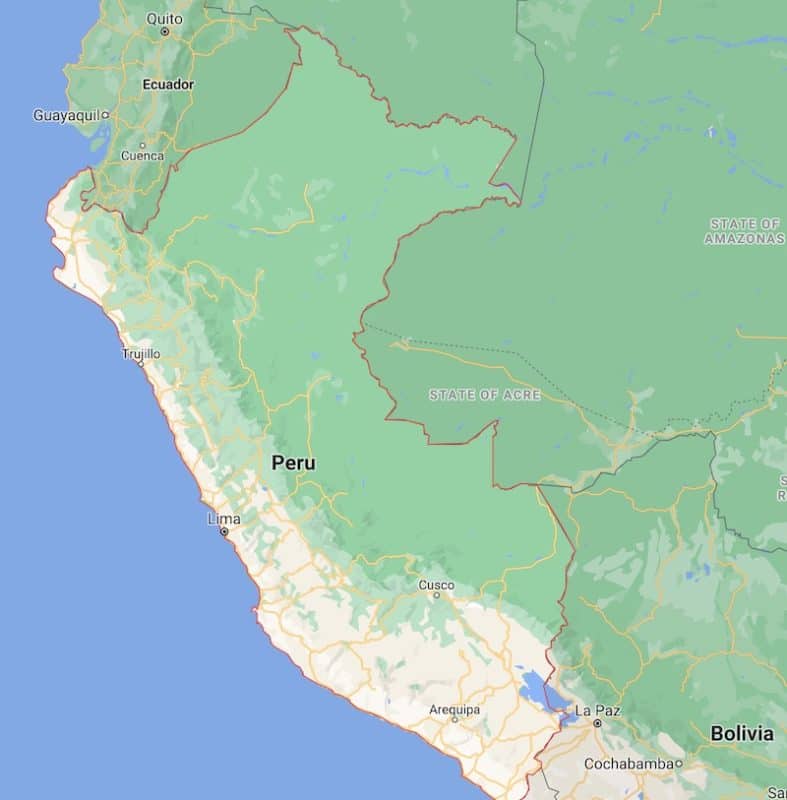
Click here for an interactive Google Map version of the above graphic.
Cusco Travel Guide
Plan the ultimate trip to Cusco with the help of these guides!
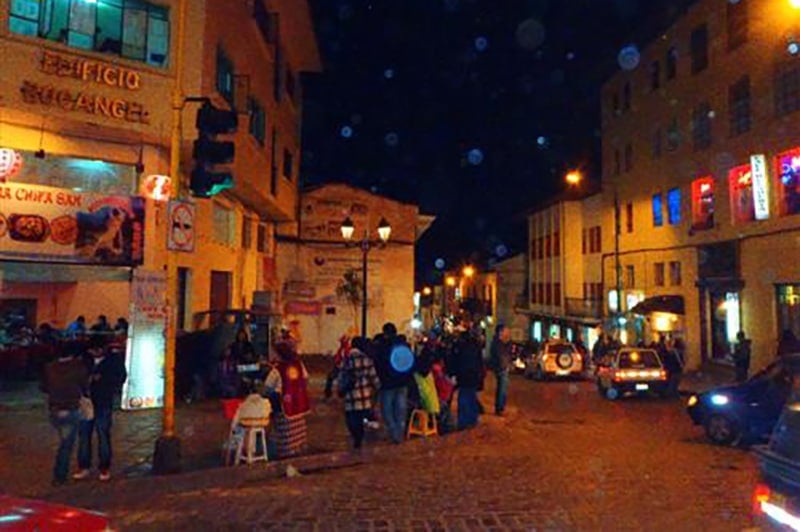
Hostel Review: Pariwana Backpacker, Cusco, Peru

Going Local In The Sacred Valley From Cusco, Peru
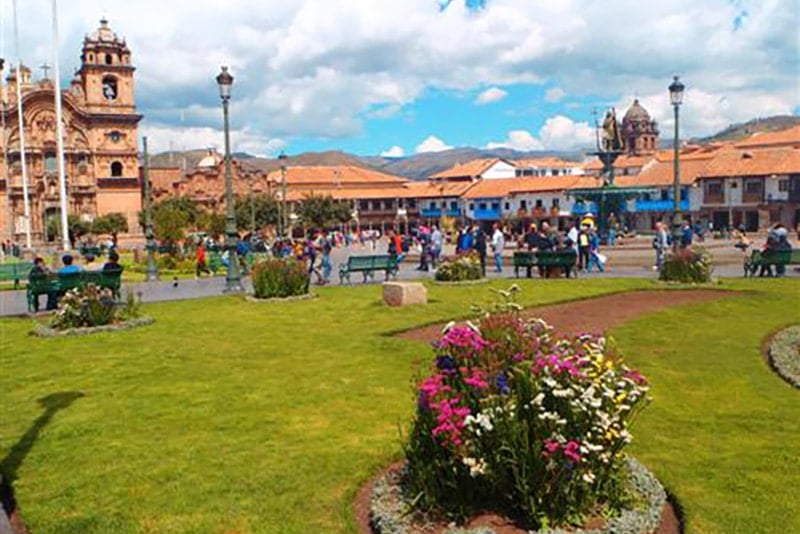
Tips For Traveling Cusco, Peru On A Budget
Inca Trail Travel Guide
Don’t miss the Ince Trail when traveling Peru !
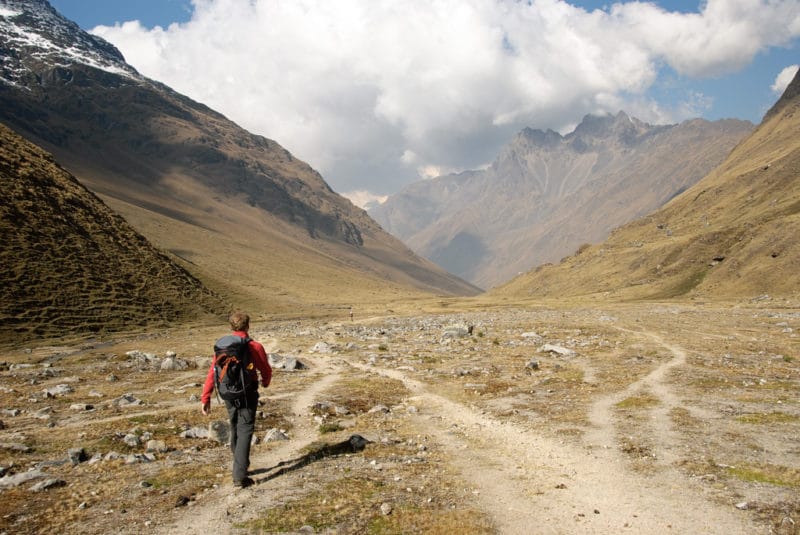
Peru Adventures: Everything You Need To Know About Hiking The Inca Trail
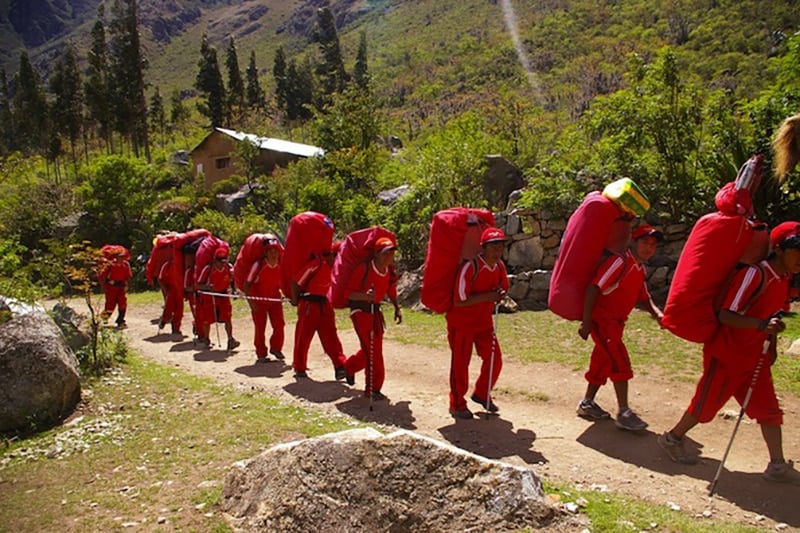
Notes On Responsible Tourism & Inca Trail Porters
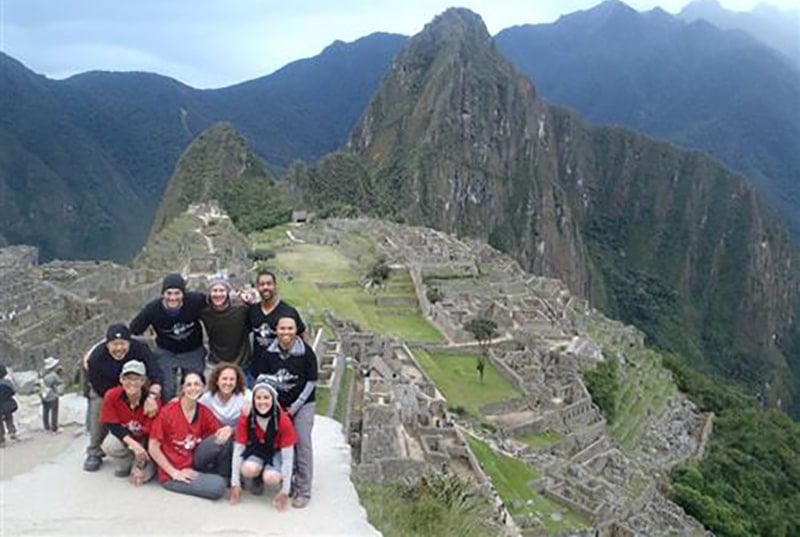
Going Back In Times On The Inca Trail In Peru
Lima Travel Guide
The following guides will help make your Lima Peru vacation memorable!
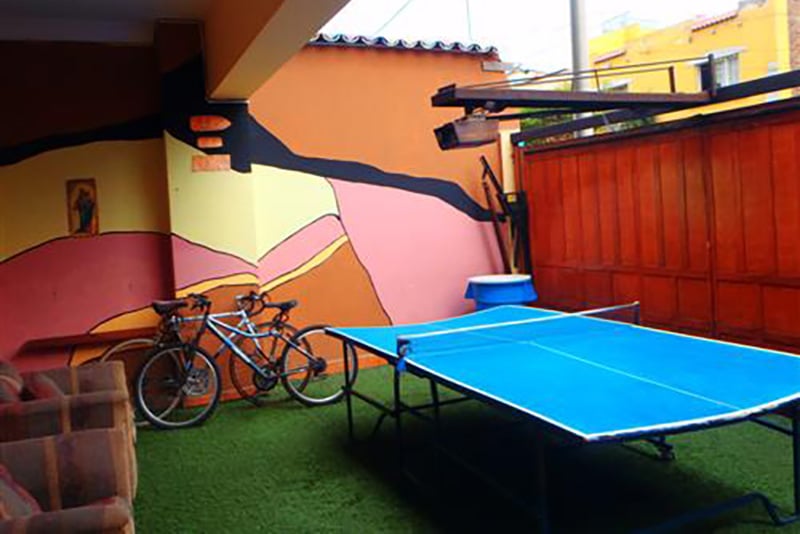
Hostel Review: Condor’s House In Lima, Peru
Other Peru Travel Destinations
Continue planning your trip to peru with:
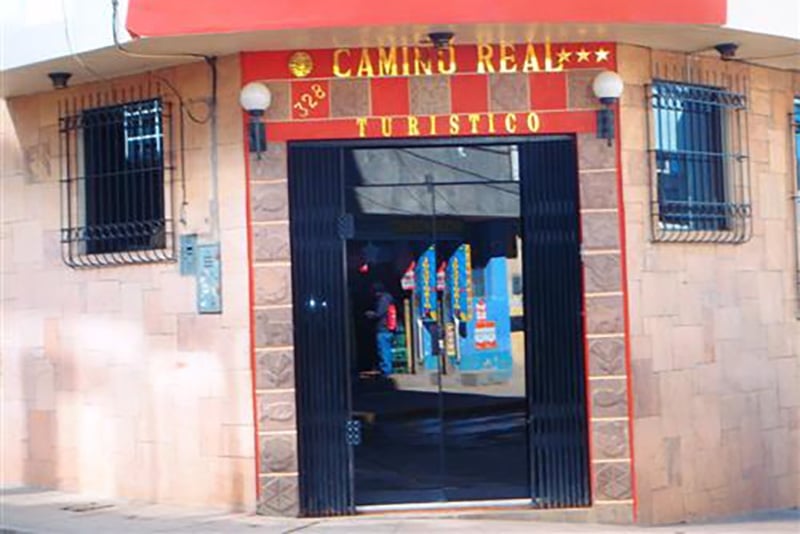
Hostel Review: Camino Real Turistico Hotel, Puno, Peru
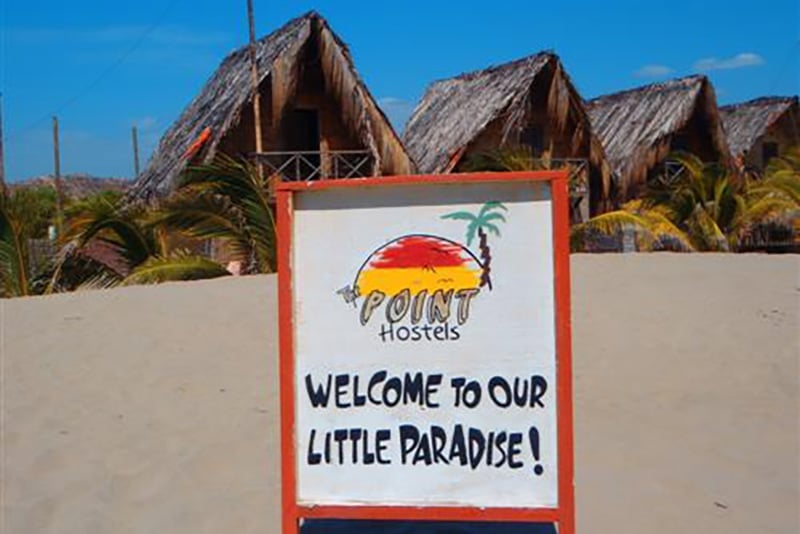
Hostel Review: The Point Mancora Beach, Mancora, Peru
Traveling In South America
These guides share Peru travel advice as well as tips for exploring South America in general!
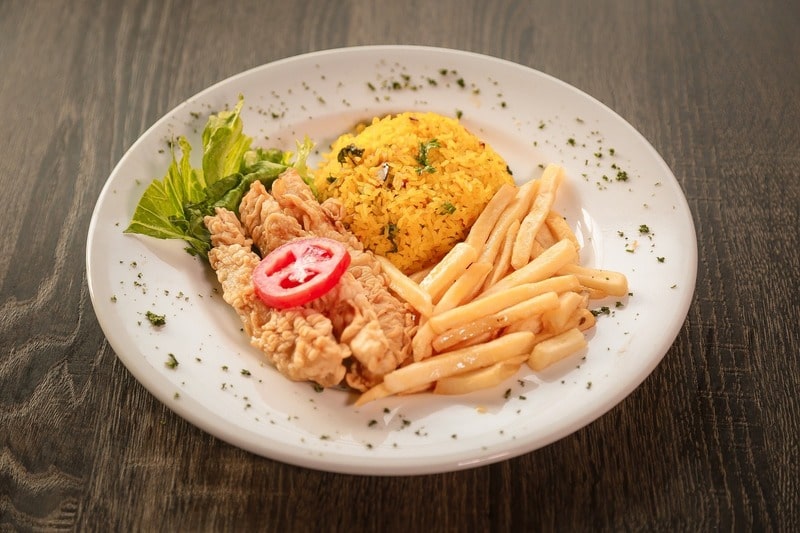
14 Essential Tips For Backpacking South America

My Most Ridiculous Bus Encounters Backpacking South America
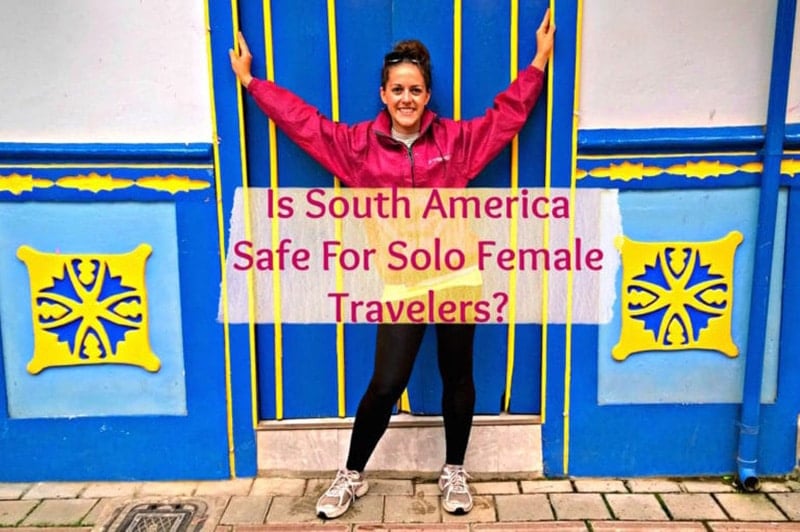
Is South America Safe For Solo Female Travelers?
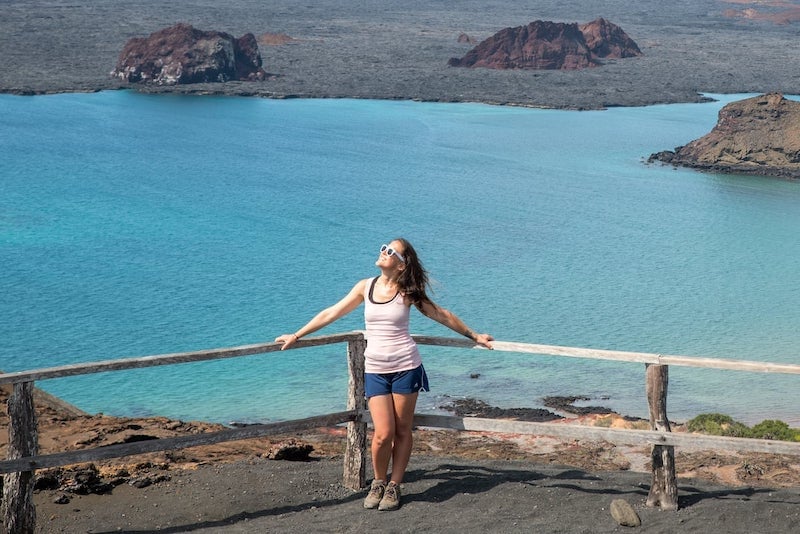
21 Best Places For Solo Travel In South America
Best Peru Tours
Explore local culture with a Peruvian tour guide through these unique excursions:
- Lima Ultimate Peruvian Food Tour
- 4-Day Trek to Machu Picchu Through the Inca Trail from Cusco
- Rainbow Mountain in One Day from Cusco
- ATV Tour to Moray, Maras, and Salt Flat in the Sacred Valley from Cusco
- 2-Day Tour: Sacred Valley and Machu Picchu by Train from Cusco
- Full Day Paracas Ica and Huacachina from Lima All Included
- Mysterious Nazca Lines, Overflight from Ica, Huacachina Oasis & Wine Tour from Lima
- Visit the Sea Lions in Palomino Islands in Lima from Callao
Peru Hotels
Click here to browse the best Peru travel hotels !
Prefer self-contained stays?
Click here to check out unique local rentals !
You can also use this map to search for local stays:
Peru Travel Insurance
It doesn’t matter if you’re traveling solo or with a group on a Peru tour. When visiting Peru — or any other country in the world — make sure to get travel insurance to protect your health and safety.
In my opinion, the best travel medical insurance for travelers is SafetyWing as they’ve got a large network and offer both short-term and long-term coverage — including coverage if you’re traveling for months as well as limited coverage in your home country).
Additionally, SafetyWing is budget-friendly and offers $250,000 worth of coverage with just one low overall deductible of $250.
With coverage, you’ll have peace of mind as you embark on your Peru travel itinerary.
Click my referral link here to price out travel insurance for your trip in just a few clicks .
Peru Travel Guide FAQ
Below, find answers to frequently asked questions about traveling in Peru .
Q: What are the best places to visit in Peru?
The most popular place to visit by far in Peru is Machu Picchu , the famous Inca city. Set high in the mountains above the Urubamba River, the ruins of this ancient city and the lush mountains that surround them make for an incredible sight.
The dry stone walls you’ll see around the archeological site date back to the mid-1400s and the city is considered one of the New Seven Wonders of the World.
You can easily access Machu Picchu by train or bus from one of the surrounding cities; though, if you’re a true adventurer, you can hike the Inca Trail , which winds through the mountains and terminates at Machu Picchu.
The hike takes about four days and must be done with a guide, but the sights along the trail are truly spectacular.
And while you’re in the area, spend some time in Cusco , a city full of architecture, cultural experiences, and museums that will help you learn more about Peru’s long history. Visit the Inca ruins at Sacsayhuaman, stroll through the gorgeous Plaza de Armas, and marvel at the Inca artifacts at the Museo Casa Concha.
Another great spot to visit is Lima , Peru’s capital. This city’s blend of Indigenous artifacts with gorgeous colonial architecture and a modern art scene make for a truly exciting destination that you won’t want to miss on your next trip.
Lima is home to some of the best-preserved examples of Spanish colonial architecture in South America, from the city’s Plaza de Armas to the Convento de San Francisco.
For a more modern look at the city, head to the Parque del Amor, featuring colorful mosaic works, romantic sculptures, and breathtaking views of the ocean.
Speaking of the ocean, you’ll want to head to the seaside neighborhood of Miraflores for some delicious New Peruvian food at some of the city’s top restaurants.
And you won’t want to miss the Magic Water Tour in the Park of the Reserve, the largest fountain complex in the world. Here you can catch amazing laser and light shows on some of the biggest fountains every night.
Peru is also home to part of Lake Titicaca , the largest lake in South America. This sparkling blue lake is always a tourist favorite, offering opportunities for both exploration and relaxation.
The lakeside city of Puno is a great “home base” for any trip to Lake Titicaca, offering plenty of its own historic charm and easy access to some of the lake’s top attractions, like the Uros Islands. These manmade floating reed islands are home to an entire community of people who have lived on the islands for hundreds of years.
Today, you can visit the islands and learn more about the Uru people and their way of life.
Also worth visiting are Amantani Island and Taquile Island, whose individual communities have helped preserve the traditions and crafts of Indigenous peoples for centuries.
Q: Is Peru expensive for tourists?
While Peru is a very popular travel destination, it’s still fairly inexpensive to visit. Cheap food options are ubiquitous, rideshares are much less expensive than here than they are elsewhere and it’s pretty easy to find comfortable, budget-friendly accommodations.
The average traveler spends about $44 USD per day on food, accommodations, transportation, activities, and other travel expenses.
Q: What is the best way to travel around Peru?
The bus is generally the best way to travel around Peru. Several coach bus services run routes between cities and regions, some of which will allow you to hop on and hop off at different destinations.
Bus trips can take some time (up to 21 hours in some cases) but you’ll get some great views of the countryside while traveling in comfort. A 10-hour journey will cost you around $12 USD one way, so these trips won’t eat up too much of your budget.
Flying is probably the most efficient way to get around Peru, with domestic airlines offering inexpensive, short flights between cities.
Many of these flights are not direct, though, and you may need to take a layover in a capital city like Lima; however, if you’re short on time, planes are a great way to maximize your time in Peru.
Q: Is Peru safe for travel?
Peru is a pretty safe destination for travelers. Violent crime rates are fairly low, though petty crime like pickpocketing and bag snatching remains an issue. You’ll want to avoid displaying any obvious signs of wealth while traveling in Peru and make sure your valuables are in a safe place and out of sight.
It’s also important to stay vigilant in crowded spaces to avoid pickpocketing and never keep anything valuable in your back pockets.
As with other destinations, it’s also a good idea to avoid traveling alone at night in Peru just to be safe.
Q: What do I need to know before going to Peru?
If you’re planning on visiting Machu Picchu during your trip to Peru (which, let’s be honest, you probably are), book your tickets and trains far in advance.
During the country’s high season (July through September), train tickets and admission to the ancient city book up fast and you won’t want to be caught without them.
Consider booking both as soon as you make the decision to visit the country and make sure you only buy from legitimate websites.
The same goes for Inca Trail tours; the sooner you can book your guide or tour group, the better. Also, make sure to book with a company that respects the rights of Inca Trail porters .
If you don’t currently live at a high altitude, Peru’s altitude — particularly around Machu Picchu — may be a bit of a shock to your system. You may actually want to visit Machu Picchu before visiting Cusco, as the ancient city sits at a lower altitude than Cusco and will allow you to adjust to the thin air more gradually.
If you’re concerned about altitude sickness, talk to your doctor before your trip; they might be able to suggest some medications or tips for staying healthy during your trip. They will also be able to prescribe any shots or medications you may need if you’re visiting the Amazon or other areas with a higher risk for diseases like malaria and yellow fever.
You’ll also want to carry cash while traveling through Peru. Cash is king in Peru and many businesses do not accept credit cards.
If you’re visiting multiple cities, make sure there’s an ATM near your next destination before you leave so that you’re not stuck in a new place without cash.
You also might want to keep some cash locked away in your accommodation so that you have a backup stash just in case. Just make sure that stash is in a safe place where only you can find it!
Q: How many days should you spend in Peru?
Most experts suggest spending about 7 to 10 days in Peru. This will give you enough time to explore the historic Inca sites of the Sacred Valley, spend some time in Cusco, explore Lima, and even spend a day or two at Lake Titicaca.
Q: What is the best month to visit Peru?
The best time to visit Peru is during the country’s dry season, between May and October. The weather during these months is generally pleasant and sunny, with temperatures in the 60s and 70s Fahrenheit.
This is also the country’s peak season for tourism, so be sure to book hotels and reservations well in advance if you plan to travel during this time.
Q: Do I need a Peru travel visa?
Travelers from the United States , Canada , the United Kindgom, the European Union , Australia , and many other countries do not need a visa to enter Peru.
Citizens from most South American countries, including Argentina , Bolivia , Brazil, Colombia , Chile , Ecuador , Paraguay, and Uruguay simply need a national ID to enter the country.
It’s recommended to view your country’s Peru International Travel Information page for the most up-to-date information on entry and exit rules and Peru Travel Requirements. You can also contact the Consulate General of Peru.
Q: Where is Peru?
Peru is located in western South America. It shares borders with Ecuador and Colombia (north), Brazil (east), Bolivia (southeast), and Chile (south).
Q: Are credit cards accepted in Peru?
Credit cards — particularly Visa and Mastercard — are sometimes accepted around Peru in tourist areas, though you’ll definitely want to carry cash.
Q: Can you drink the tap water in Peru?
The tap water is not safe to drink in Peru.
Q: What is the local currency in Peru?
The local currency in Peru is the Sol (S/).
What would you add to this Peru travel guide?

Enjoyed this ultimate Peru travel guide? Pin it for later!
- Food & Drink
What to pack
- City Guides
- Travel Hacks
- New Zealand
- North America
- Latin America
Peru travel guide
By Manasi Gadgil
Product copywriter for Contiki, Manasi is a wandering writer with an unfathomable love for life, but specifically food, music, and photography. Currently based in London.
Published on Jun 27, 2024 | 8 min
Copied to clipboard!
Table of Contents
Best time to visit peru, best things to do in peru, top festivals in peru, top museums in peru, what to eat in peru.
Intriguing history, incredible landscapes & impeccable cuisine – Peru will leave you completely captivated with the Pisco Sour life. The glorious volcanoes in Arequipa, the bustling streets of Lima, the sandstone cliffs of the Colca Canyon, the Indigenous communities of Lake Titicaca, and of course, Machu Picchu – there’s something for everyone here. So, if this breathtaking destination has caught your attention and you’re planning a Peru trip , we’ve put together a Peru travel guide with all the info you’ll need to know before you head out for the adventure of your life!
Visas: Generally, citizens of the US, UK, Australia, and New Zealand don’t need a visa to enter Peru. But it’s a good idea to check if you need a visa well in advance. Check out our visa guide for some handy info.
Currency: Peru’s currency is the Nuevo Sol (or just Sol, as the locals call it). US dollars are also accepted in many places in Peru. ATMs are generally readily available in the cities. But you won’t find one parked up next to Machu Picchu… So don’t forget to take cash with you on your trip. (Like Peru Panorama !)
Altitude: If you’re planning on visiting Cusco, Lake Titicaca or Machu Picchu – you might experience altitude sickness. So please bring relevant medication & give yourself time to get acclimated to the mountains!
Tipping: Tipping in Peru is appreciated but not expected. Generally, 10-15% of your bill is customary.
Tap water: It’s probably best to avoid tap water in Peru. We recommend that you stick to drinking bottled water. Or even better, carry a reusable water bottle with you!
Image source: Craig Howes
Let’s get one thing straight: no matter what time of the year you’re planning to visit Peru, you’re gonna have a good time. But vague info is not what a Peru travel guide is for, so here are some details you should know about the best time to visit Peru :
- Between May & September is the dry season which is the best time to visit Peru because you’ll get clear skies and wonderful weather for hiking.
- The wet season is usually mid-December to March. Heads up! The Inca trail usually closes in February due to heavy rains – so if that’s on your bucket list, please plan your trip accordingly.
- Summer in coastal Peru – and more specifically Lima – lasts from November to March, giving you warm temps that are great for swimming.
Image source: Contiki
These are some of the must-do things, and must-see places in Peru :
See Machu Picchu
If you visit Peru, and do just ONE thing – it has to be visiting the Incan ruins at Machu Picchu . That’s just how iconic it is. You can choose to hike up to the entry point (with local guides, ofc), or opt for a relaxing train ride with lush scenery.
Sail over Lake Titicaca
Riding a boat over the world’s highest navigable lake (3657 metres up in the mountains!) is nothing short of extraordinary. You’ll be surrounded by magnificent golden landscapes, while floating over a vast blue lake. To top it all off – the boats here are pretty iconic too.
Discover the Sacred Valley
Exploring the heartland of the Incan empire is a magical experience in itself. But there’s more – you get to try local Chicha de Jora AKA ‘corn beer’, check out Andean weaving traditions, and visit the vibrant markets (and get some Peruvian souvenirs too!)
Take a Peruvian cooking class
Want a taste of what Peruvian cuisine is like? Well, there’s no better way than taking a cooking class where you’ll learn to make classic dishes from the locals in Cusco – and then of course, eat it all too!
Hike the Rainbow Mountain
There’s a literal mountain that looks like a rainbow on our planet. Why would anyone wanna miss out on seeing such a natural wonder? The best way to experience this mountain is to hike up the colourful contours of Rainbow Mountain from Cusco.
Fiesta Into Raymi
This festival is held every June in Sacsayhuaman to celebrate the winter solstice with Incan traditions . ‘Inti’ – the Sun God is worshipped and feasting, music, and dancing are all part of the celebrations. It’s a must-see festival for sure.
Peru’s version of Day of the Dead (Día de los Muertos) begins at the start of November. It’s a week-long festival with varied celebrations to honour the legendary birth of one Manco Cápac – said to be the first Inca. Wear your most vibrant outfit, because the locals certainly will.
Fiesta de la Cruz
At the start of May each year, locals parade around Peru carrying hundreds of crosses from village to village – hence the name ‘The Festival of the Cross’. The celebration is grand, with fireworks, vibrant colours and traditional wear being a part of the show.
Qoyllur Rit’i
The Andean people really know their stars. This traditional four-day pilgrimage started as a celebration of the mid-winter disappearance of the Pleiades constellation. Today, it’s done in Sinkara Valley to honour their ancestors.
La Fiesta Candelaria
There’s a reason why it is the biggest festival in Peru. Over two weeks starting in February, you’ll see 30,000 dancers and 8,000 musicians (all dressed in traditional clothing) celebrating “Mamacha Candelaria”, the image of the patron saint of Puno. The energy is simply contagious.
Image source: McKayla Crump / unsplash
Larco Museum
Wanna know more about Peru’s history? From the pre-Columbian era? This museum housed in an 18-century viceroy building is the place to go. If you’ve got some free time in Lima , you know what to do!
The Museum of Italian Art Lima
As the name suggests, this museum is home to over 125 works of art by famous and not-so-famous Italian artists. The museum is a tribute to the country’s generous Italian community.
Andean Sanctuaries
Back in 1995, a couple of archaeologists discovered a fully preserved mummy in ice. They named her Ice Maiden of Ampato – or Mummy Jaunita. This museum is now a research centre dedicated to her. Don’t miss it out when you’re around Arequipa.
Conjunto Monumental de Belen
The Belén Monumental Complex is located in the historic centre of Cajamarca – a remote town in northern Peru. All the buildings here are made with volcanic stones & are some of the finest examples of colonial architecture.
Brüning Museum
This stark modernist building is dedicated to the German researcher Hans Heinrich Brüning, who amassed hundreds of Peruvian artefacts on a trip to Peru in the late 19th century.
In simple words: they’re Ox heart skewers, not very different from your regular kebabs. Beef heart fillets are marinated in spices and red wine vinegar, cooked on charcoal and then served hot with roast potatoes and spicy sauce or peanut llajua. Smokey, and simply delicious.
Lomo Soltado
This smoky, salty dish is made by stir-frying beef in a soy sauce mix and served with fresh fries and steamed white rice. It’s a local favourite that was inspired by the food made by Chinese immigrants in Peru. Here’s an authentic Lomo Saltado recipe if you wanna give it a shot!
Causa rellena
Love potatoes? How about a layered potato cake? (Kinda). You’ll love Cause rellena. Layers of mash, chicken, tuna, avocado and hard-boiled egg make this one of the most comforting and indulgent dishes in Peruvian cuisine.
Any Peru travel guide would be incomplete without the mention of this dish. Essentially just raw fish, ‘cooked’ in citrus juice, Ceviche is Peru’s national dish. It’s usually served with creamy sweet potatoes, freshly sliced onions, and corn. Refreshing and tangy, it’s a must-try Peruvian classic.
These rings of goodness are sweet treats similar to churros. They’re served with a syrup dip and made from pumpkin, chia or quinoa instead of flour. Best part? They’re vegan!
Image source: Ashim D’Silva / unsplash
Lightweight clothes: A couple of loose t-shirts and trousers should do. And layers are key – the weather changes according to the altitude and temperatures tend to drop in the Inca trail.
Camera: Believe us. You’ll be taking some seriously breath-taking photos.
Torch: There may be some instances when there’s no electricity (especially in the rural areas). Plus, it’s always good to have a torch when you’re hiking.
Hiking boots: An obvious one, really. You wanna be at optimal comfort when you check out the incredible mountainous wonders in Peru.
Kindle: If you’re travelling in Peru by bus, you’re gonna have a few quiet hours to yourself. So why not keep a Kindle with you and dive into a world of books?
Bug spray: Peru’s home to some of the deadliest insects and arachnids in the world. So listen to your travel guide! But don’t skimp on your sense of adventure…
12 must-try Peruvian dishes
20 best places to visit in peru, 7 best peru experiences you have to add to your bucket list, stop dreaming and make sh*t happen.
Peruvian Highlights
Ultimate Inca Trail
Our website uses cookies to ensure you have the best experience, showing content and offers that are most relevant to you. To learn more about this, see our Cookie Policy.
Combined Shape .st0{fill-rule:evenodd;clip-rule:evenodd;fill:#fff} region-beach-cities-lax region-downtown region-hollywood region-valley region-westside .st0{fill-rule:evenodd;clip-rule:evenodd;fill:#fff} SMS Main navigation Things to Do Attractions & Tours Arts & Culture Outdoors & Wellness Shopping Budget Family Hidden Gems Luxury Pet-Friendly Eat & Drink Bars Clubs Dine LA Restaurant Week Restaurants Business Spotlight Find Events Itineraries Where to Stay Celebrate LA Heritage AAPI Heritage Black LA Latino Heritage LGBTQ+ Tourist Information Meetings About LA Tourism Travel Trade Membership Business Spotlight Media Research Careers Today's must read Hidden Gems of Los Angeles Log in Search Search Sports 2024 COPA AMERICA Live Share Been There Login Register My Next Trip Login Register $80-$451 | Jun 30 - Aug 31, 2024 | 5:00PM - 8:00PM SoFi Stadium 1001 Stadium Dr, Inglewood 90301 The 2024 edition of Copa America is underway as Argentina looks to win consecutive titles in what could be Lionel Messi's final
Discover LA Newsletter

IMAGES
VIDEO
COMMENTS
If your travel plans in Peru include outdoor activities, take these steps to stay safe and healthy during your trip. Stay alert to changing weather conditions and adjust your plans if conditions become unsafe. Prepare for activities by wearing the right clothes and packing protective items, such as bug spray, sunscreen, and a basic first aid kit.
Travel Advisory. November 15, 2023. Peru - Level 2: Exercise Increased Caution. K U T C. Last Update: Reissued with updates to crime information. Exercise increased caution due to crime, civil unrest, and the possibility of kidnapping. Some areas have increased risk. Read the entire Travel Advisory. Do not travel to:
FCDO travel advice for Peru. Includes safety and security, insurance, entry requirements and legal differences. ... Guidance and regulation. Detailed guidance, regulations and rules.
Call us in Washington, D.C. at 1-888-407-4747 (toll-free in the United States and Canada) or 1-202-501-4444 (from all other countries) from 8:00 a.m. to 8:00 p.m., Eastern Standard Time, Monday through Friday (except U.S. federal holidays). See the State Department's travel website for the Worldwide Caution and Travel Advisories.
Build a memorable collection. Get to the heart of Peru with one of our in-depth, award-winning guidebooks, covering maps, itineraries, and expert guidance. Peru. $ 25.99. South America. $ 29.99. in partnership with getyourguide.
A Travel Guide to Peru with ️ Travel Itineraries, ️ Top places to visit in 2024, ️ Safety, and more! Peru. Travel Guide. Incan wonders at Machu Picchu, the colorful stripes of Rainbow Mountain, and the wild sounds of the Amazon rainforest. Itineraries; Best places; Map;
If you need emergency medical assistance during your trip in Lima, dial one of the following numbers: 0051 1 225 4040 (Lima - Alerta Med), 0051 1 467 4861 (Lima - Clave 5), 0051 1 241 1911 (Lima ...
Passport validity requirements. To enter Peru, your passport must have an 'expiry date' at least 6 months after the date you arrive. Check with your travel provider that your passport and ...
Throughout Peru you can find marvelous vestiges of the past that astonish the world's travelers. Machu Picchu is a must-see destination, but Peru is also home to Kuelap and Chavin de Huantar, Caral and Chan Chan, the Nasca Lines and Sipan … and we could name even more! See more. Cultural History.
Before you travel, check with your transportation company about passport requirements. Its rules on passport validity may be more stringent than the country's entry rules. Regular Canadian passport. Your passport must be valid for at least 6 months beyond the date you expect to leave Peru. Passport for official travel. Different entry rules ...
Peru is a country located in South America. Lima is the capital and it is a country known for its high mountains, exceptional Incan ruins, culture, colors and landscapes. This Peru travel guide is laid out to help you plan the ultimate trip to this country.
Costs of Traveling in Peru. Travel on a budget in Peru, from $340 − $450 USD weekly per person, mid-range $1000 − $2070 USD, and high-end from $2030 − $2930 USD. However, costs depend on factors like accommodation, transportation, and activities. We did not include flights. Check flight prices here.
Peru Travel Costs. Accommodation - A bed in a 4-6-bed dorm costs 35-65 PEN while a bed in a dorm with 10 or more beds generally costs 32-38 PEN. A private room costs 115-170 PEN per night. Free Wi-Fi is standard and most hostels also have a kitchen or include free breakfast.
Get information on Peru Travel Guide - Expert Picks for your Vacation hotels, restaurants, entertainment, shopping, sightseeing, and activities. Read the Fodor's reviews, or post your own.
Peru Travel Guide. While Machu Picchu and all-things-Inca deservedly make South America's third largest country a bucket-list staple, there are a world of Peruvian experiences beyond the ancient ...
FCDO travel advice for Peru. Includes safety and security, insurance, entry requirements and legal differences. ... There is guidance to support you if you have been sexually assaulted or raped in ...
E South America Travel Experts.First founded in 1999, SouthAmerica.travel celebrates 20+ years of delivering expert travel planning throughout South A. Essential PERU TRAVEL. GUIDE17Want m. / Canada 1 (888) 900-50. Europe + 44 (24) 7542 60.
Fast Facts about Peru. Peruvian power voltage is 200 V 60 Hz; Power sockets A, B & C. The Peruvian currency is the Peruvian Nuevo Sol (PEN) and is around 1 PEN for 0.33 USD. Two-thirds of Peru is covered in prime Amazon Rain Forest. Bathroom breaks can be quite an adventure in Peru.
Peru Travel Guide. After spending three months fundraising for Peruvian Hearts, an all-girls orphanage in Cusco, my friend and I embarked on an epic adventure to Peru to visit the orphanage and explore the beautiful country. We spent four days trekking the Inca Trail to Machu Picchu which was a major bucket list trip for me.
Peru Travel Guide. Our Peru Travel Guide is your one-stop-shop for everything in Peru. From must-see things to do and historical insights to FAQs, each guide features the country's top destinations along with all the inspiration and details you'll need to help plan your dream trip. Explore Peru's vast landscapes from the depths of the Amazon ...
Our Peru travel guide has more detailed information on getting to Peru: flights into Peru, buses and boats from neighbouring countries. How to get around Peru. The quickest way to travel long distances in Peru is to take a domestic flight. It can really save you time, and many cities are within a two-hour flight of Lima.
Explore local culture with a Peruvian tour guide through these unique excursions: Lima Ultimate Peruvian Food Tour. 4-Day Trek to Machu Picchu Through the Inca Trail from Cusco. Rainbow Mountain in One Day from Cusco. ATV Tour to Moray, Maras, and Salt Flat in the Sacred Valley from Cusco. 2-Day Tour: Sacred Valley and Machu Picchu by Train ...
Any Peru travel guide would be incomplete without the mention of this dish. Essentially just raw fish, 'cooked' in citrus juice, Ceviche is Peru's national dish. It's usually served with creamy sweet potatoes, freshly sliced onions, and corn. Refreshing and tangy, it's a must-try Peruvian classic. Picarones
Group A Place Team MP W D L GF GA GD Pts 1 Argentina 1 1 0 0 2 0 +2 3 2 Peru 1 0 1 0 0 0 0 1 3 Chile 1 0 1 0 0 0 0 1 4 Canada 1 0 0 1 0 2 -2 0 June 20 Argentina 2, Canada 0 June 21 Peru 0, Chile 0 June 25 Peru vs. Canada, 6 p.m. on on FS1 Chile vs. Argentina, 9 p.m. on FS1 June 29 Argentina vs. Peru, 8 p.m. on FS1 Canada vs. Chile, 8 p.m. on ...